Iconic Styles
BY HEEEY
Over almost three years of relentless exploration, QQL parametric artists have rendered millions of seeds. Many of these seeds share emergent properties that, when side by side, reveal distinct visual styles. These styles are easily identifiable and help in describing the output space of the algorithm.
We’ve compiled a selection of some of the most distinct styles discovered and explored by the QQL community. Some have become so iconic they appear in over ten minted QQLs, while others remain rare, their unique visual traits yet to be captured in the permanent collection.
Because these properties may only partially define a seed, it’s possible that it may fit into more than one style. Likewise, the same parameters can be used to potentially generate seeds in multiple styles.
Order / Disorder
Order / Disorder is one of the key conceptual artifacts of Tyler Hobbs’ artistic trajectory where he explores the duality of human intent versus computer aesthetics. Looking at Tyler’s QQL mints we find, mostly, seeds that have a balance of order, usually through a Formation structure that produces a regular grid of rings, and disorder, where a subtle composition distortion is achieved through Low turbulence.
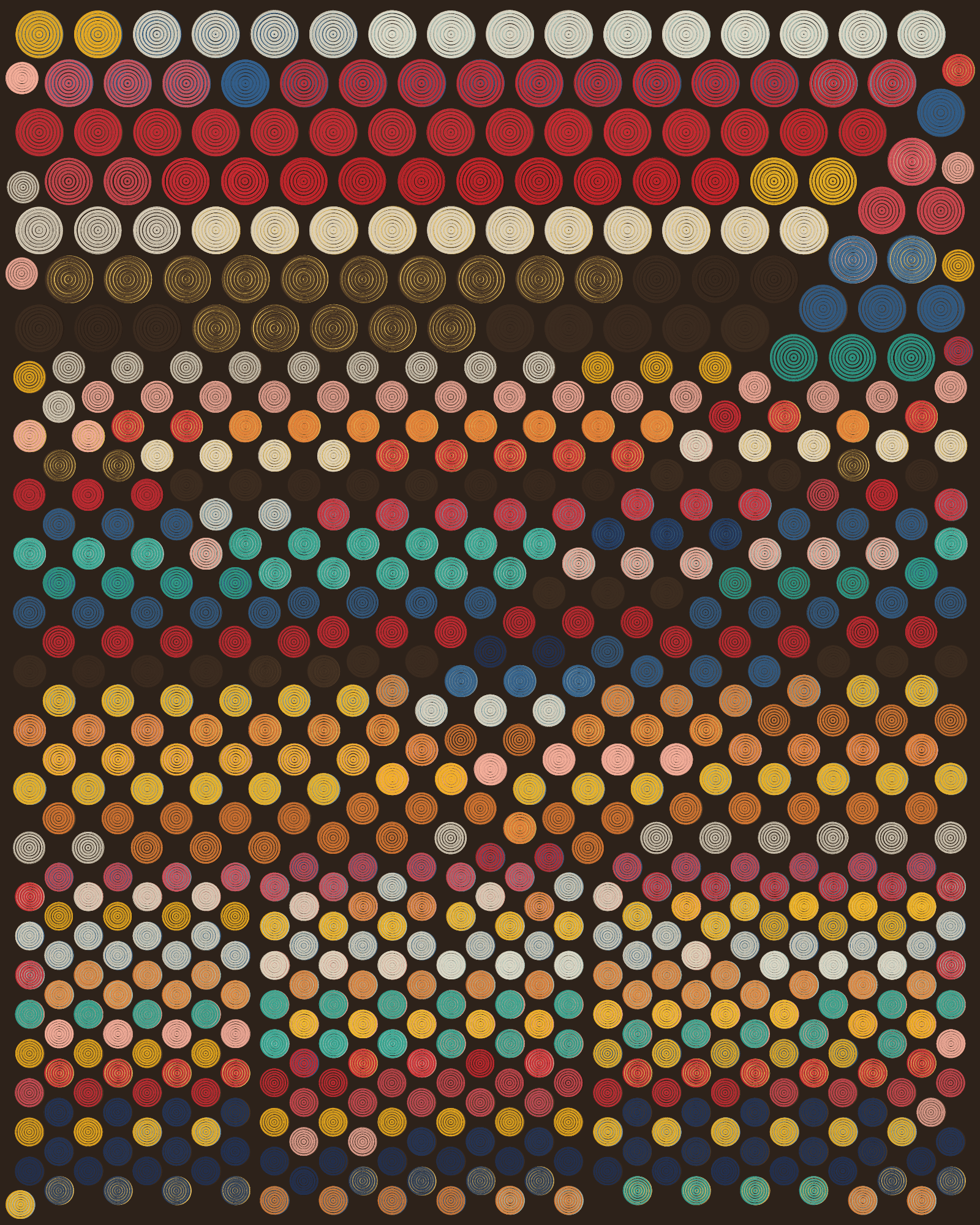
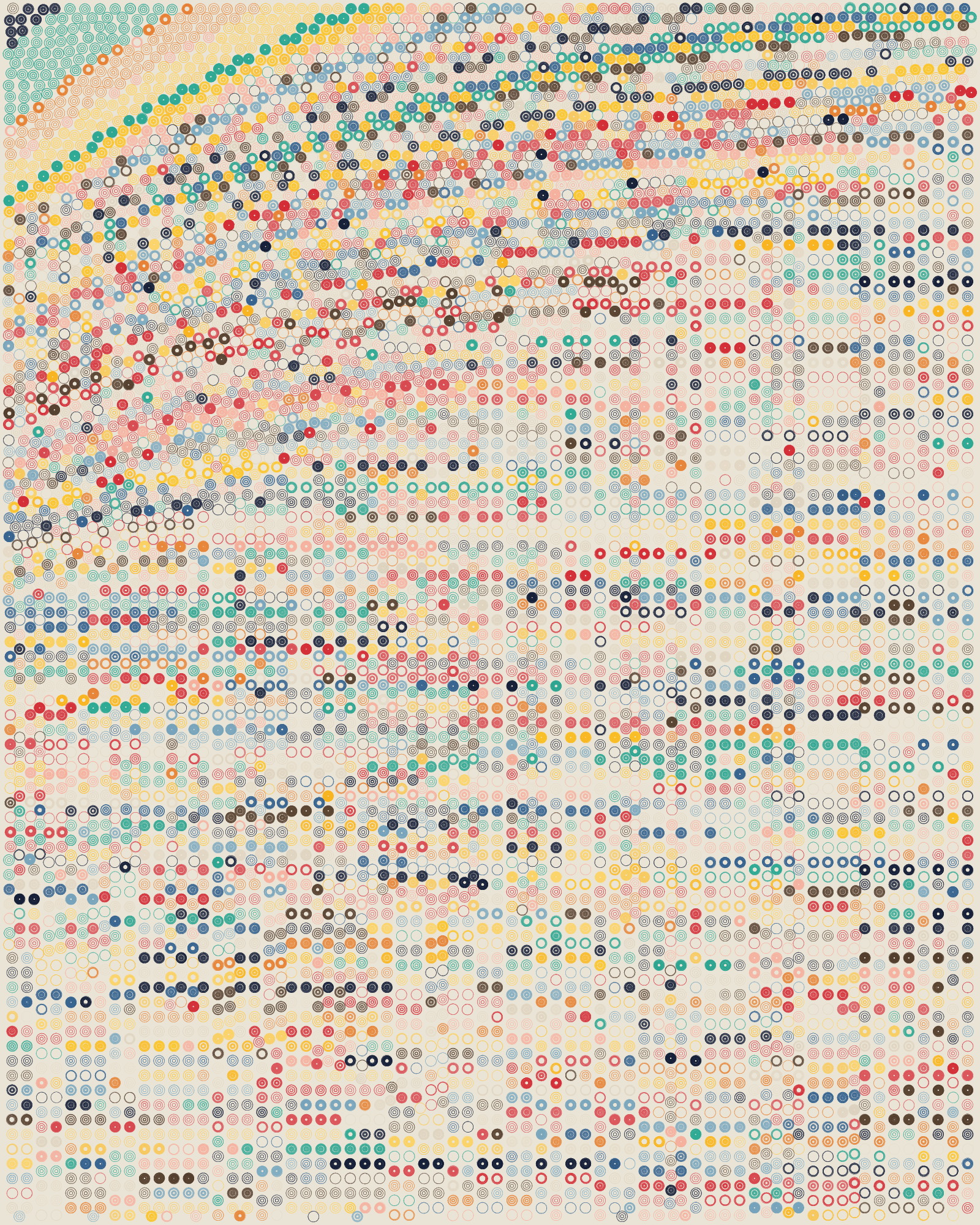
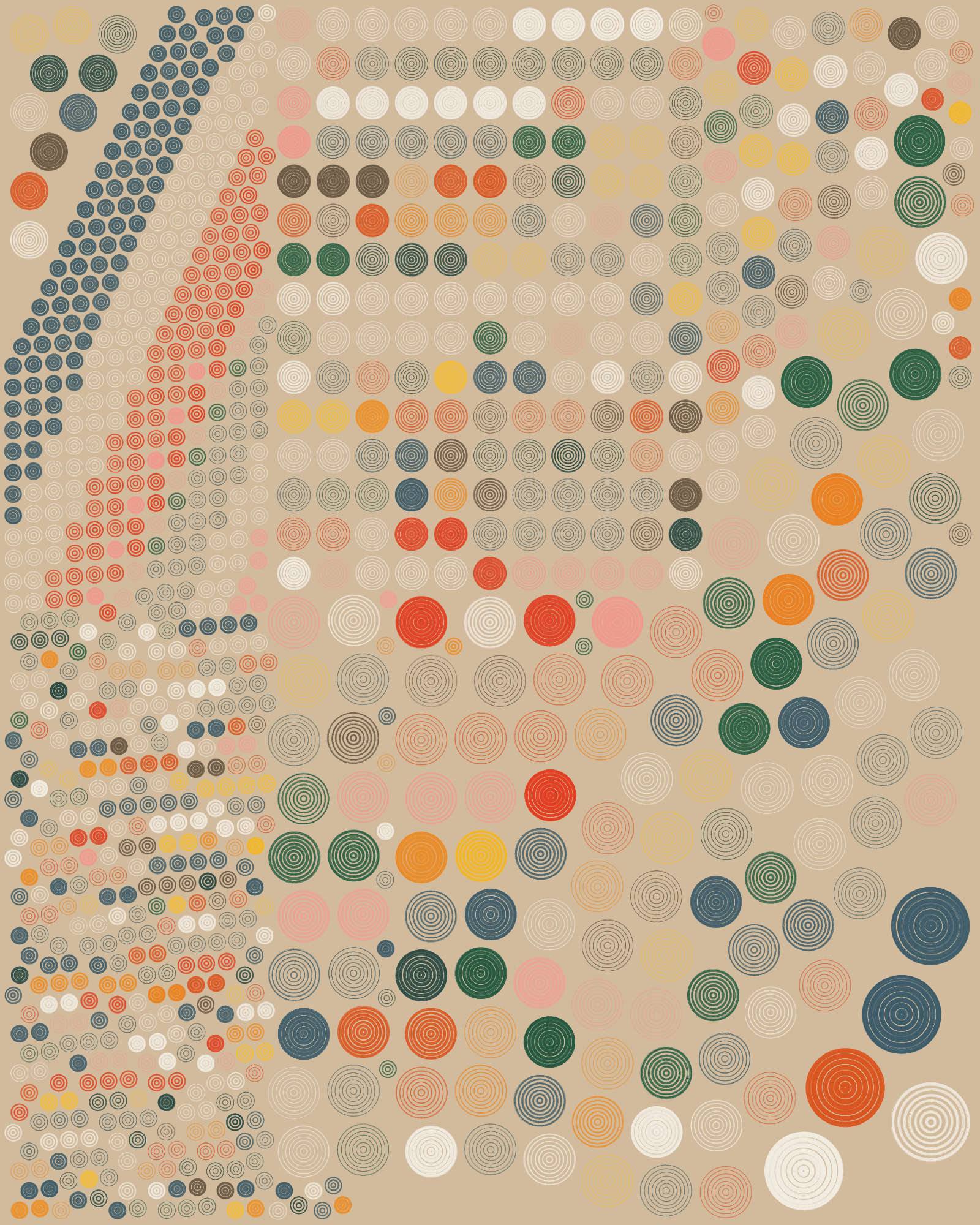
EEAAO (Everything, everywhere, all at once)
EEAAO seeds are seeds where everything happens side by side, all in one place. We need a Formation structure with a grid of at least three by three distinguishable groups. More groups can work beautifully, too.
Each group of rings needs to be unique, and for this reason we look at choosing traits that maximize the chances for this to happen, namely Medium, Wild, Mixed thickness rings with 1, 3, 7 bands. Vertical or Explosive direction, paired with High turbulence, will add the chance for small-ring groups to expand into sinuous paths that beautifully clash with the strongly present groups of larger rings.

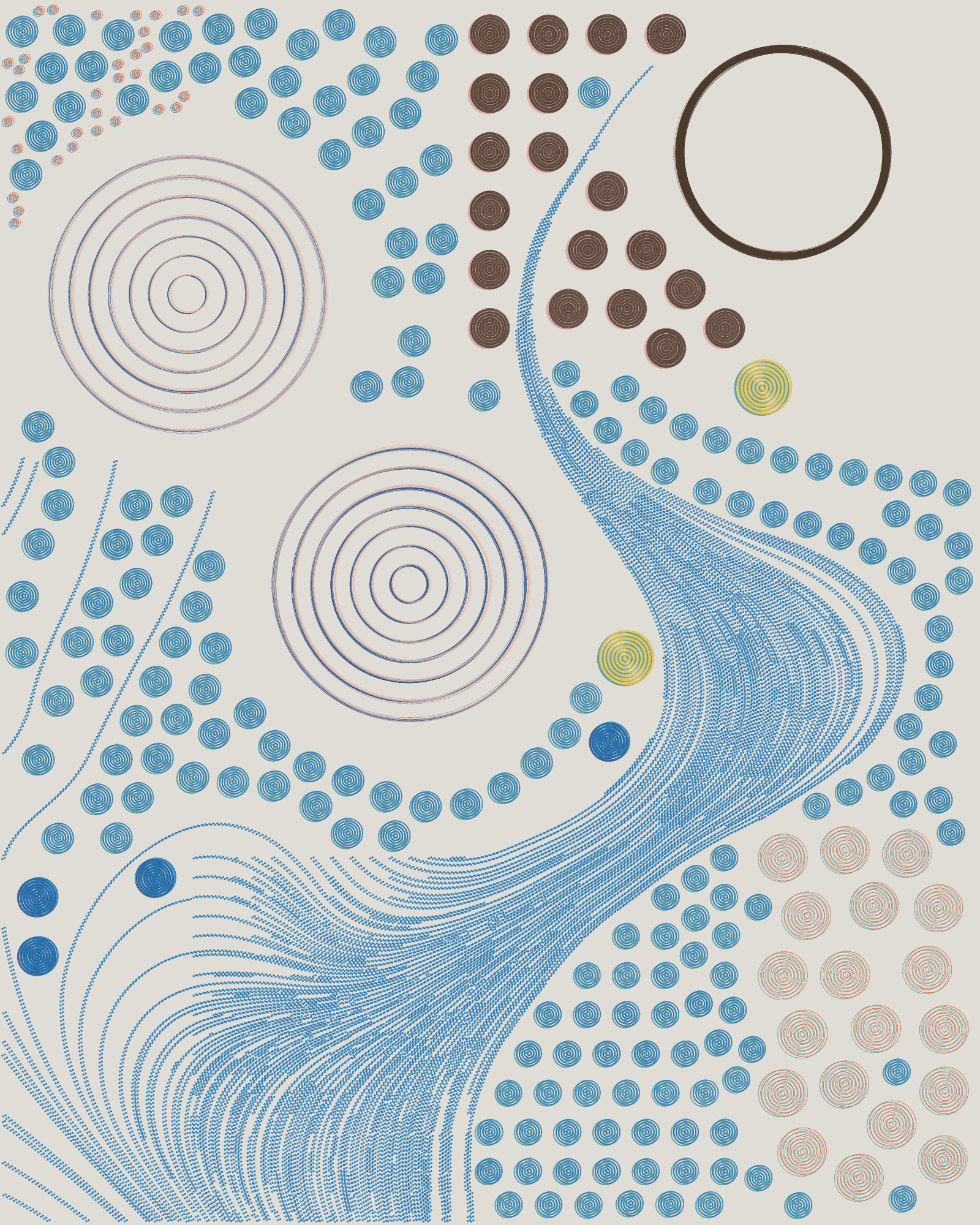
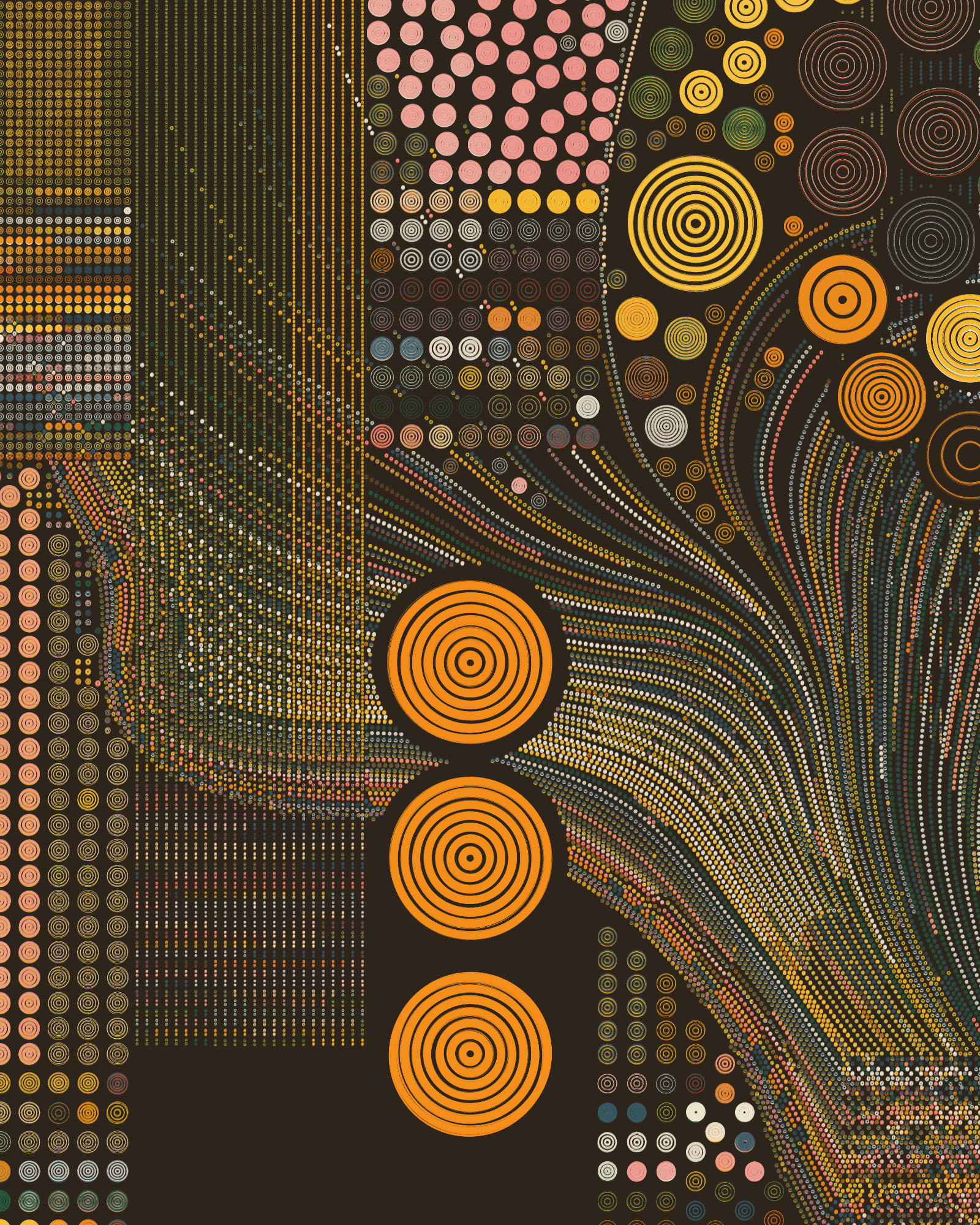
Recursion
In QQL, we can understand Recursion as the repetition of linear patterns. These patterns will emerge as areas of increasing density, usually in single-group Formation seeds. The simplest way to reproduce these patterns is through Small, Dense rings and Random Linear direction seeds with No turbulence, although using other Linear directions with Low turbulence may produce a similar result too.
These interesting effects are achieved by having a slight misalignment between the flow field direction and the angle between start points. The area towards which flow lines are painted is the densest, as flow lines emerging from all start points grow towards there. Farther flow lines follow their paths in isolation until they merge with previously drawn ones.
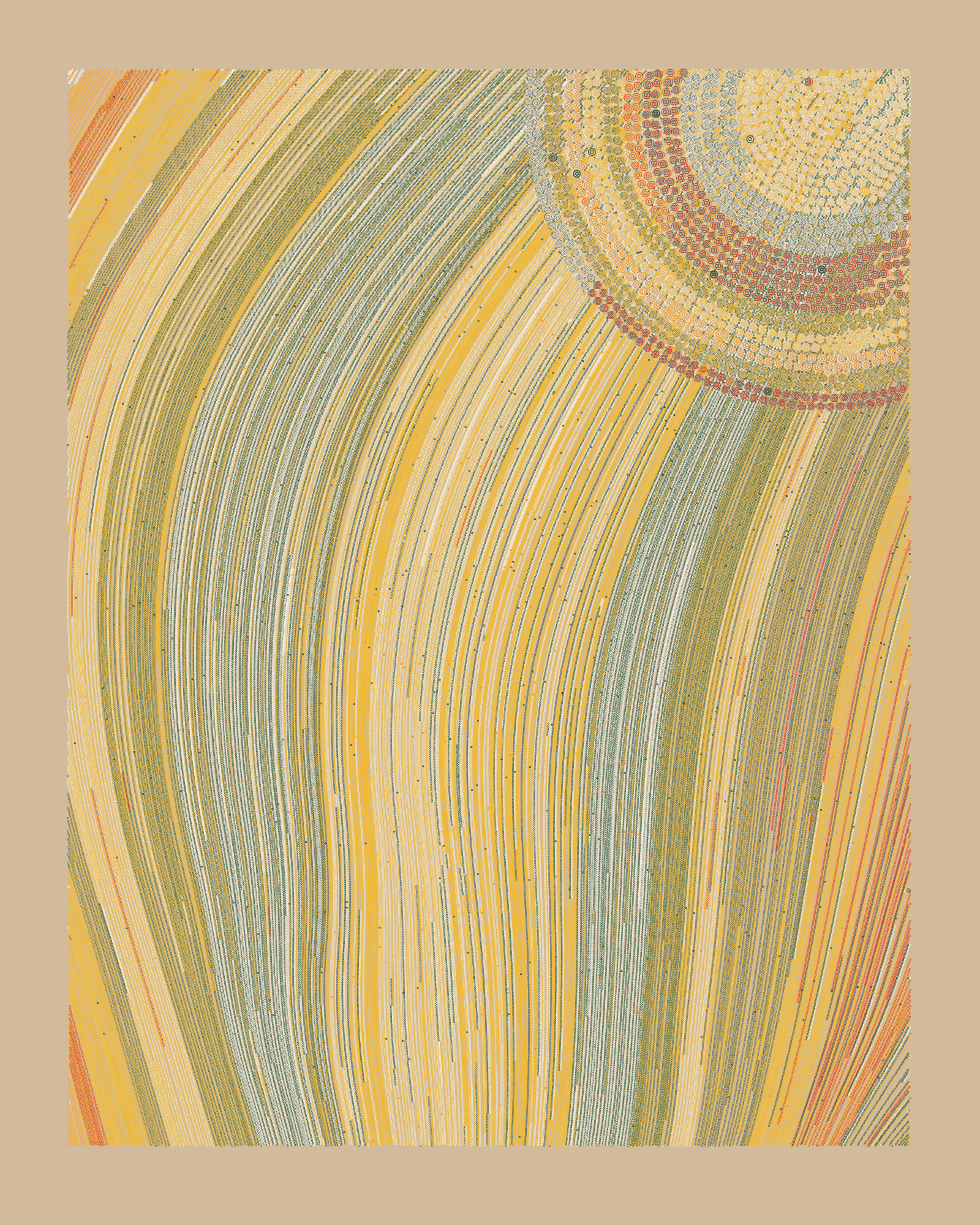
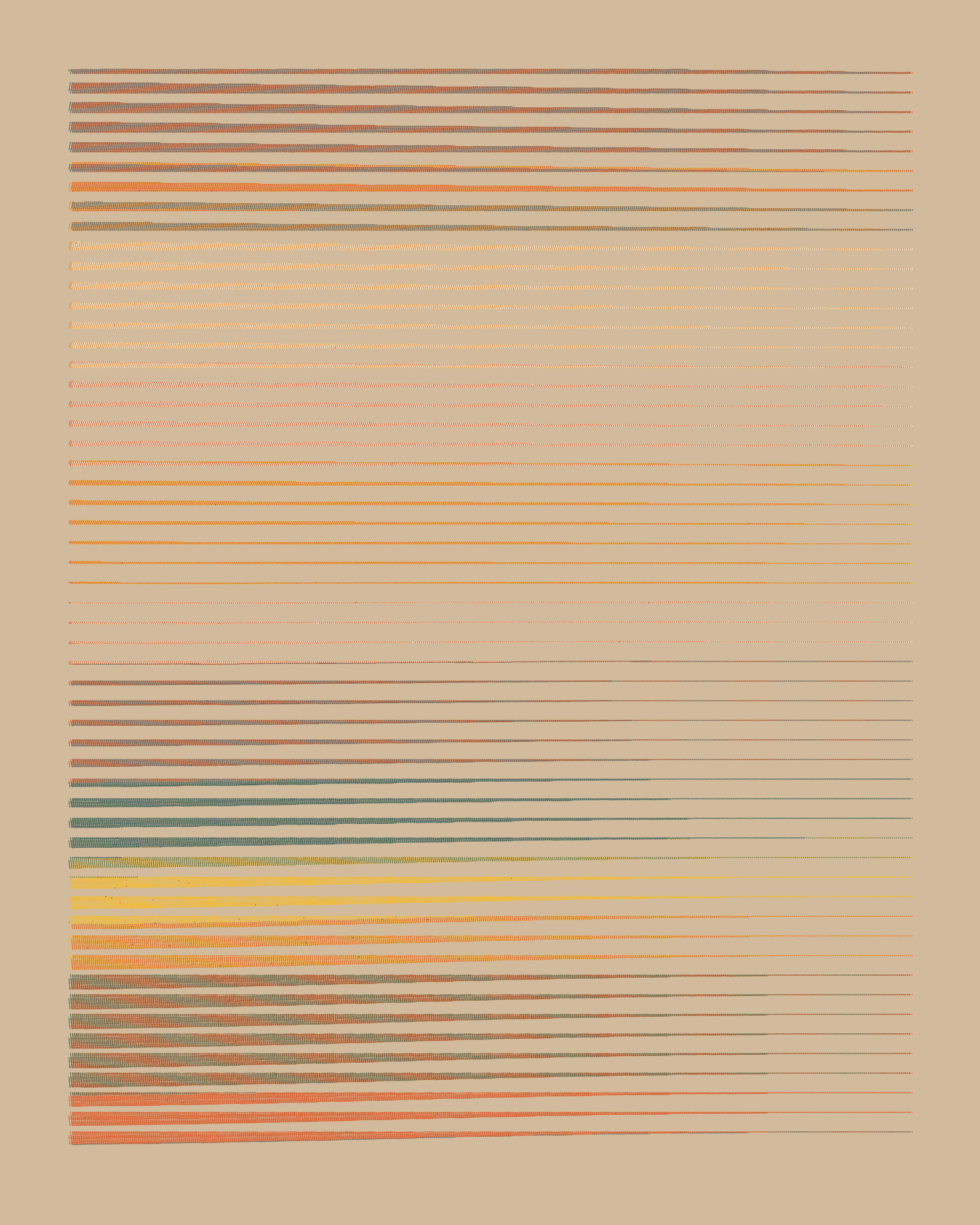
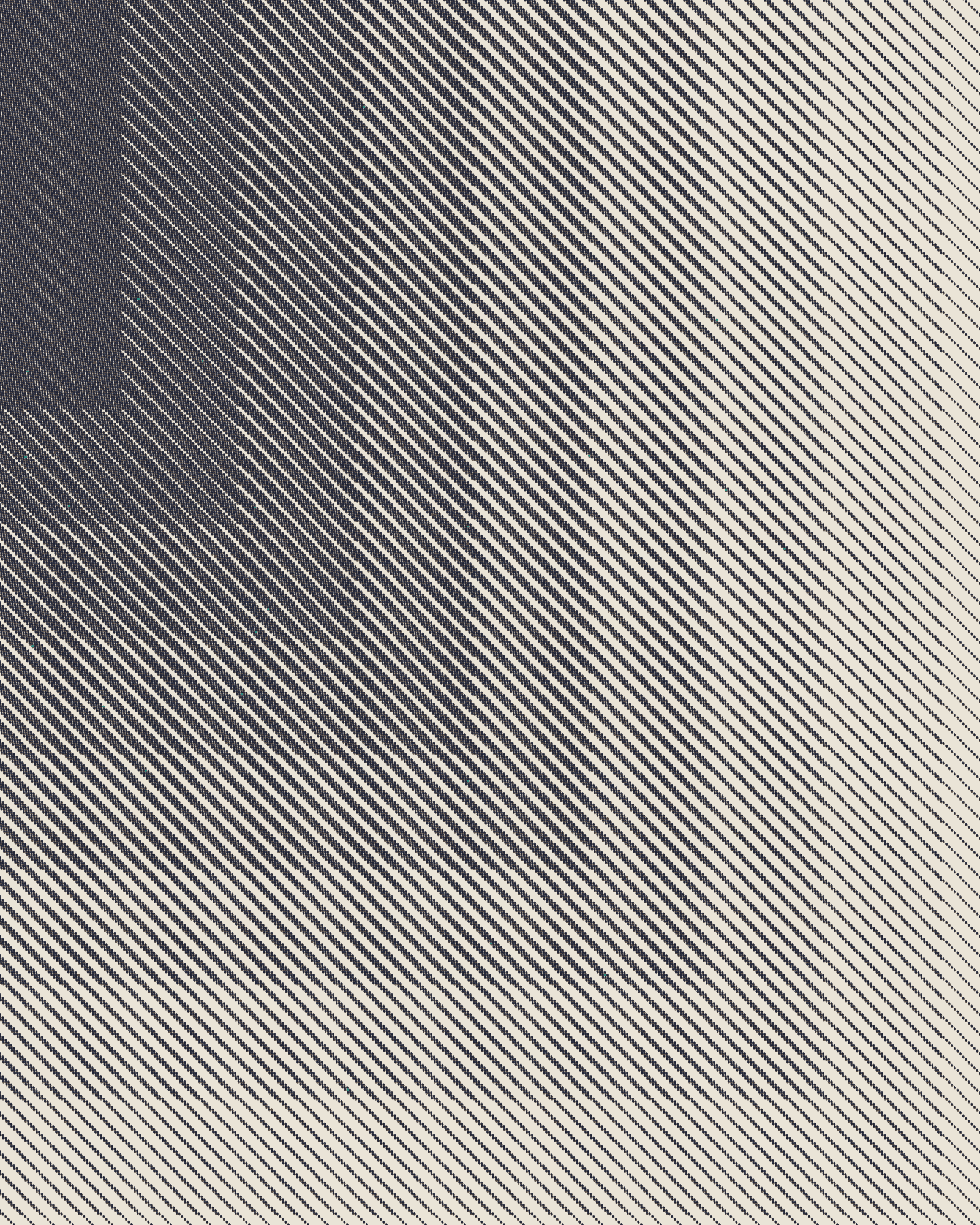
Meridian
This set takes its name from the acclaimed generative artwork that Matt DesLauriers released on Art Blocks in 2021, where a series of strata made of colorful strokes evoke dreamy landforms. In QQL, we can generate a “similar” result when rendering single-group Formation structures in Horizontal direction, with Small and Dense rings while Low or High turbulence may give shape to the landscape.
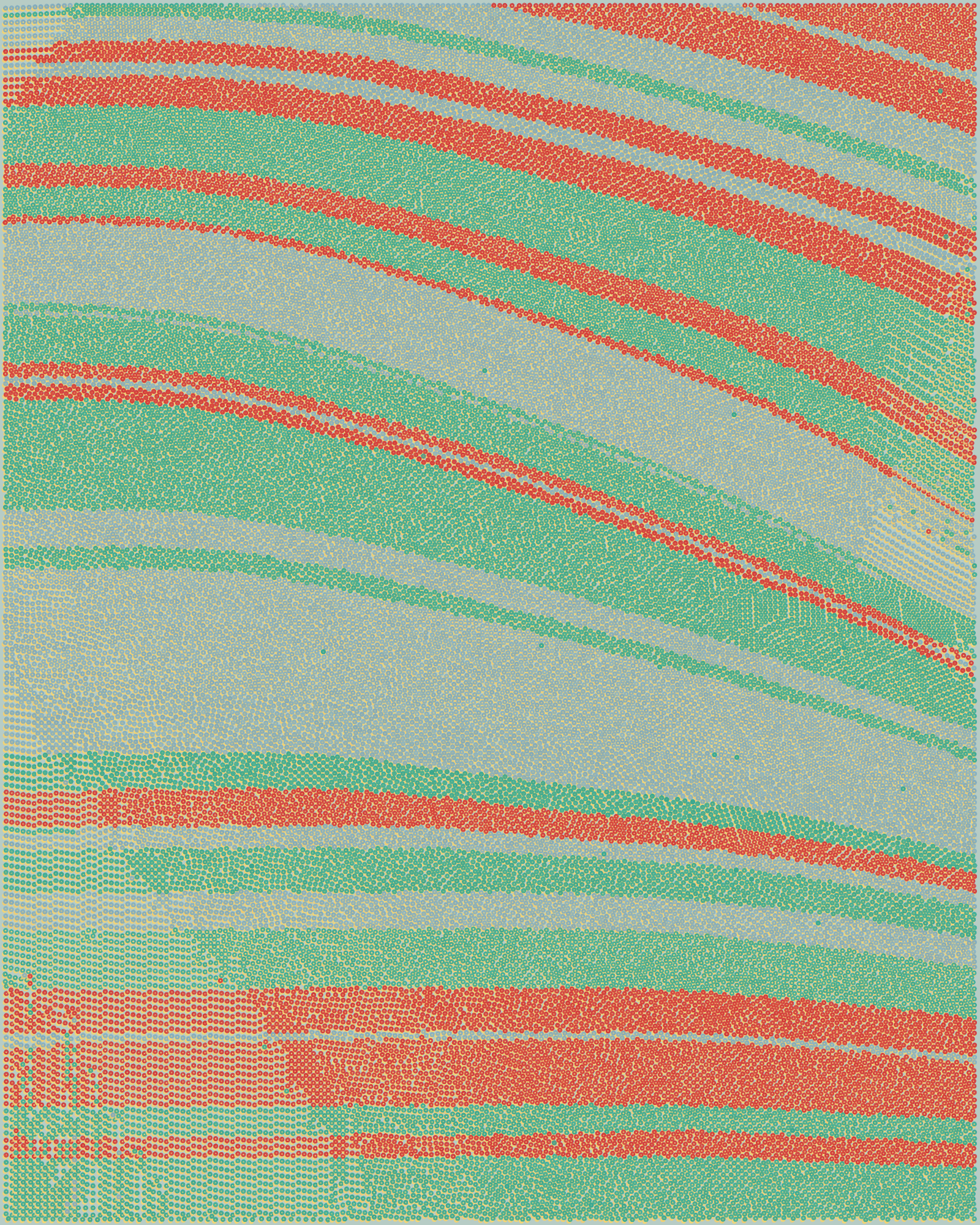
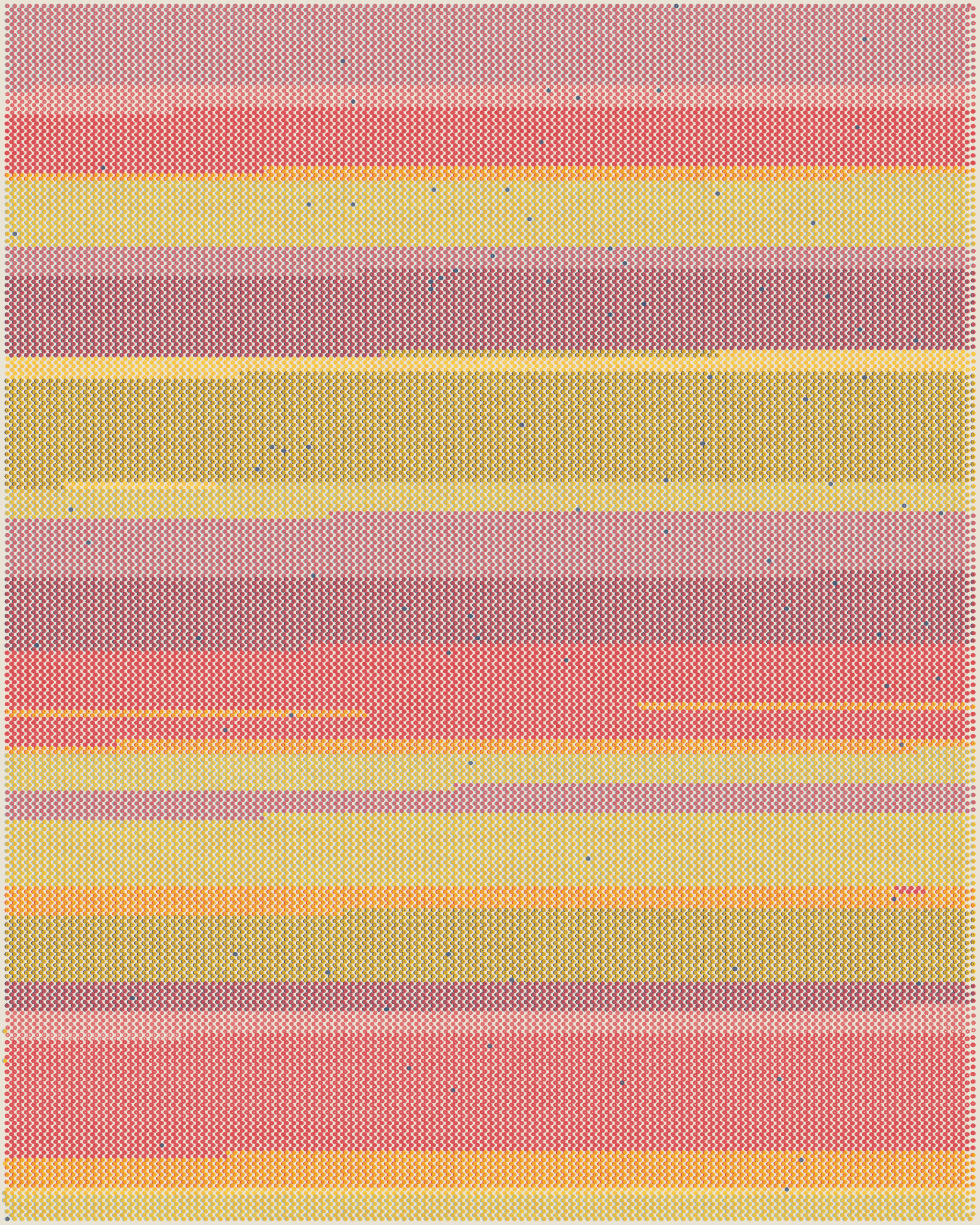
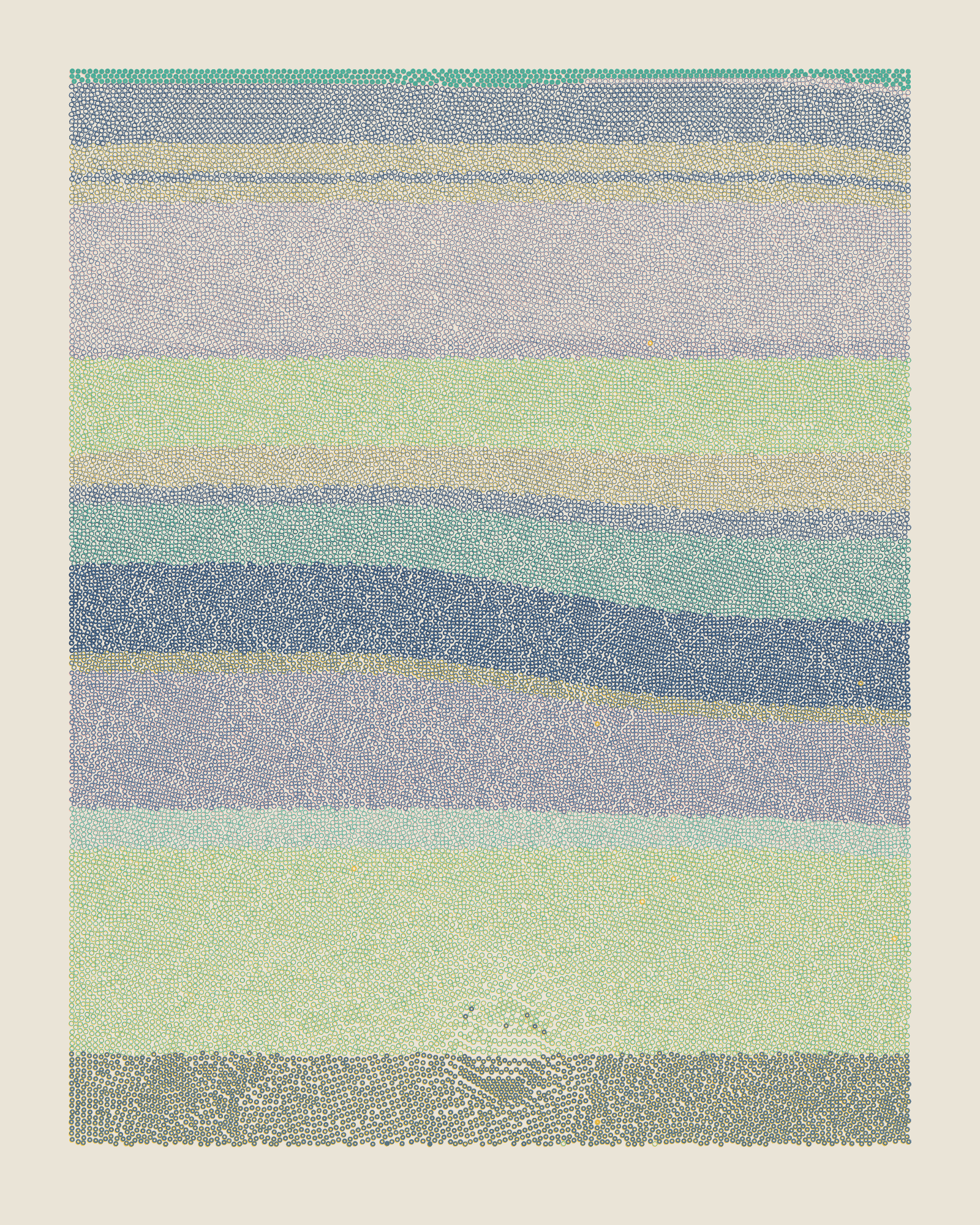
Agnes Martin
Agnes Martin was one of the most prominent minimalist abstract painters of the 20th Century. We can find her work reflected on some of the simplest QQL seeds. We find Agnes Martin in seeds that make use of Low color variety and simple compositions, whether it be fine lines or muted colors, or the regular repetition of similar-looking rings.


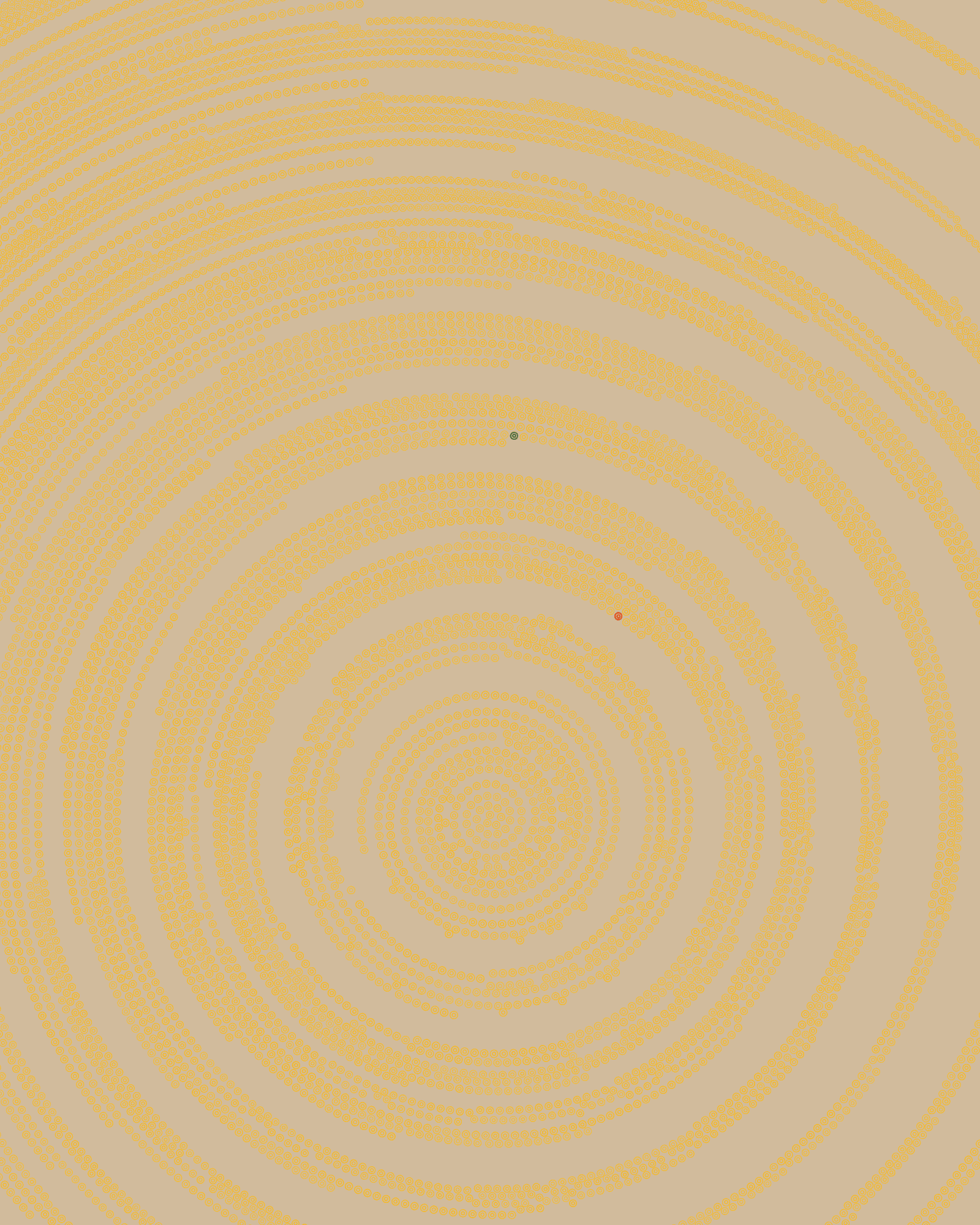
Pastel
With some stylistic similarity to Agnes Martin’s subtlety, we can look for pastel in seeds that make use of Thin rings that melt into the background. The two color palettes that can bring these soft colors most effectively are Miami, with its Miami White background, and Fidenza, in Fidenza Newsprint background.
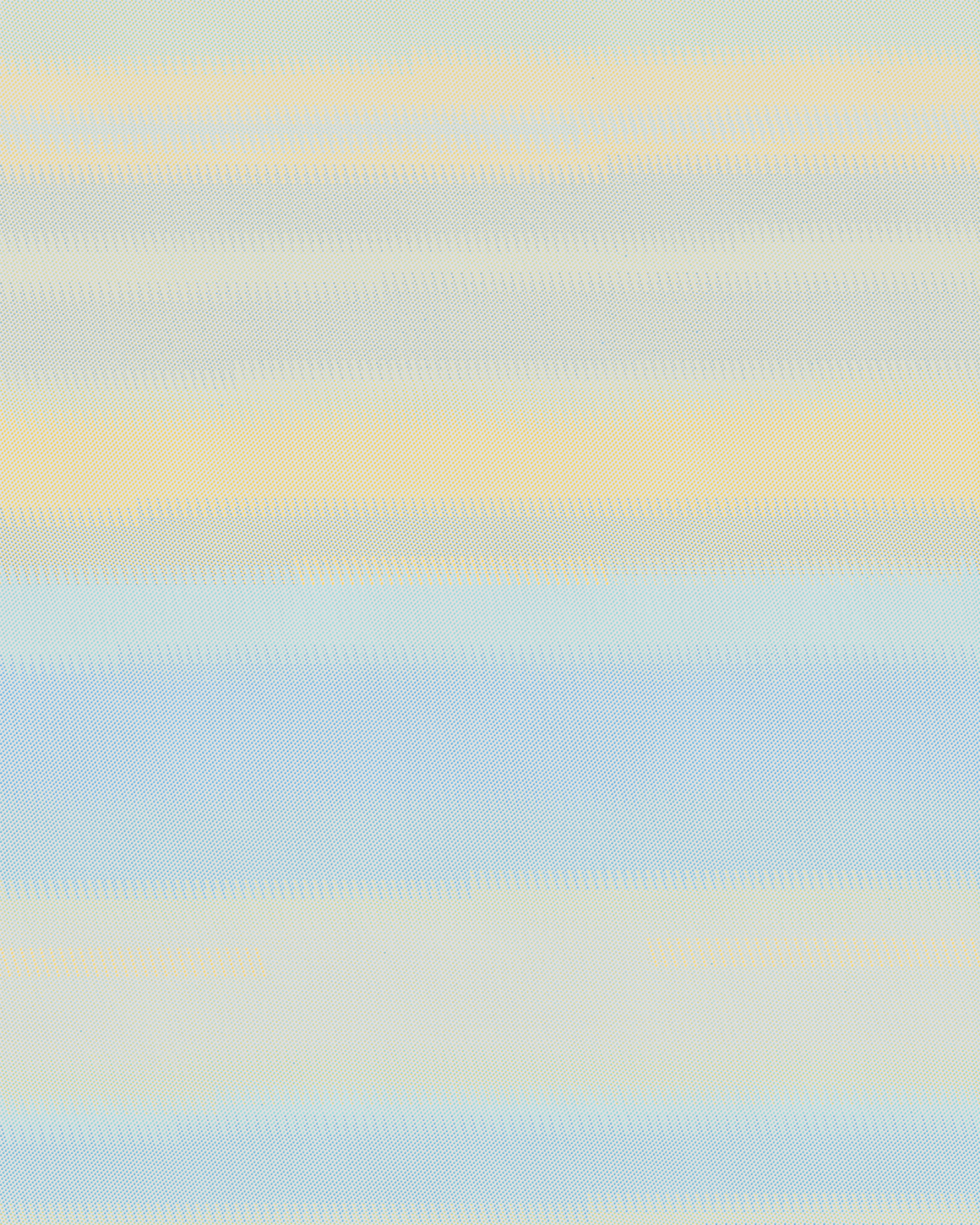
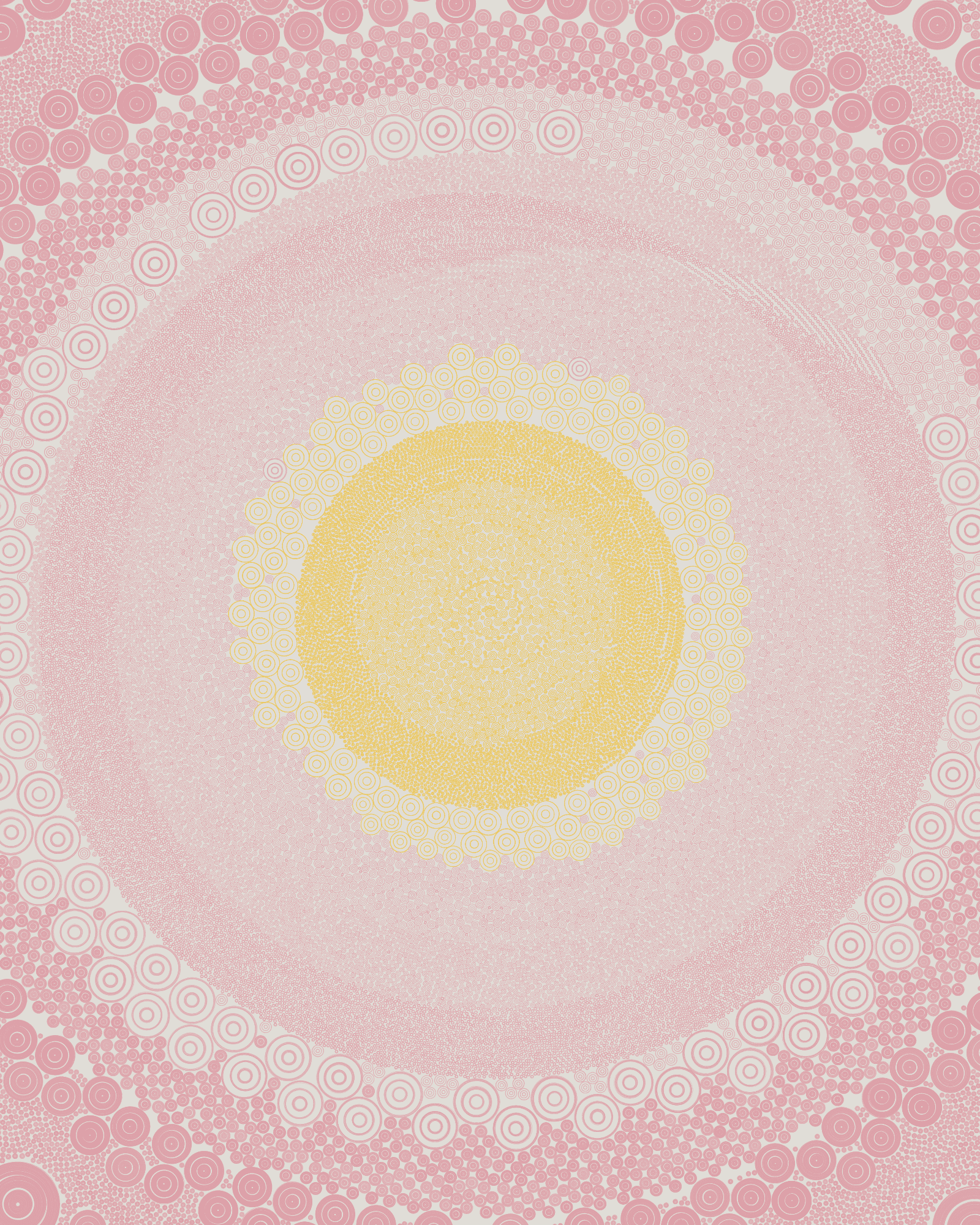
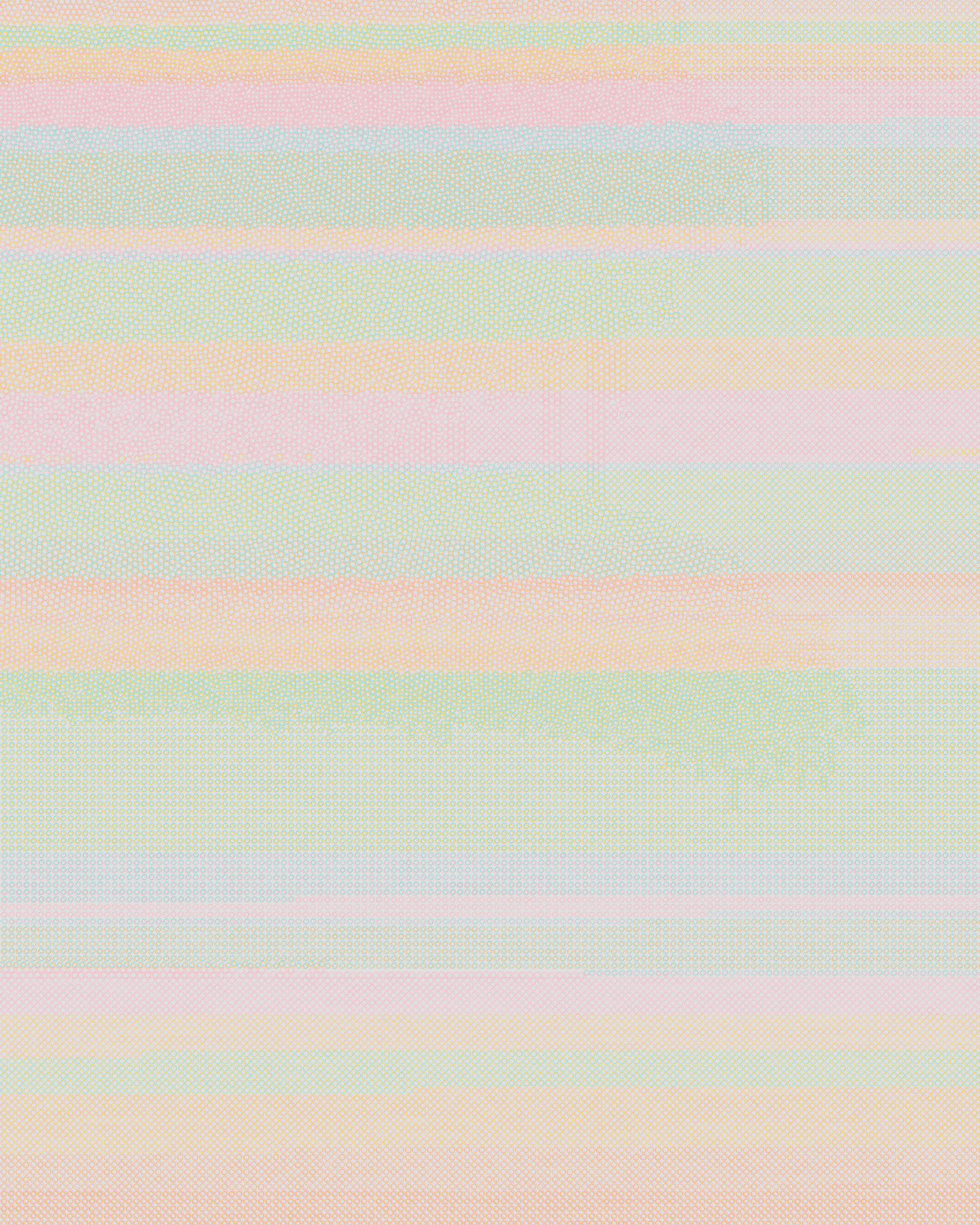
Multi-ring Grid
Multi-ring Grid seeds use Small, Dense and Constant-sized rings to generate a Formation grid of evenly grouped rings in a constant pattern. Between each group of rings there is a small but visible separation.
This effect is possible using the Random Linear direction, but only with rings of a specific size. The size and spacing of the rings, along with the placement of the flow line starting points, must align just right to create small, regular gaps—both horizontally and vertically. These gaps are big enough to be noticeable, but not big enough to fit an additional ring.
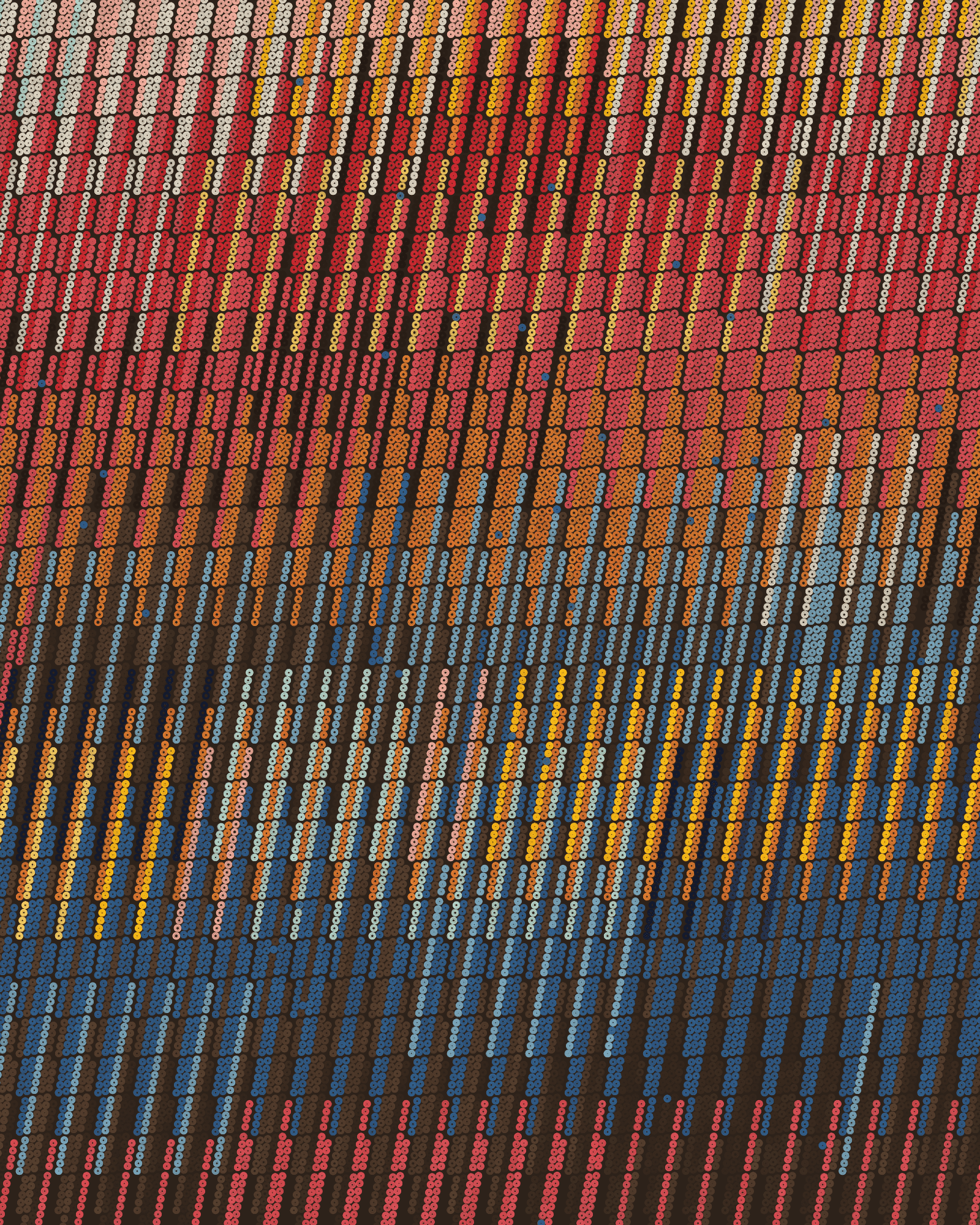
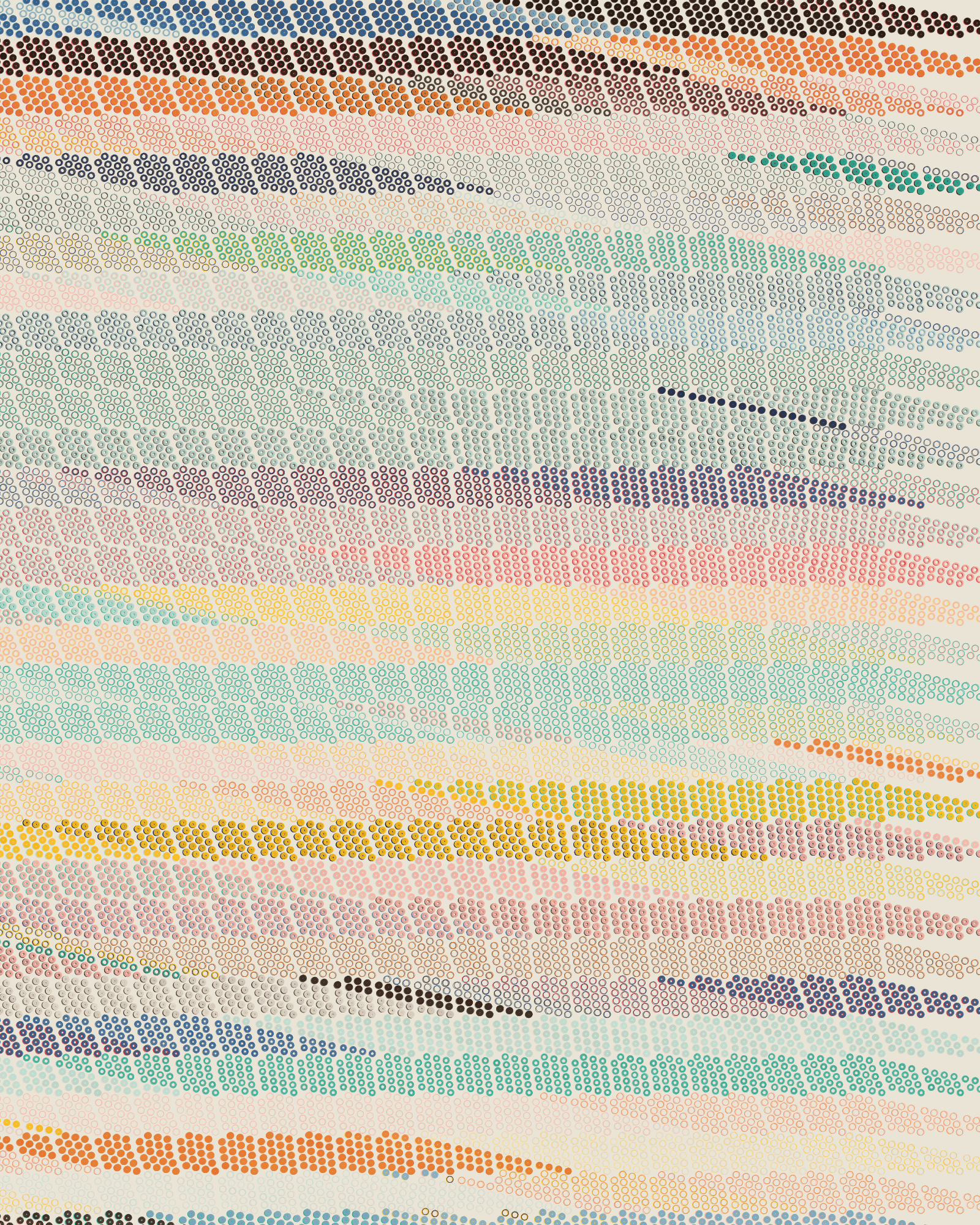
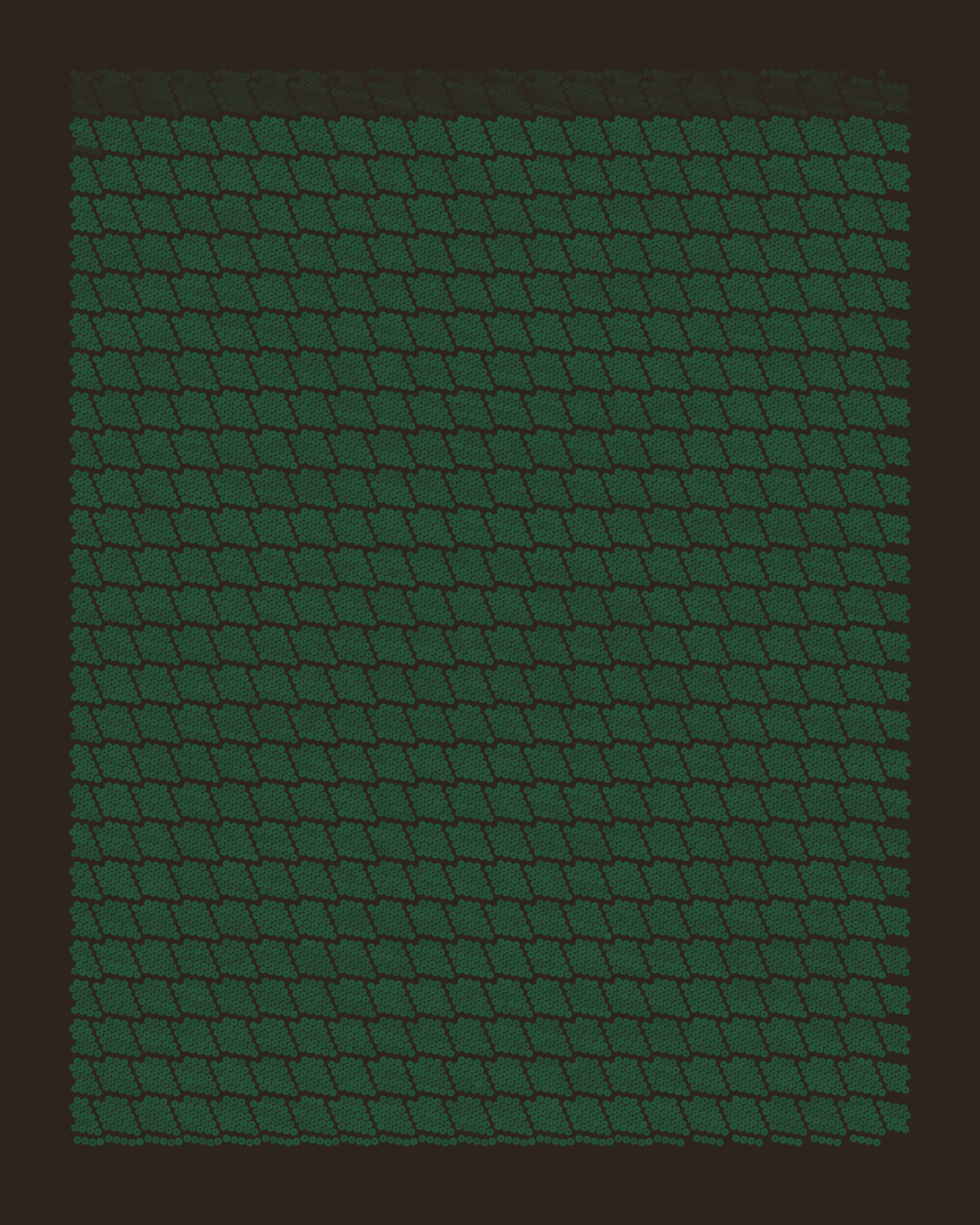
Sector Grid
Sector Grid is another interesting effect caused by how the algorithm calculates and paints rings in the canvas. For efficiency purposes, the algorithm calculates ring collisions by checking the potential collisions a ring can have in its vicinity instead of checking the whole canvas. It does that by dividing the canvas in a grid of 50 by 50 small sectors, looking only for collisions in the sector or sectors the incoming ring belongs to. If it has no collisions, the ring is painted. Otherwise it’s discarded.
In the rare cases where a seed contains negative-radius rings, these invisible rings count towards collision-checking, usually leaving white space in the canvas. However, their negative radius interacts with sector boundaries in such a way that bordering invisible rings don’t count towards collisions, thus leaving a sliver of space for small incoming rings to be rendered close to the borders of the Sector Grid.
All Sector-Grid-style seeds have the grid in the same exact areas of the canvas.
As we’ve seen, Sector Grid is a rarity within the algorithm. It typically only appears in seeds with a very large number of “invisible rings”, and the only way to potentially generate such a seed is by using Dense spacing and Wild size variety.
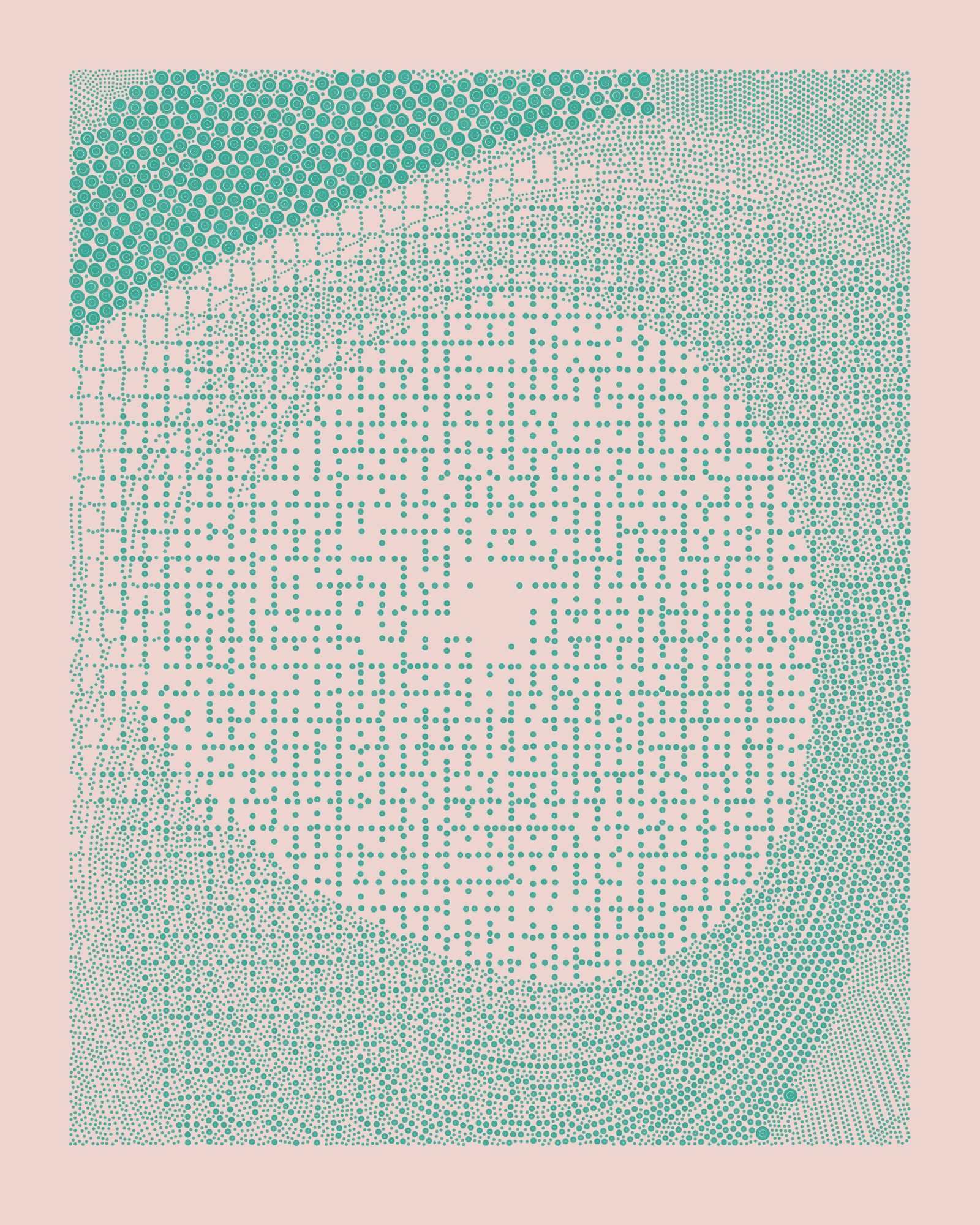
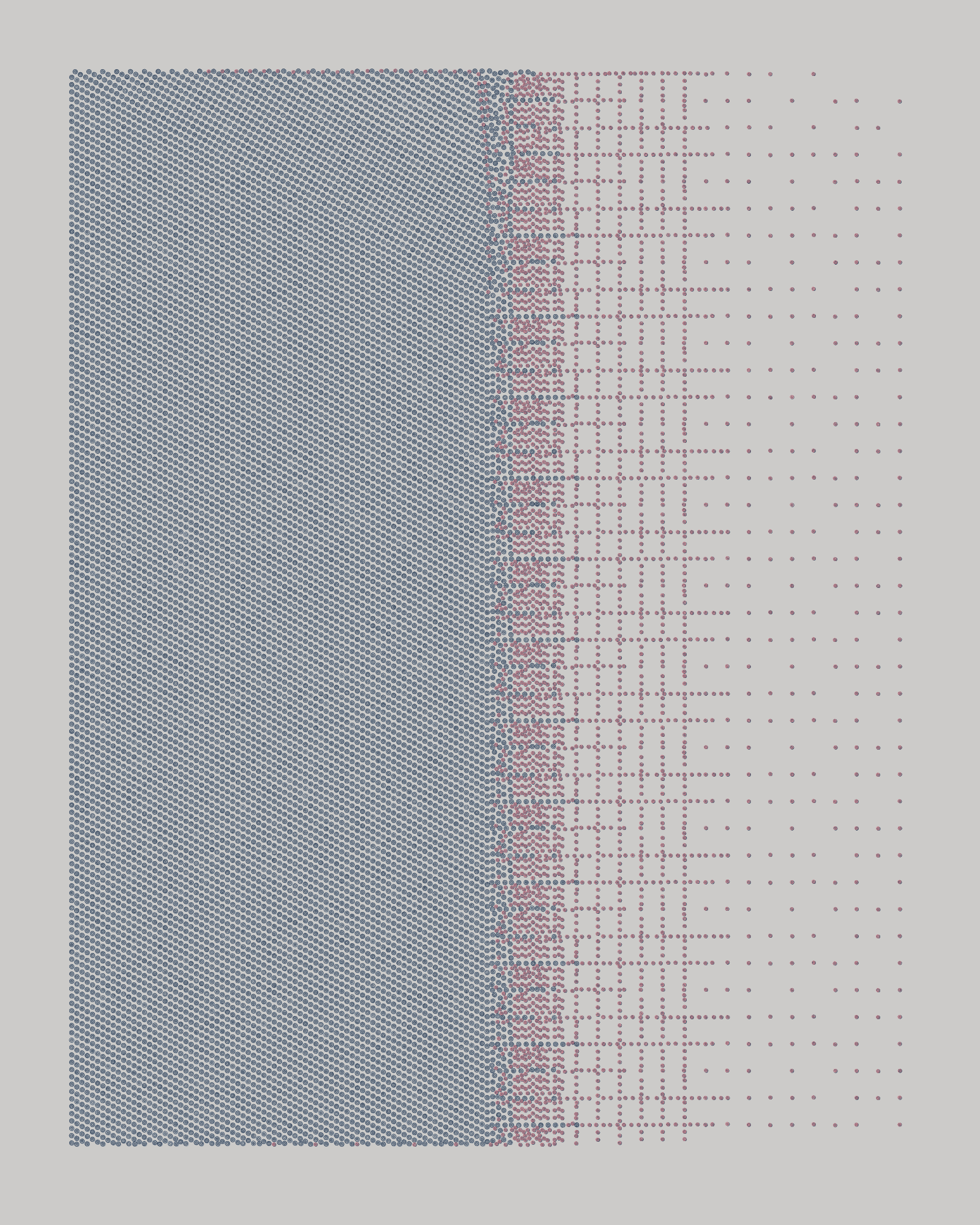
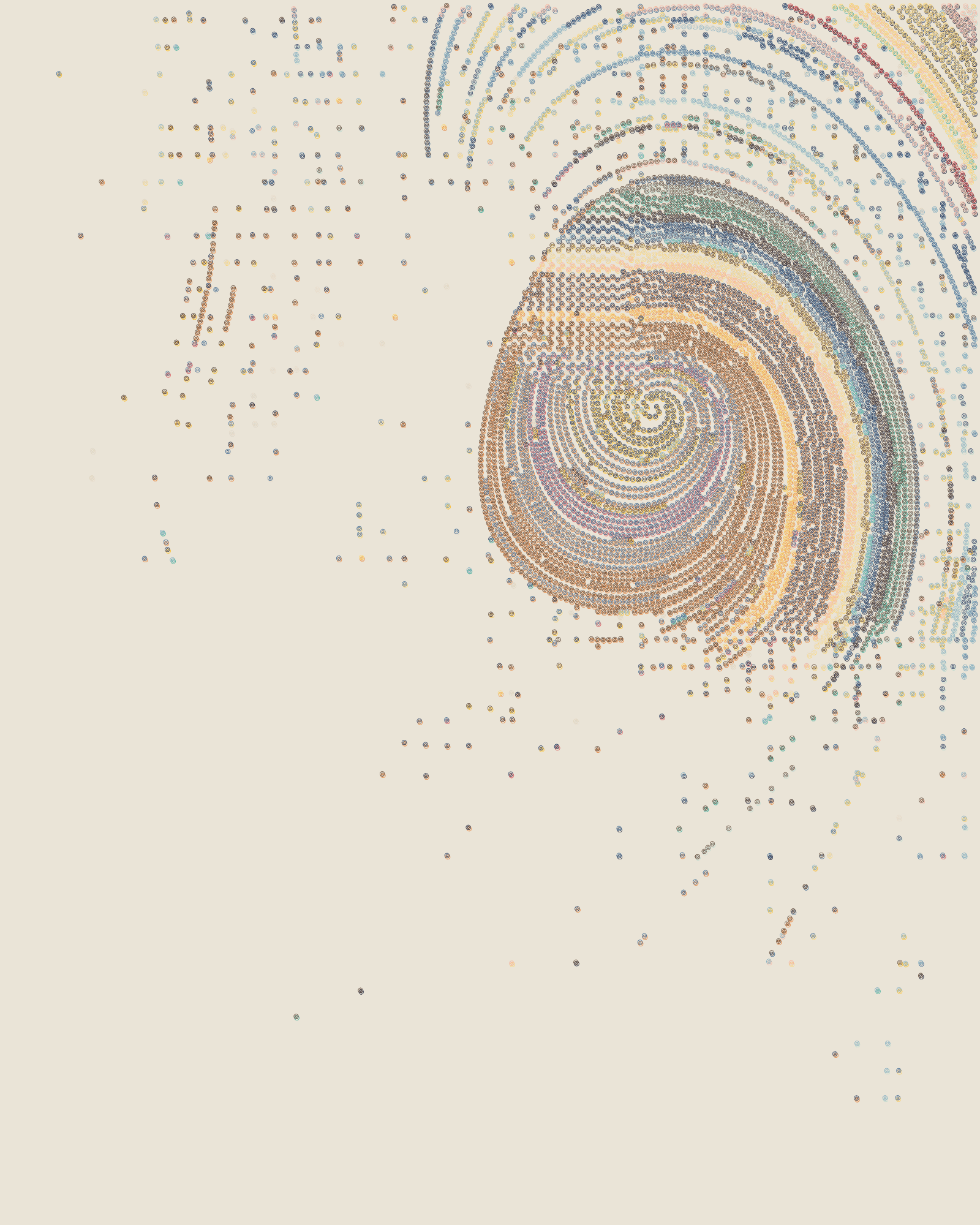
Landscape
The generation of somewhat mountainous Landscapes can emerge from the QQL algorithm when High turbulence distorts usually Horizontal or highly slanted Random Linear lines of rings in Formation structure that contains a few vertically stacked groups.
Although mountains or hills are the most common landscape element present, we can also discover islands, evocative bodies of water, or even starry skies.

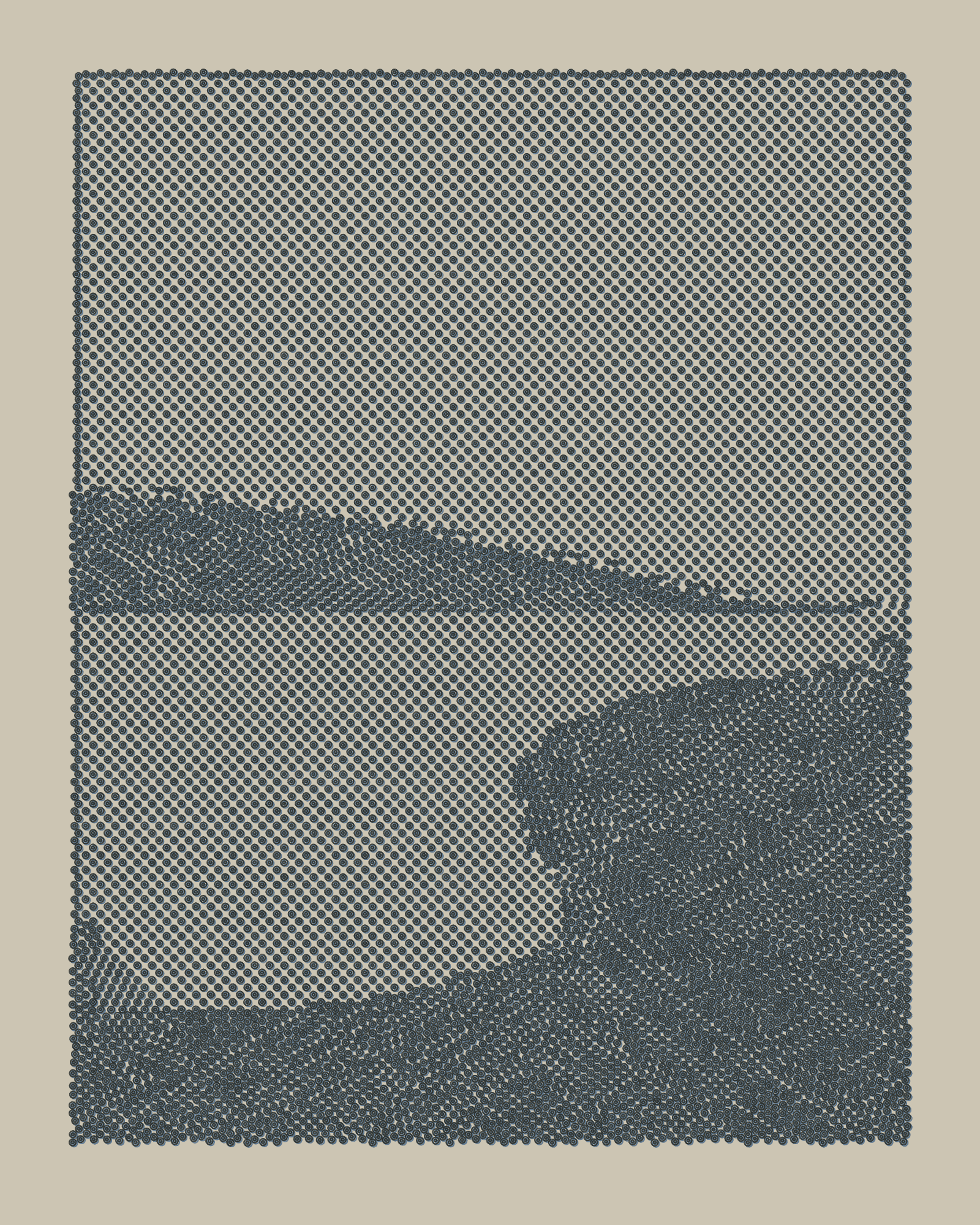
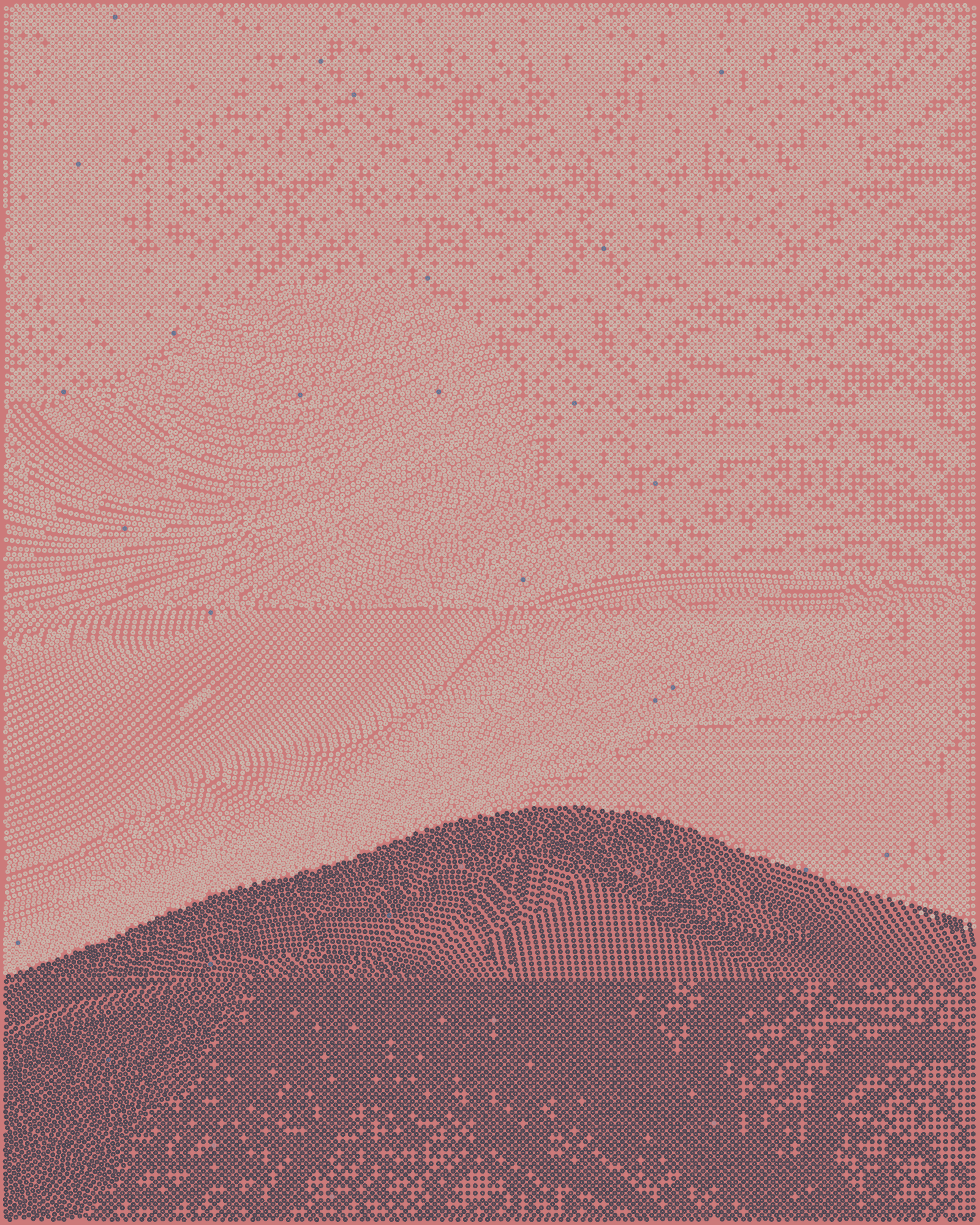
Celestial
A Medium or Large central ring is surrounded by a “Wild” variety of smaller rings in different sizes. These are arranged in a Circular, or Explosive direction within in an Orbital structure. Such arrangements are called “Celestial” because the composition evokes planetary bodies, like rings of particles orbiting a planet.
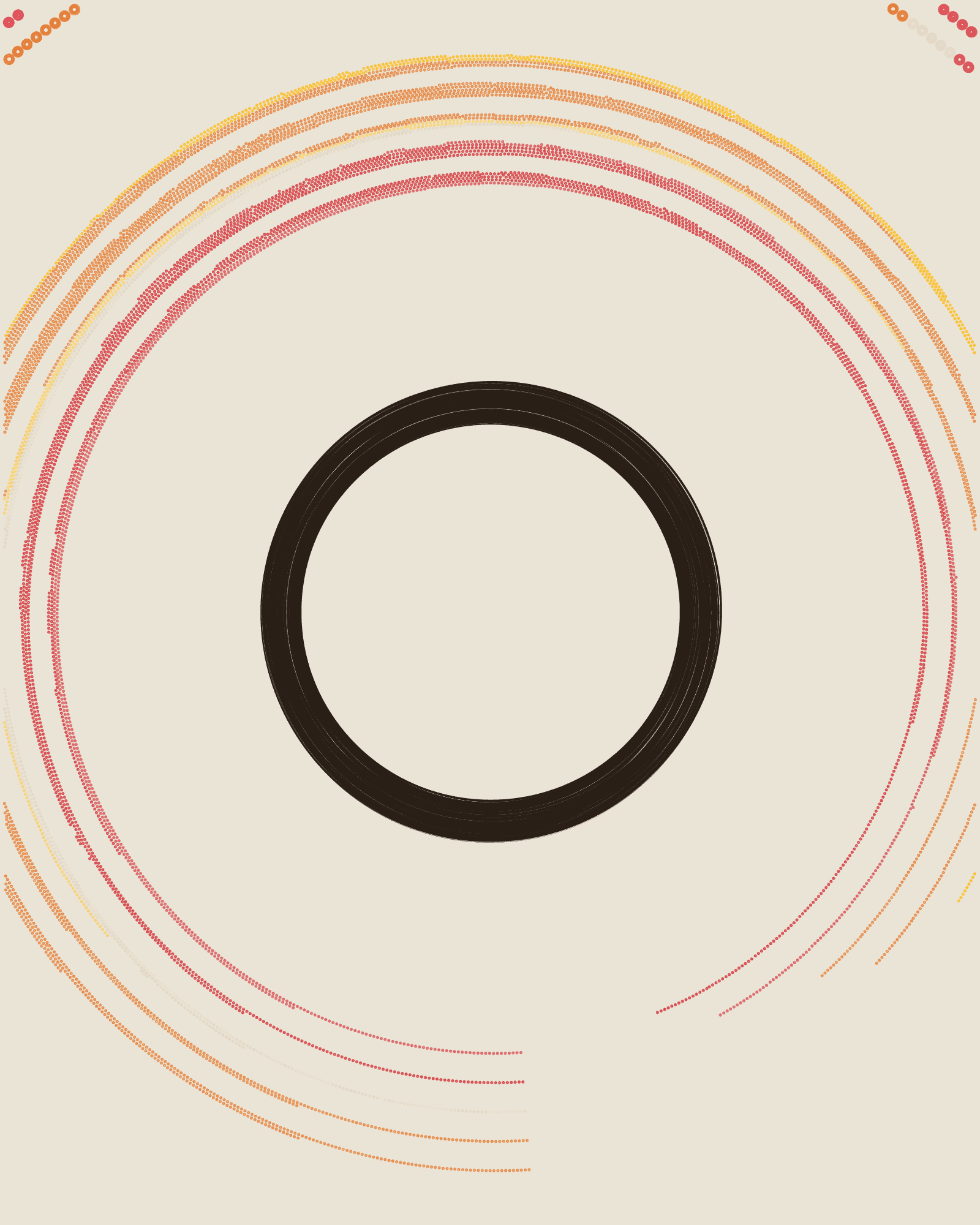
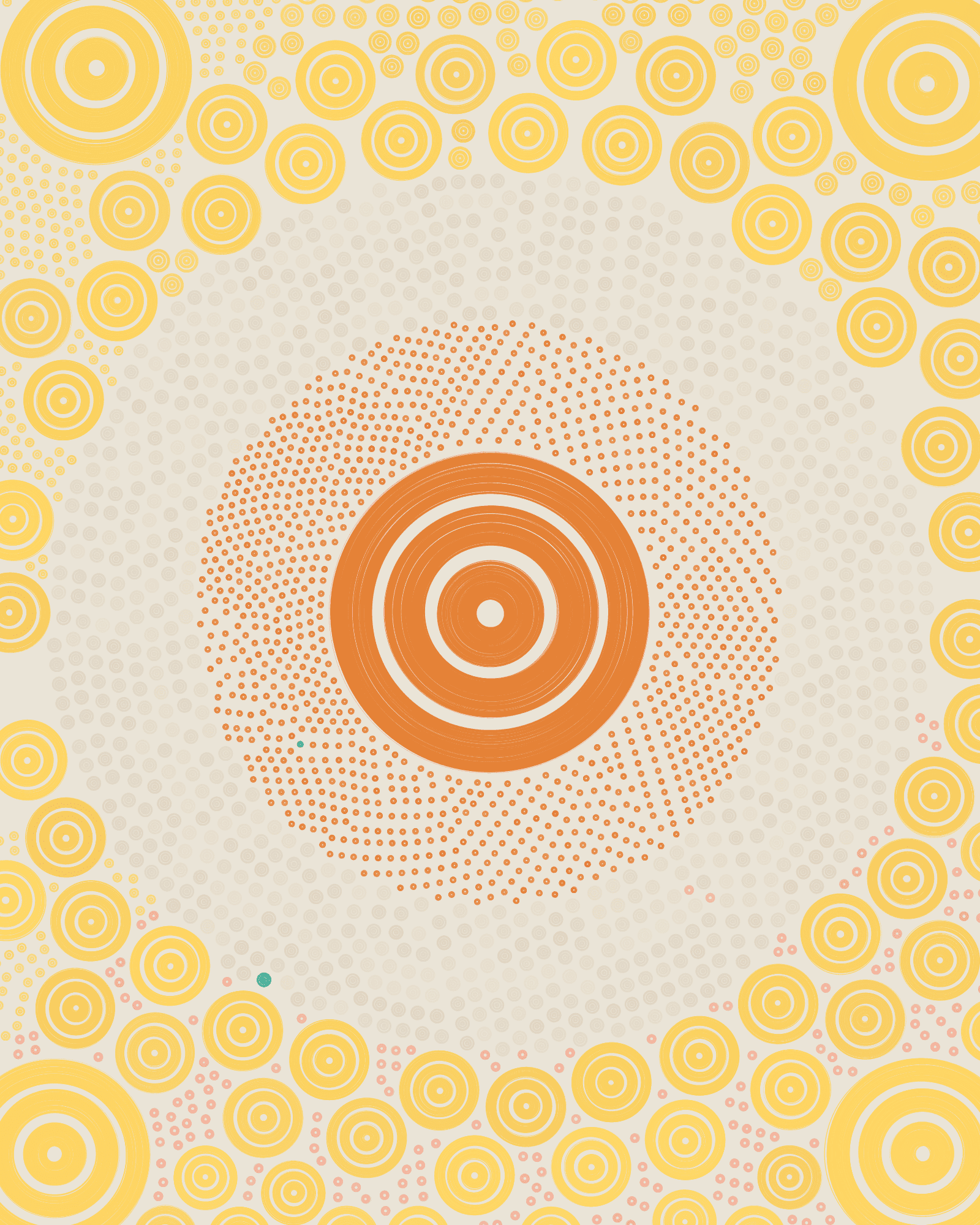
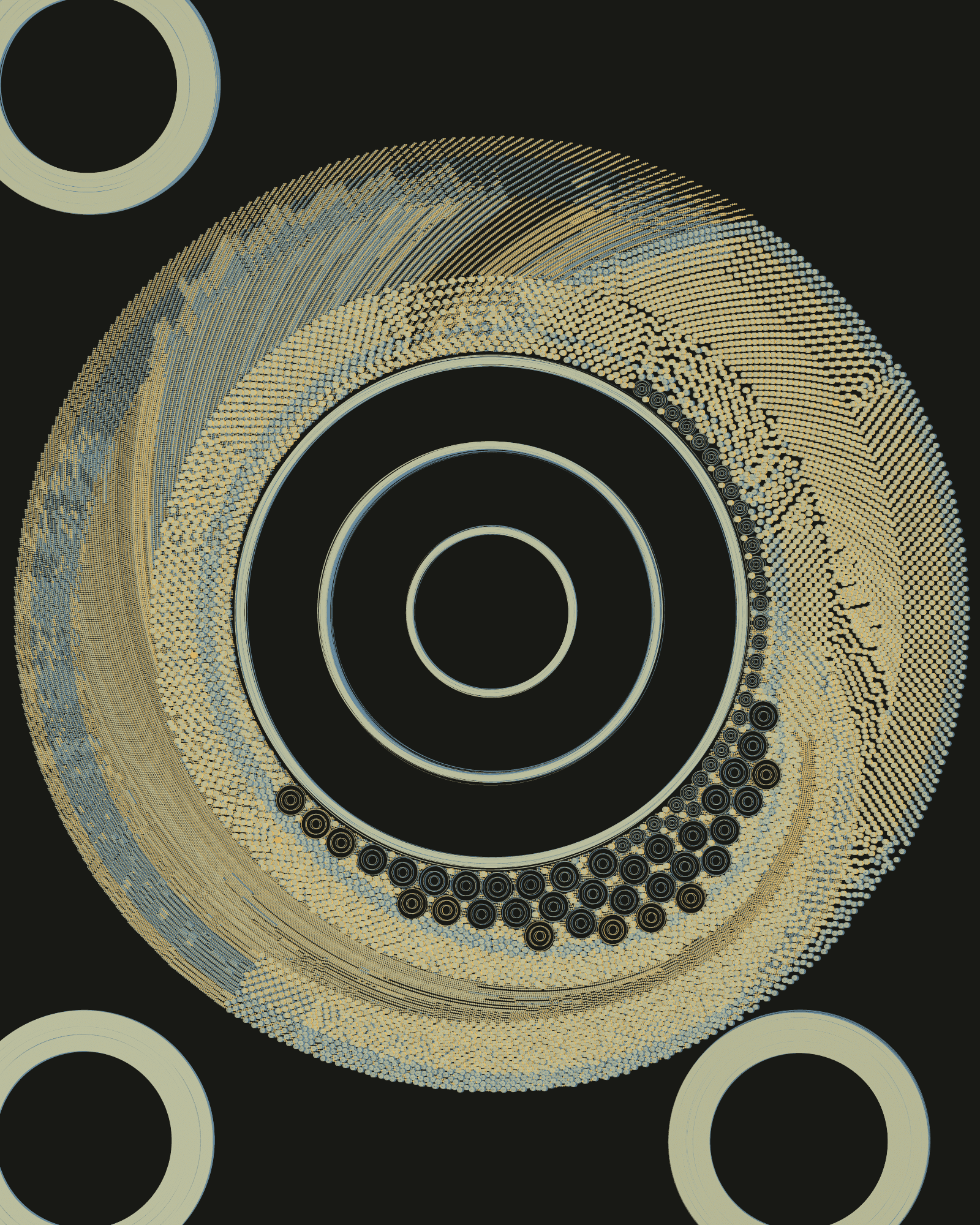
Scalar Harmony (Alohi-Anders)
This set is named after the relentless brother-sister parametric artist duo, Alohi & Anders. Together, they have exhaustively explored the combination of a single, Large, 1-band ring in together with a tiny ring spread composition that converse in Scalar Harmony.
Alohi and Anders discovered that when using Wild size variety together with “Large” rings, it is possible to pair them with unexpectedly small rings that emphasize the presence of the larger ring. A strong flow field rotation helps position both elements in beautiful synchrony, which means that either Circular or Explosive direction might work to find a balanced Scalar Harmony seed.
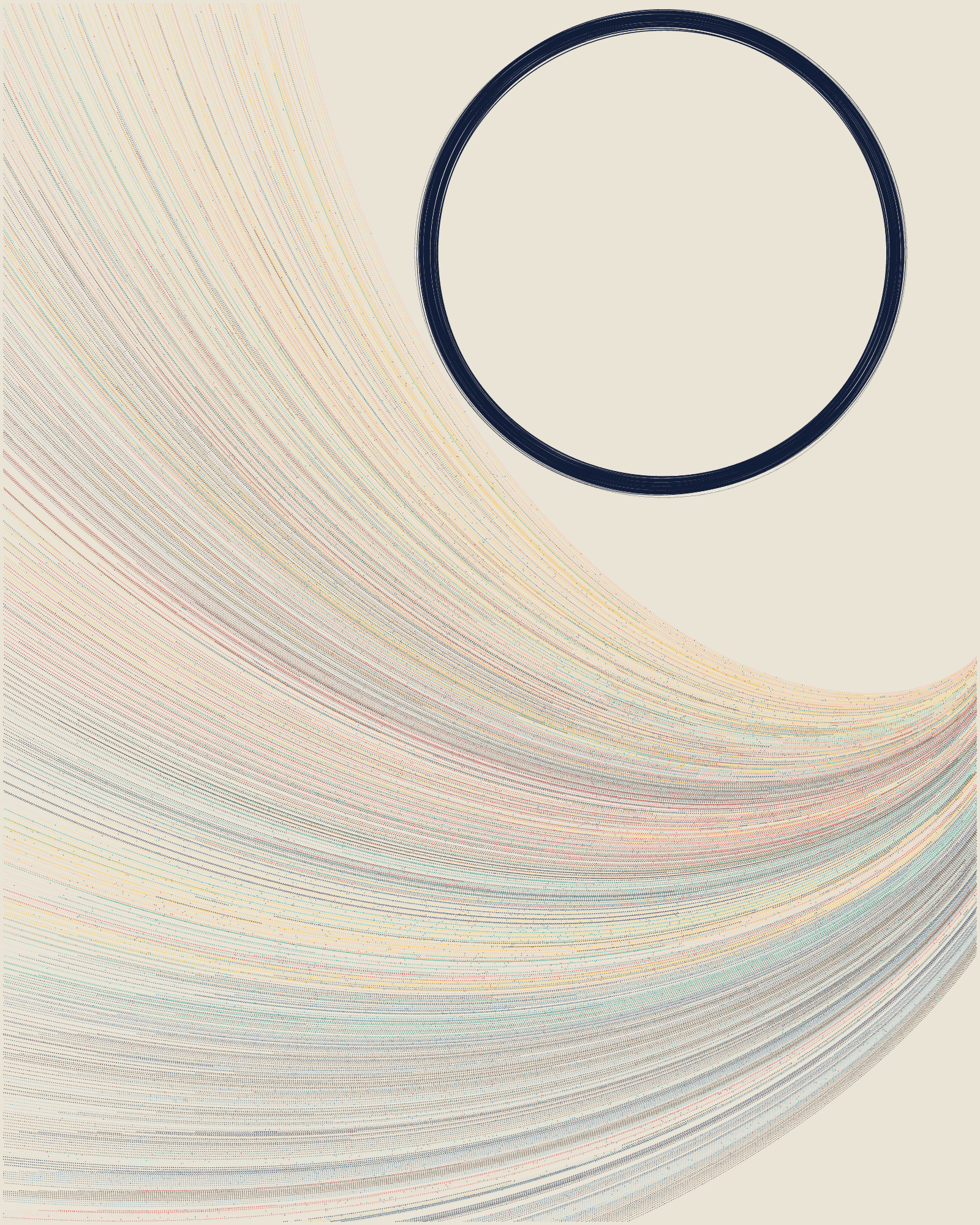

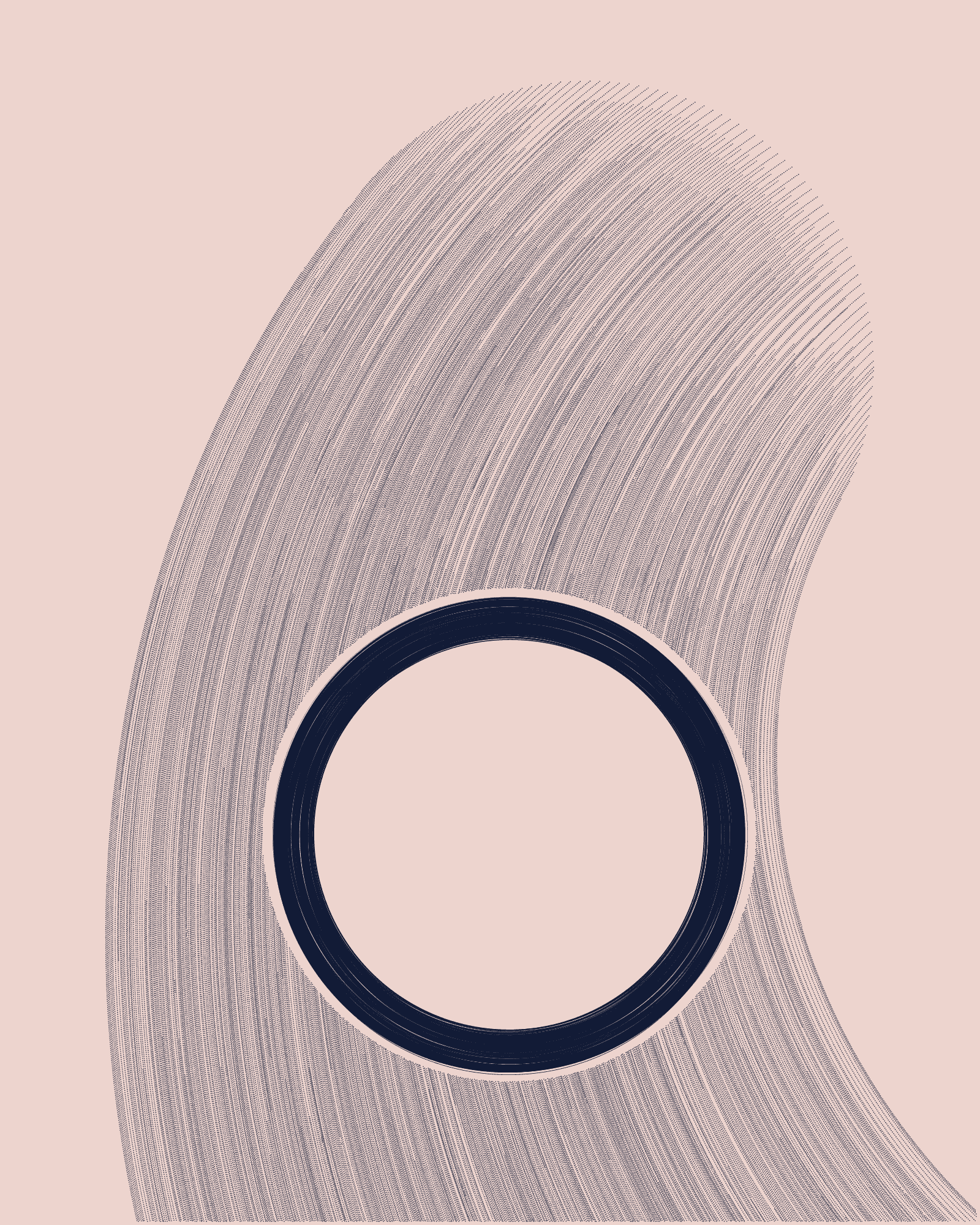
Figurative
Discovering Figurative shapes or beings has become a favorite pastime within the QQL community. Some of the most beloved QQLs fall into this category, where forms resembling animals— like a parrot, eagle, gecko or tortoise—have been unveiled. The community has also identified inanimate objects, from cars to still life compositions featuring grapes, a bottle of wine, or a tapestry of lemons.
There’s no guaranteed method for finding these figures—just a sharp eye and an active imagination.
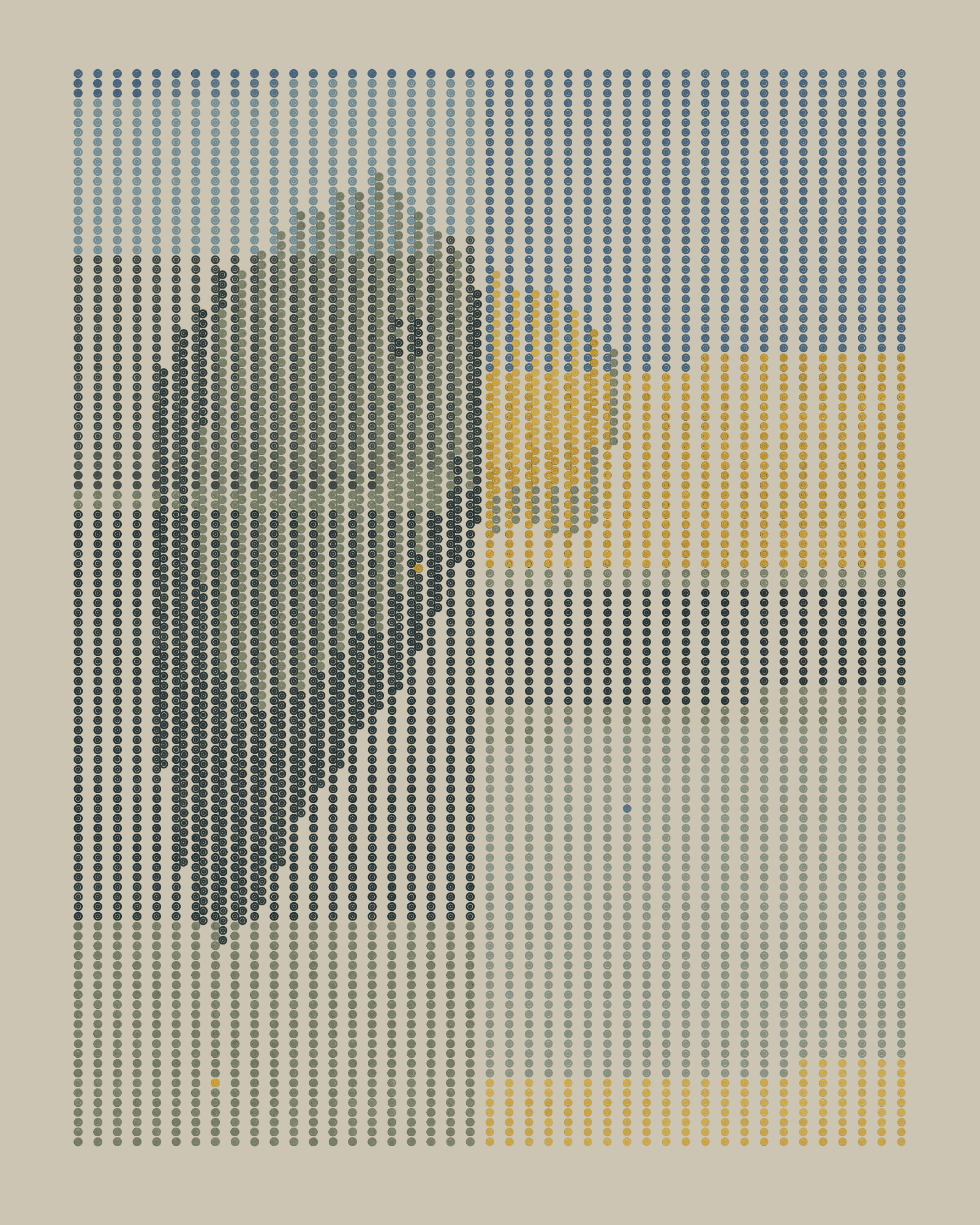
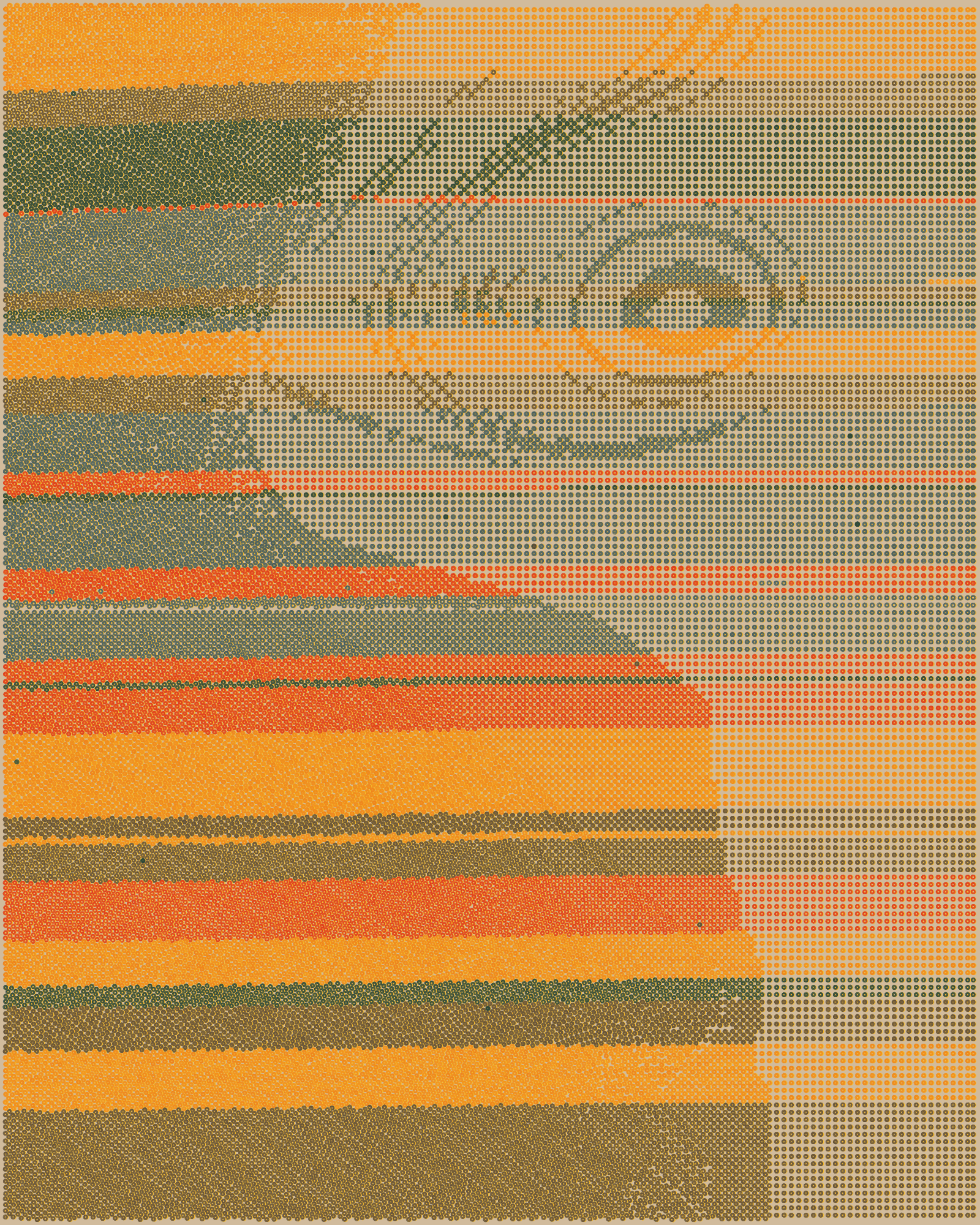
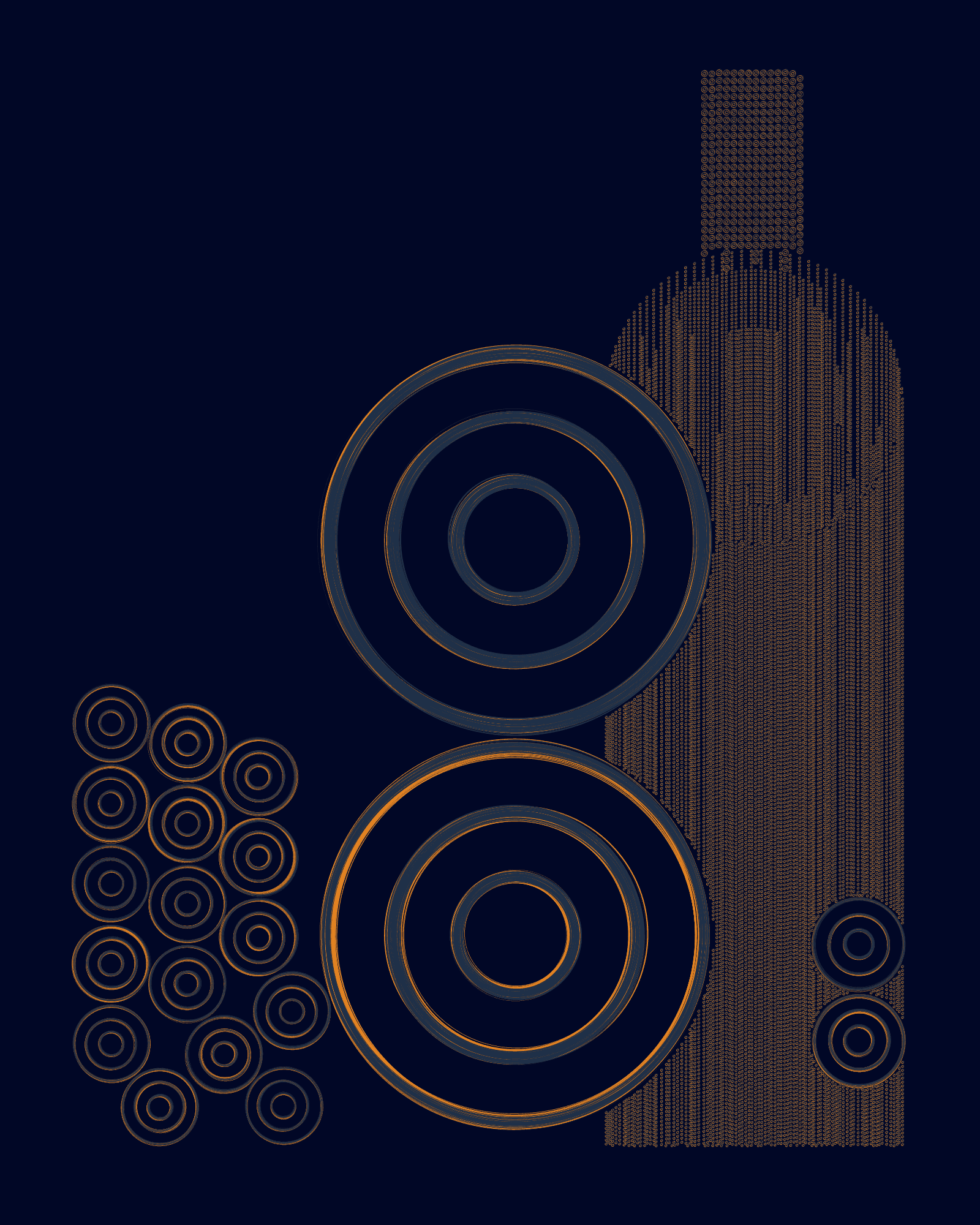
Spray
A Spray occurs when a group of lines, all roughly moving in the same direction, converge toward a single point—often a flow field center, or a strong turbulence focus, typically located outside the canvas. This effect can be achieved by using the Explosive direction, finding seeds with minimal flow field rotation, or using the Vertical direction. High turbulence is essential, as it adds dynamic, twisting shapes and curves along the way.



Radial Dithering
The radial disturbance caused by High turbulence can visibly manifest itself in the form of waves of changing density. The distortion from turbulence causes a grid of rings to have just enough extra spacing between them in some areas, so that the next group of rings can “infiltrate” in the little voids, increasing that area’s density in the shape of ripples and changing the color perception of those areas.
When rings are the same color, the dithering effect will be a mix of different tones of the same color mixed with the background color. When lines of different colors interact, completely different perceptual colors can be produced.
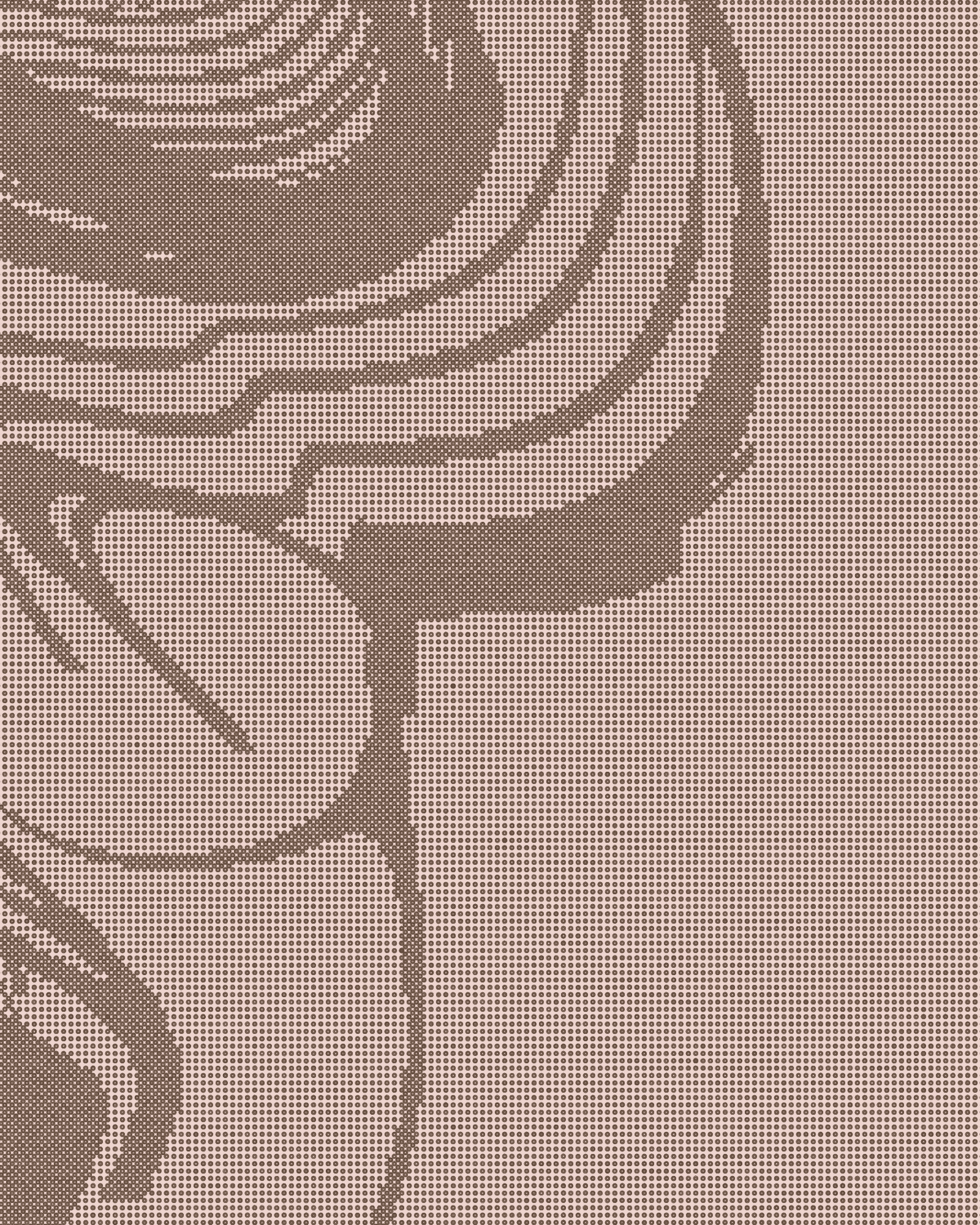
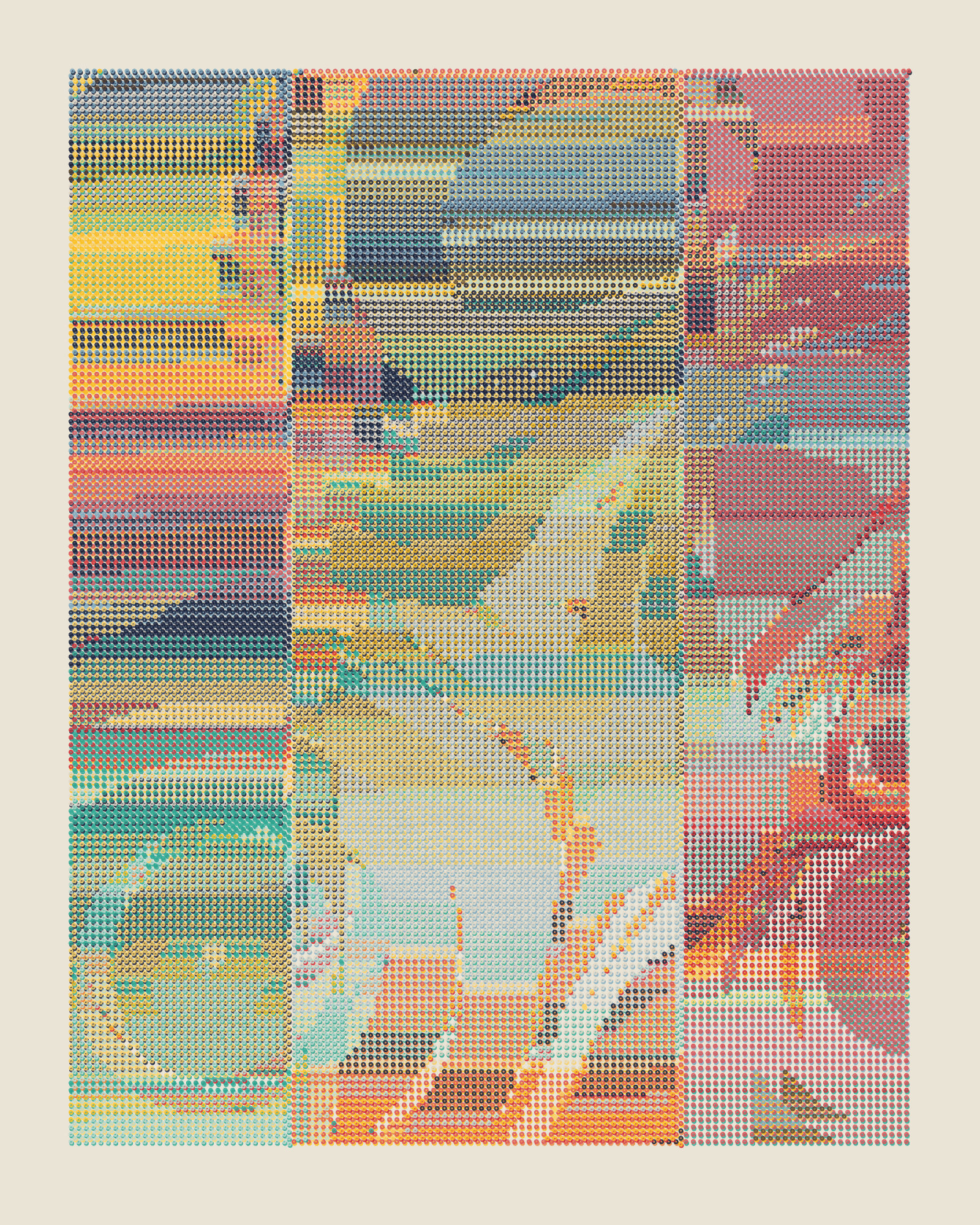
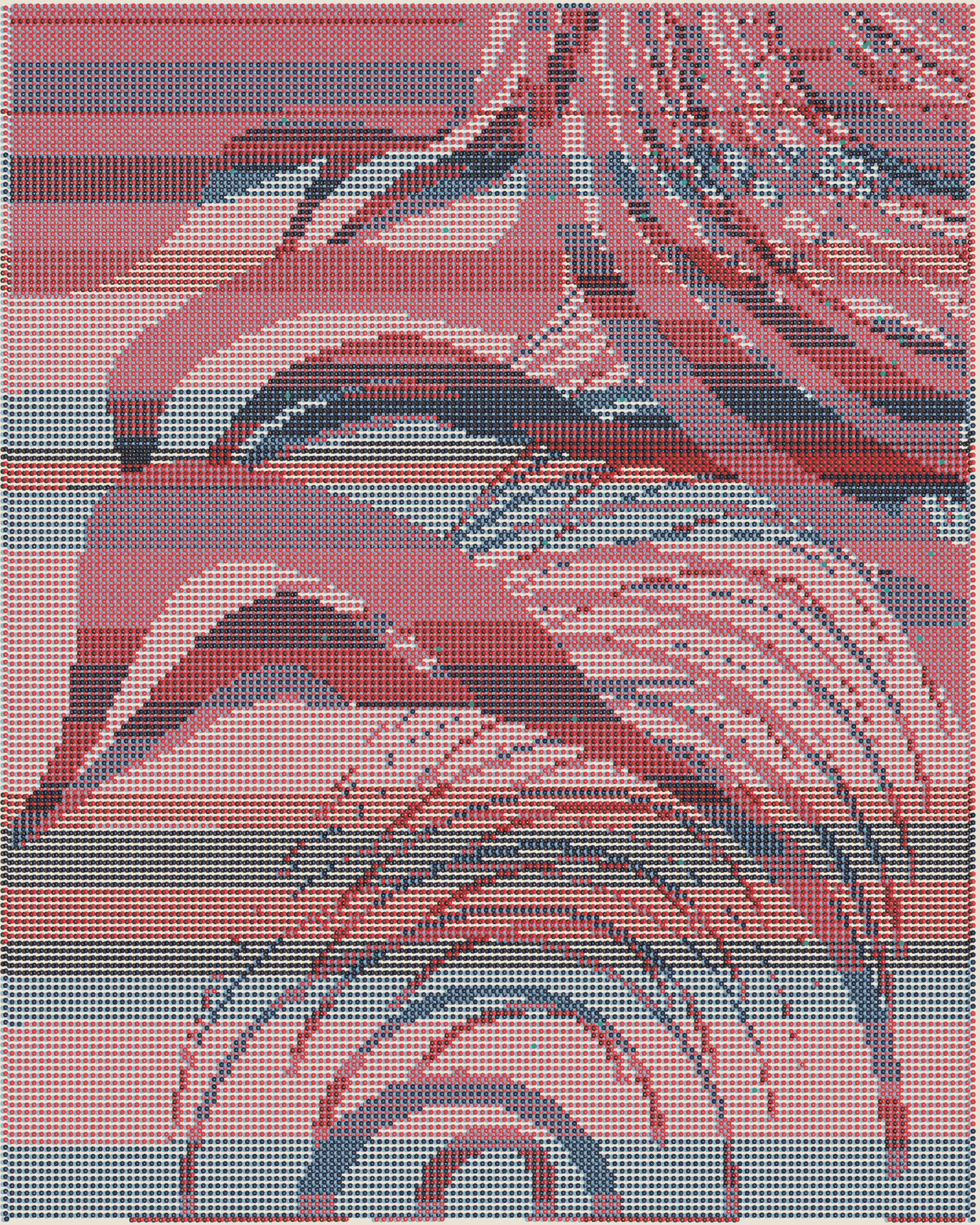
Orthogonal Dithering
Orthogonal Dithering works a little differently. We can find it in Formation groups of Dense, Stacked rings of Constant size that follow a Random Linear direction. When the two colors of the stacked rings penetrate the previously “painted” areas, partial dithering gradients occur, generating unique color mixing effects.
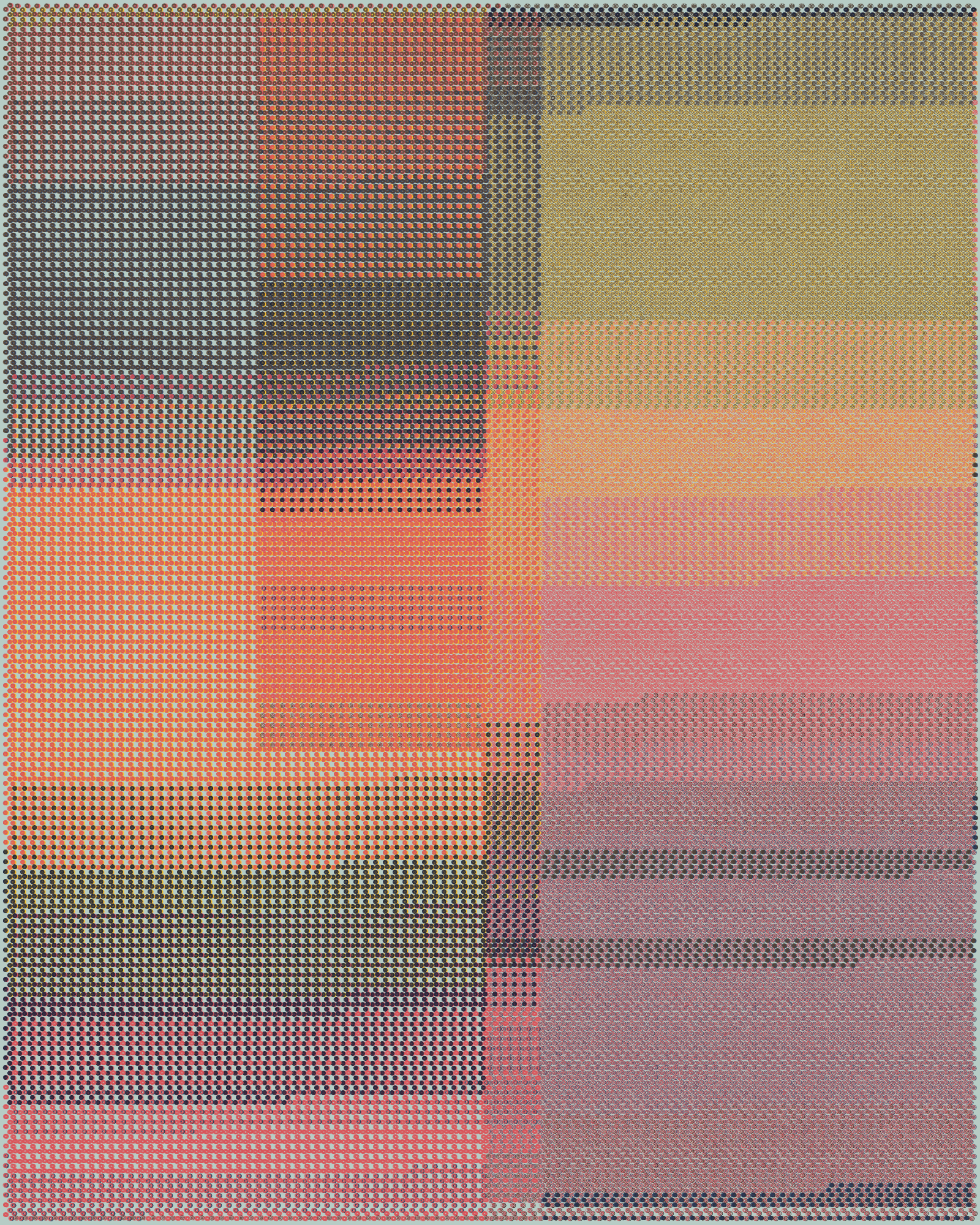
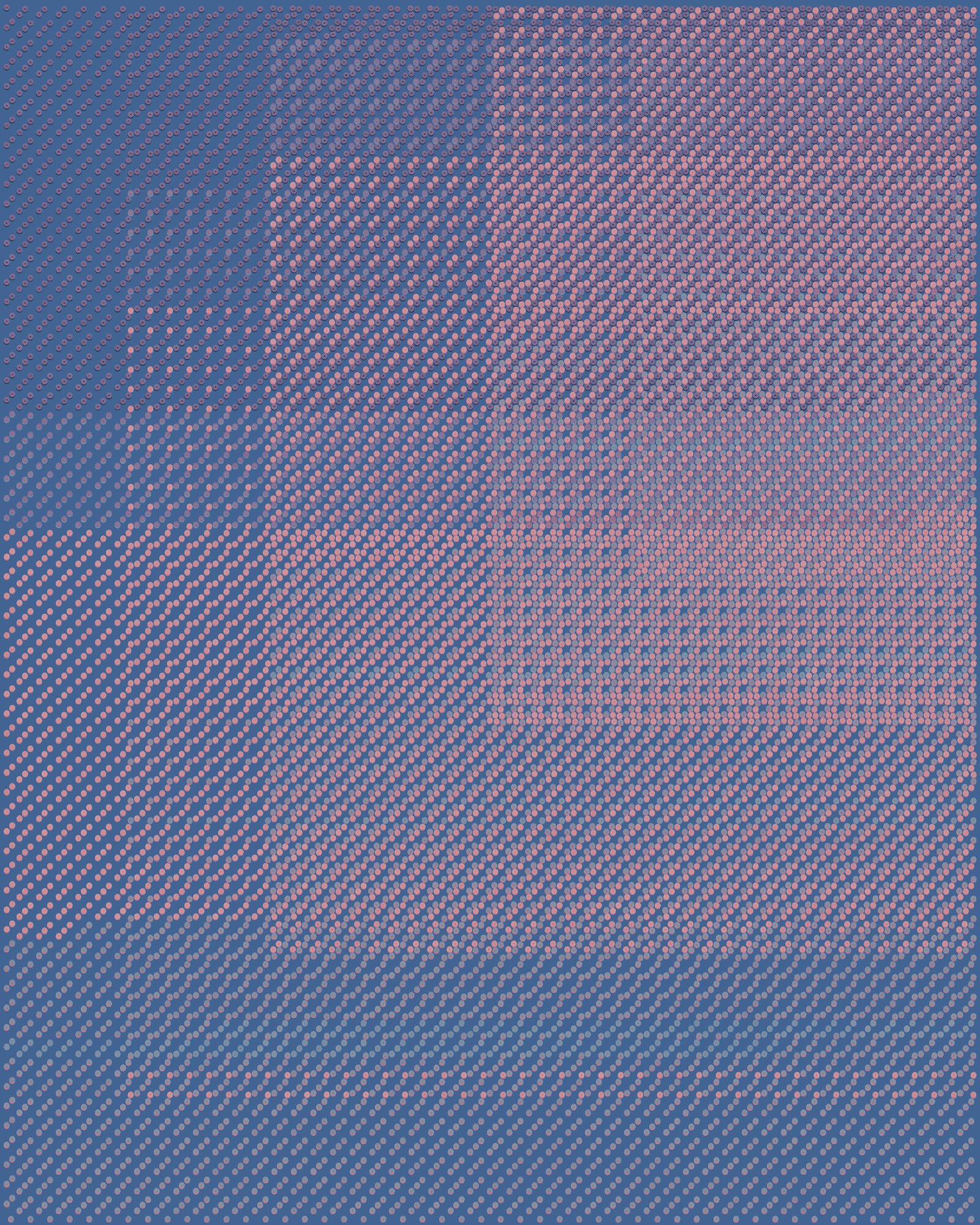
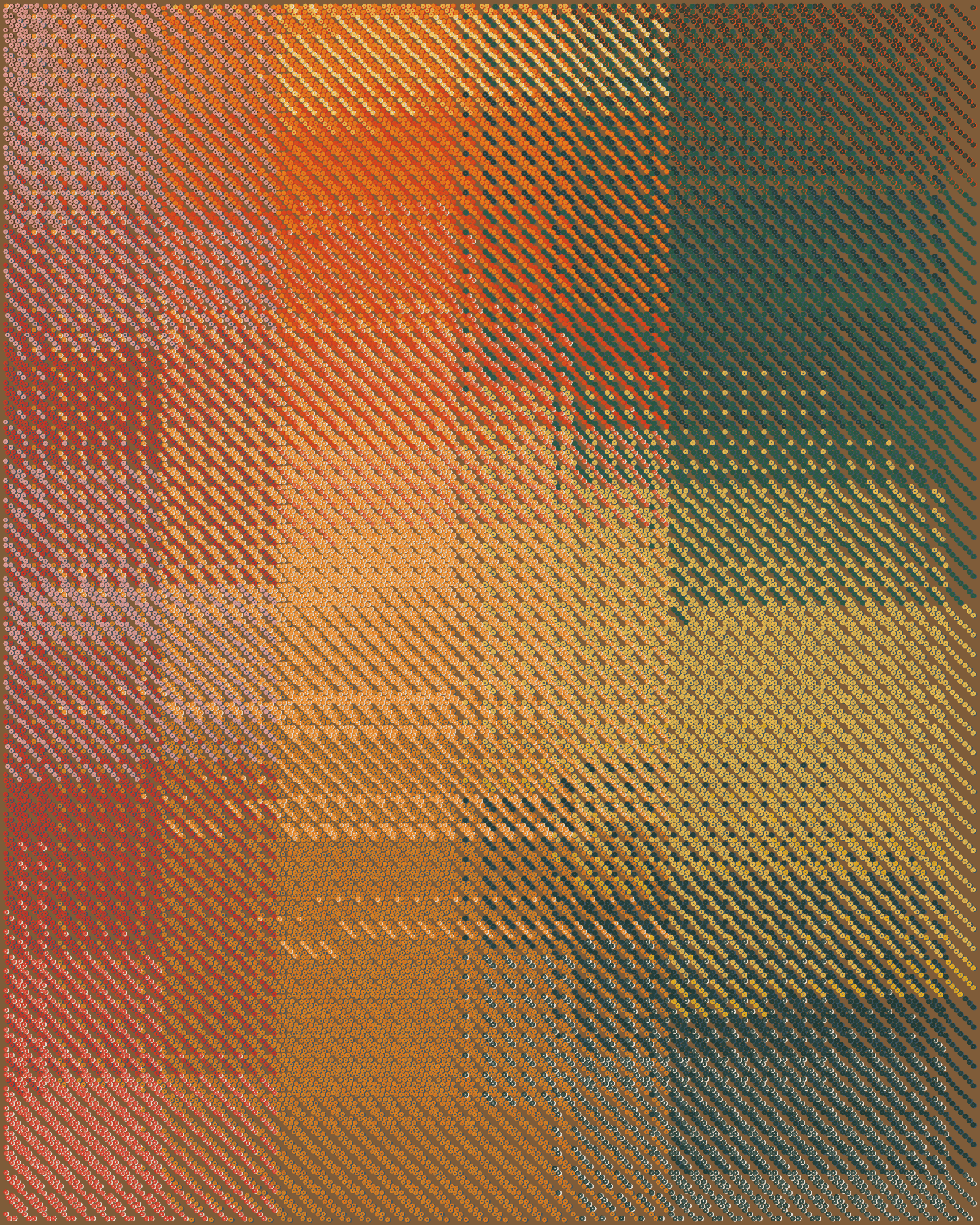
Palette Grid
As we’ve seen, grids of rings are one of the bases of QQL generation. When we find a single-group Formation grid with No turbulence a grid may be revealed. Using a Horizontal or Vertical direction can produce regular grids, while using Random Radial may generate a staggered grid, if we find a seed with no flow field rotation.
High color variety is essential to find a grid with as much diversity as possible, while the Zebra color mode can be used to have even more diversity ring by ring. With this type of seed we are looking to display the color diversity of QQL palettes.
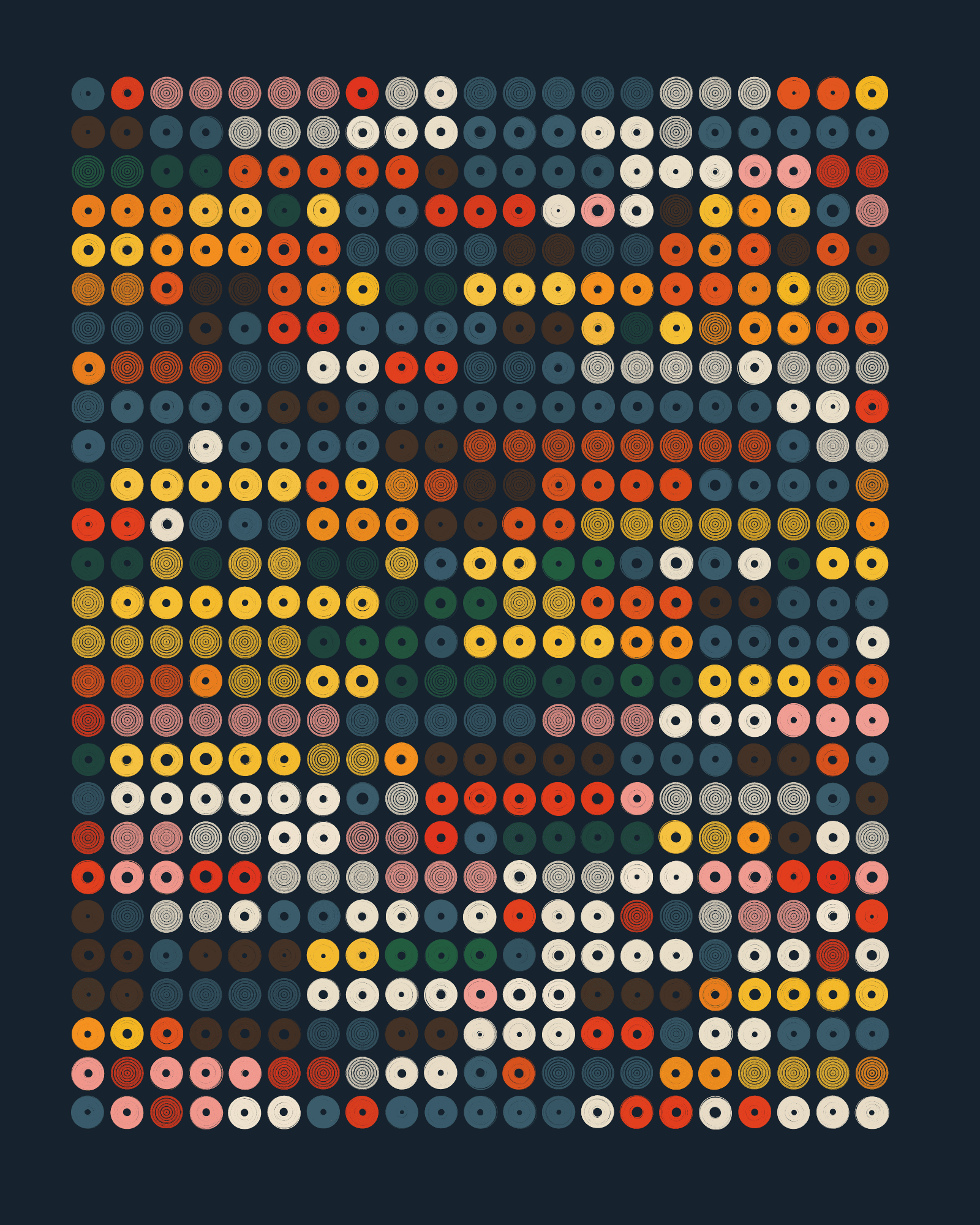

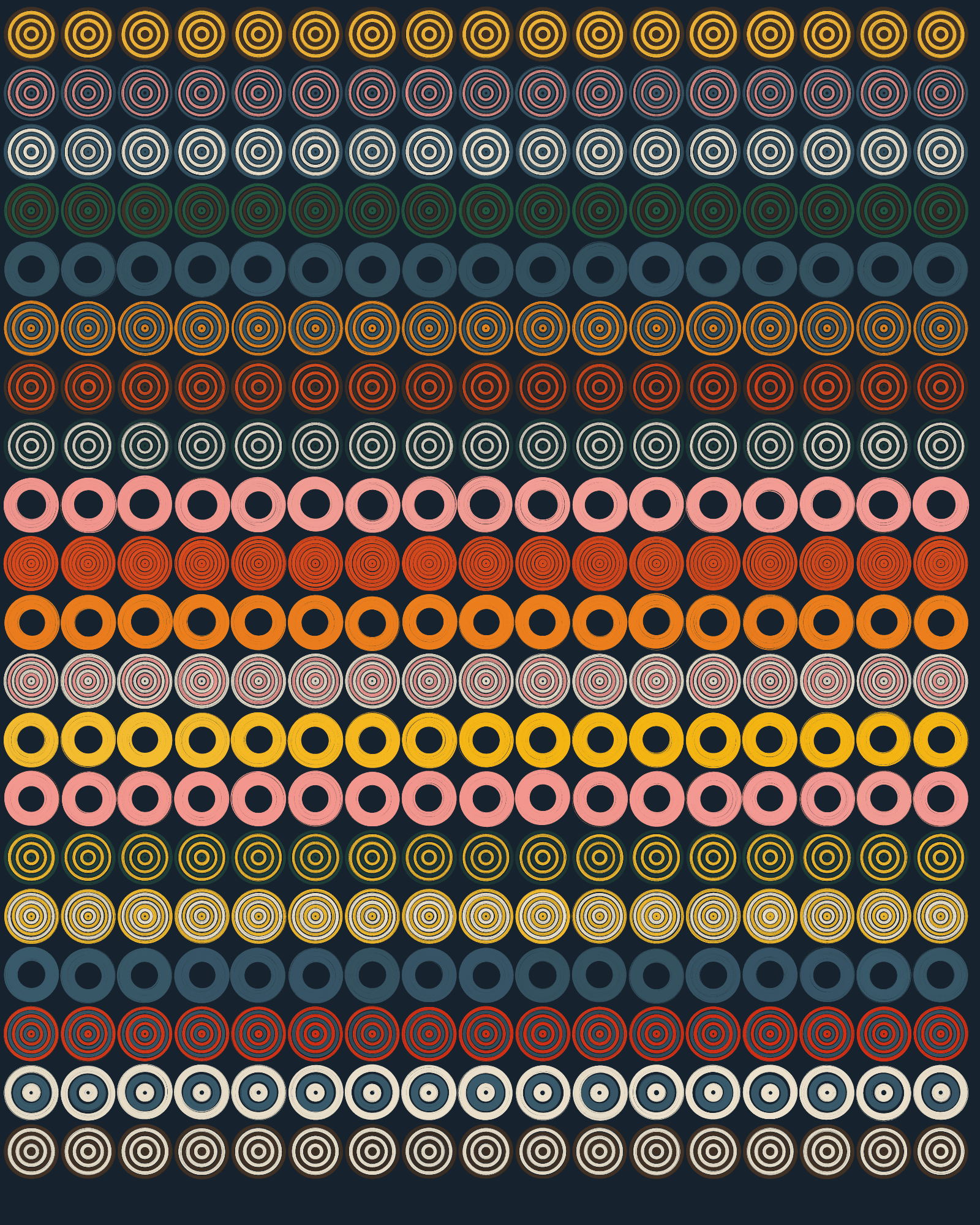
Disorderly Grid
Another type of grid we can look for when rendering seeds are the “imperfect” grids—where the underlying structure is still clearly visible, but made more interesting by subtle distortion. A touch of Low turbulence (or sometimes even High) bends the shapes just enough to break uniformity without losing the grid’s recognizable form.
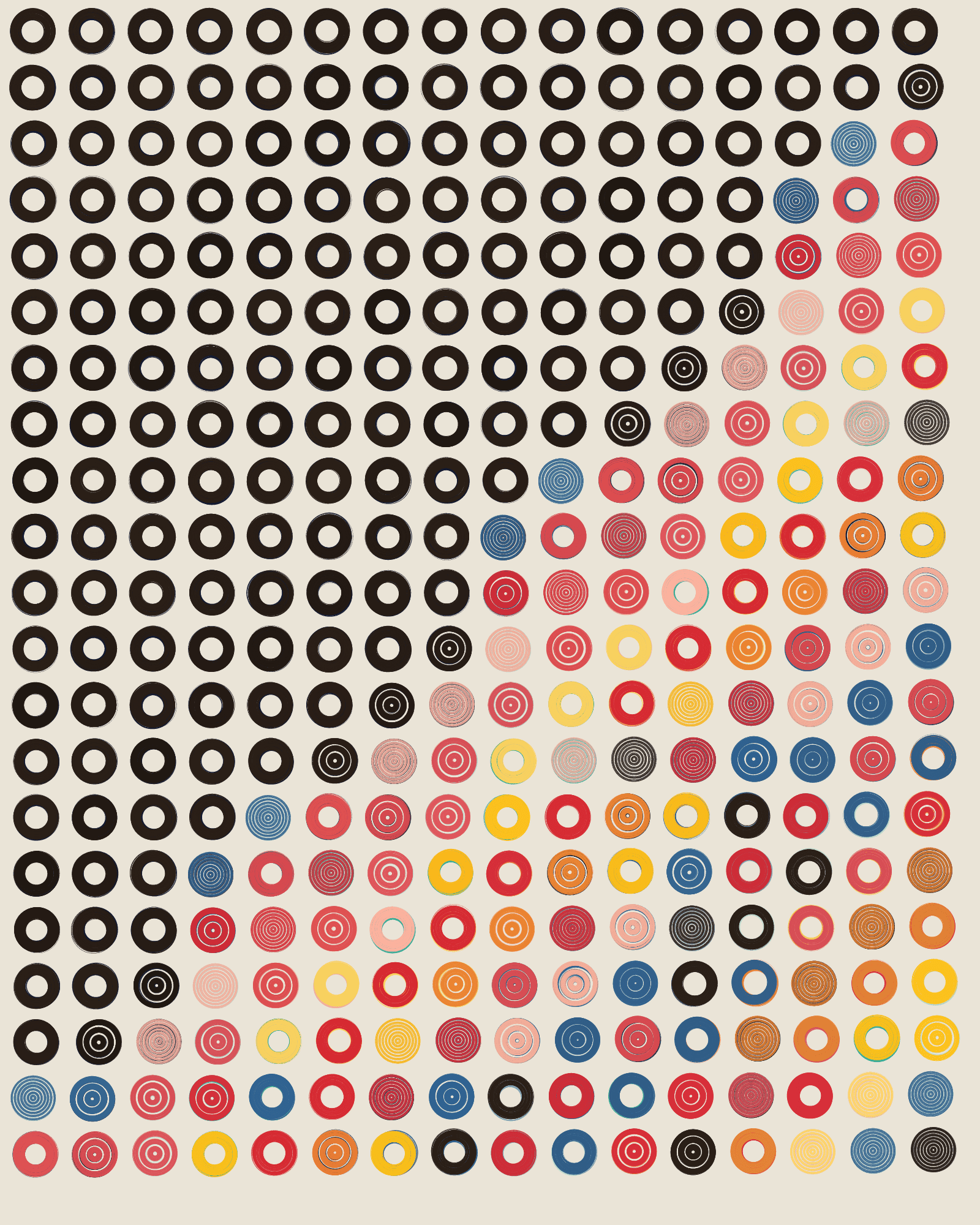
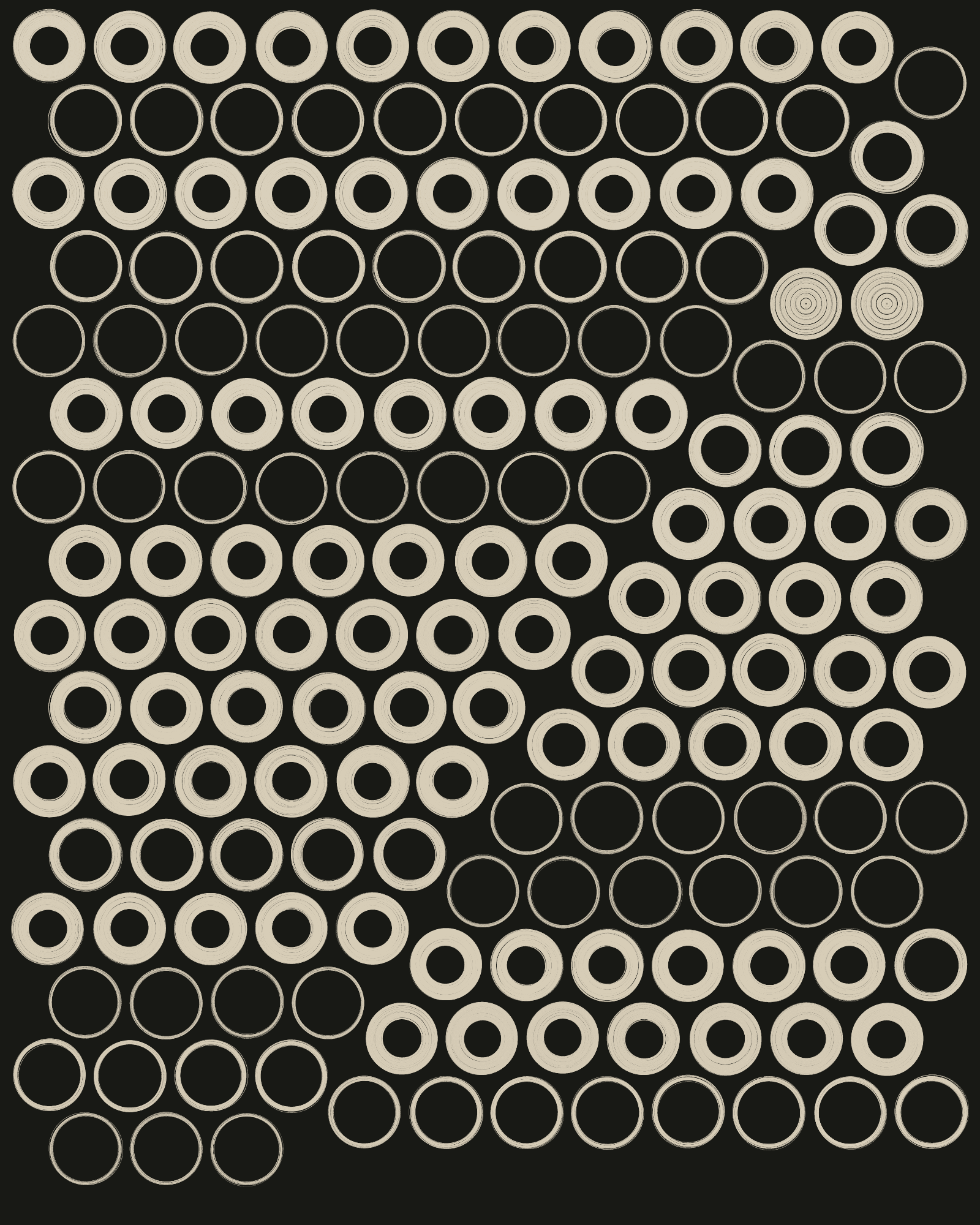

Micro
When using the Small and Wild ring properties, there’s a small chance of producing a Micro—a seed made of tiny rings whose composition is shaped entirely by its flow field. A seed is usually considered a Micro if it contains 50,000 rings or more.

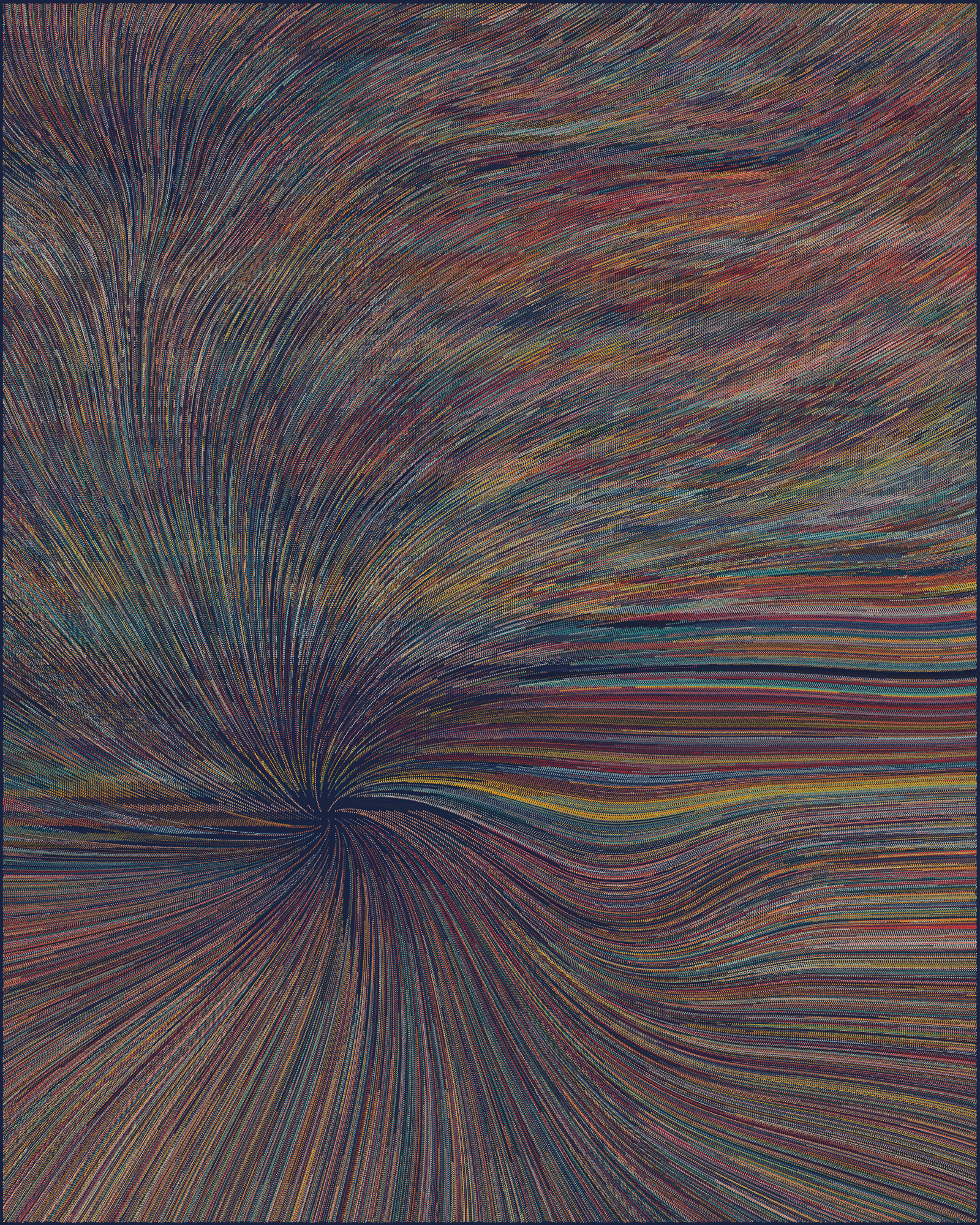

Fuzzy
A subset of Micro, a Fuzzy seed is one that through a Medium or High color variety achieves a blurry effect, almost as if the thin lines of rings were made out of single strands of color-changing hair. When the Stacked color mode is used, an even higher density of rings is achieved. This can produce the densest of Micro seeds, those that have over 200,000 rings.
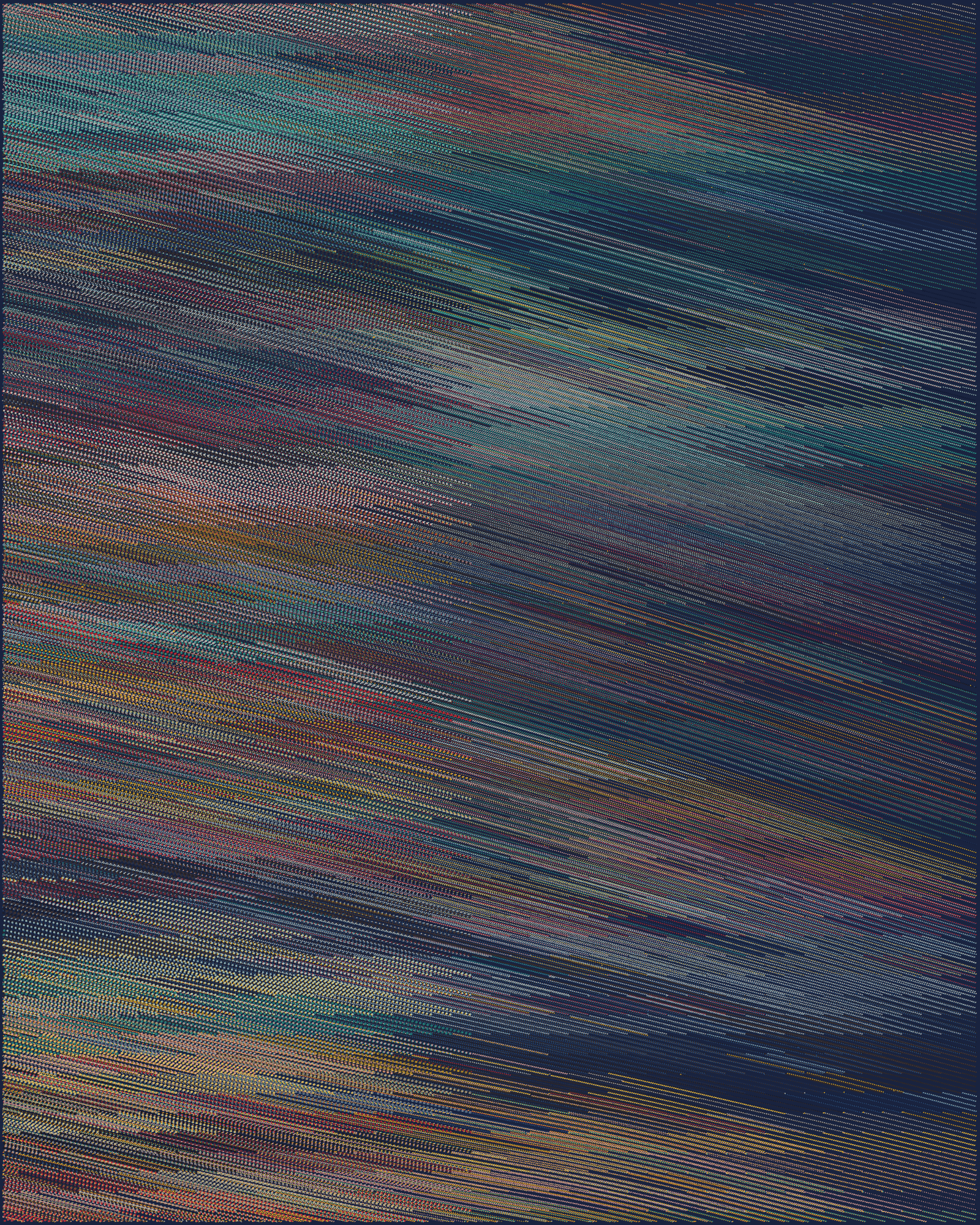
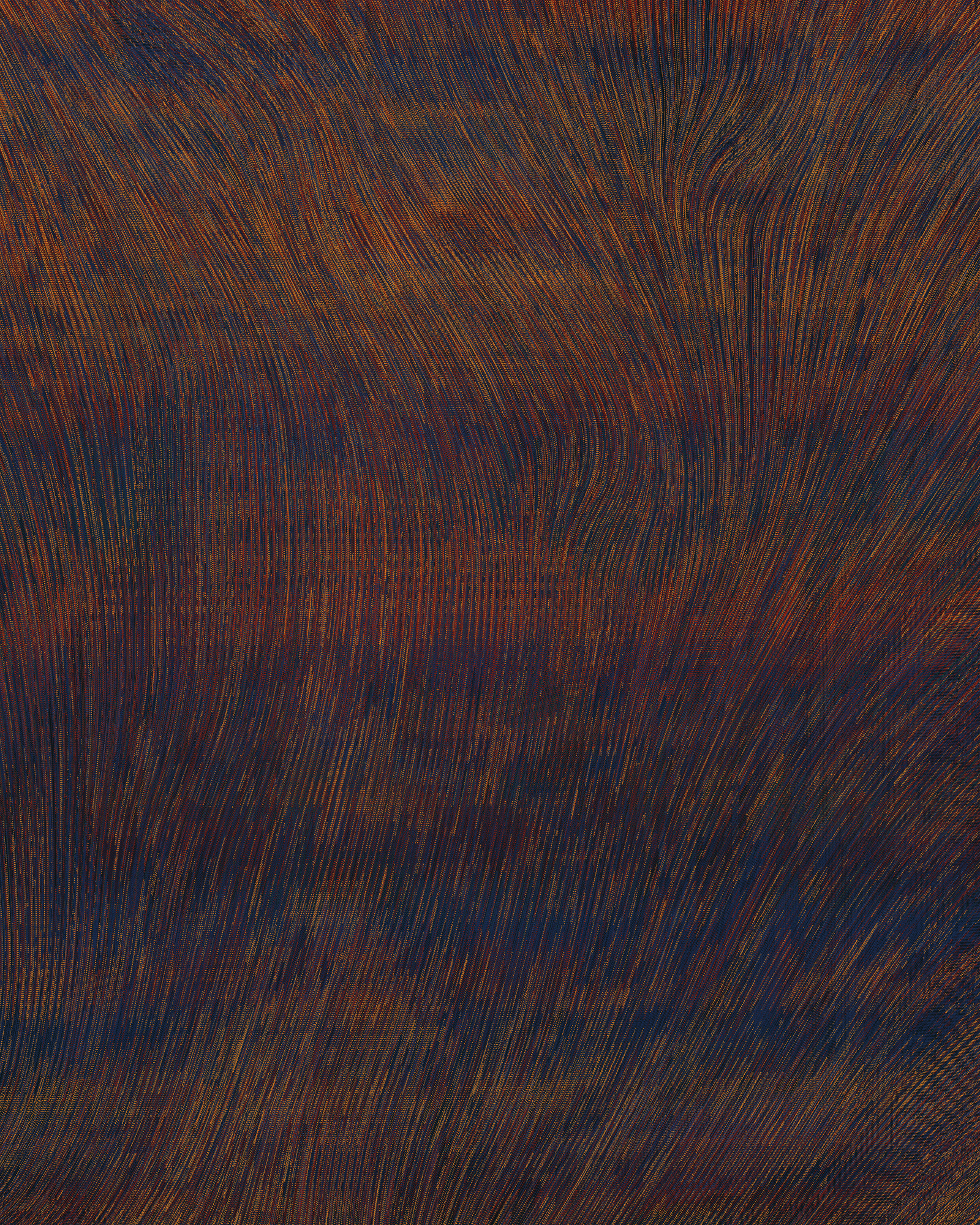

Solid Paint
Even 7-band, Thick QQL Rings have a bit of spacing between bands making it possible to distinguish the properties of the ring. When these properties are combined with the Stacked color mode, rings will look as textured, solid paint dots.
Medium rings are the right size to appreciate this texture at its best, while High color variety can result in a splatter effect.
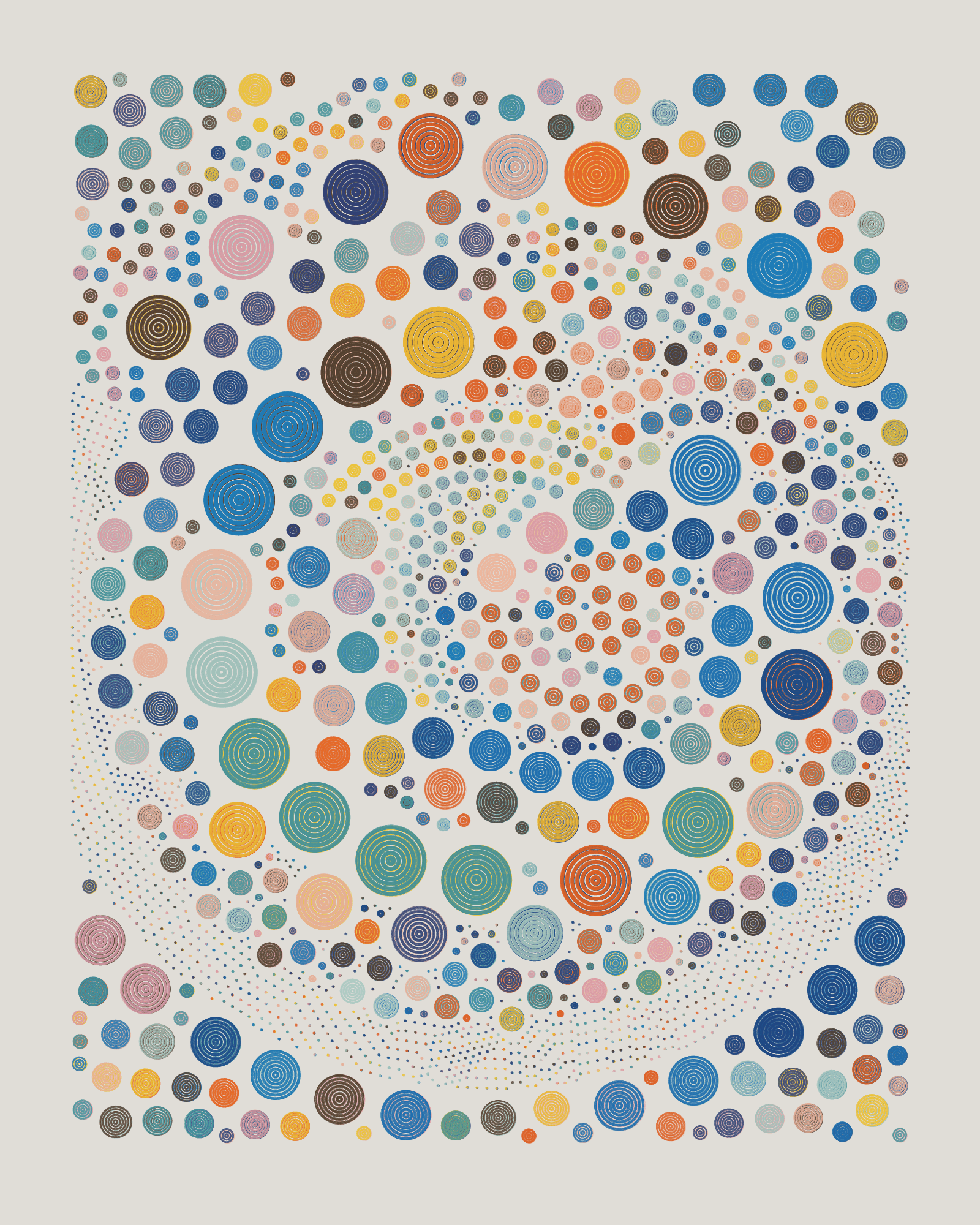

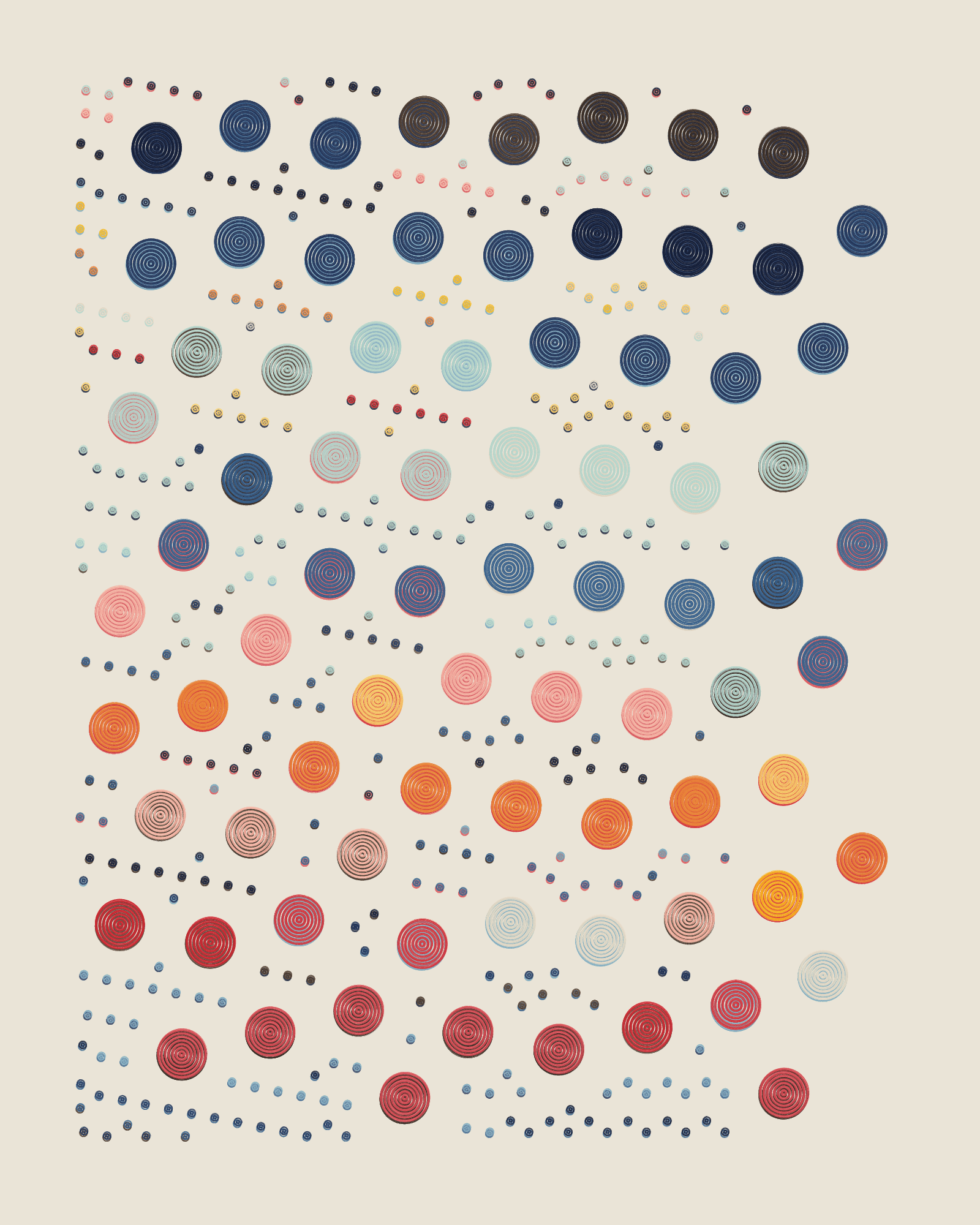
Painterly Offset
Similarly, we can find rings with a Painterly quality to them when the Stacked offset is large, dark and clearly visible, placed below white or soft-tone rings. The Fidenza palette is the best equipped with light and pastel colors in its catalogue to render seeds in this style. Selecting Low color variety will help us find single-color-rings seeds where the effect will look stronger and more cohesive.
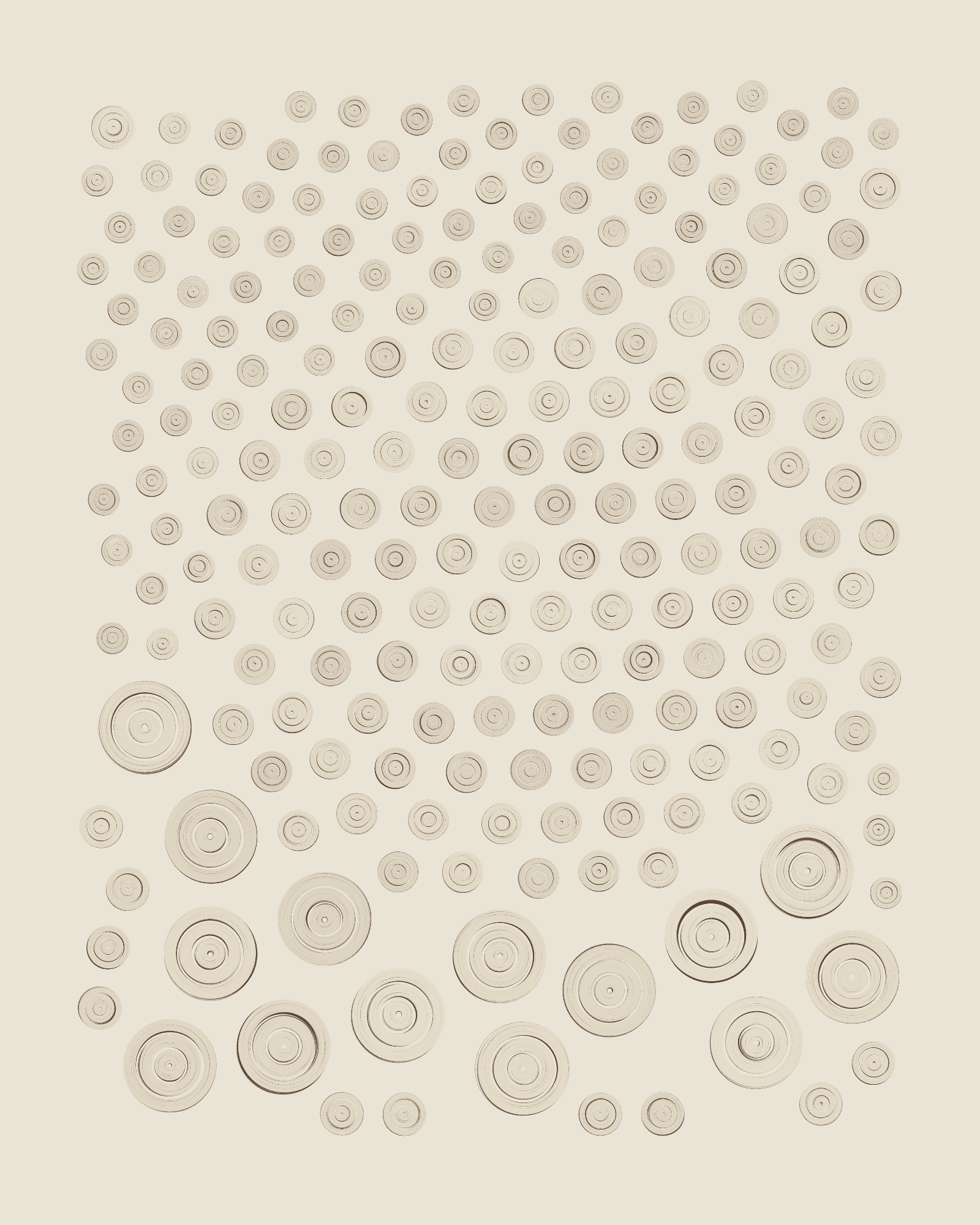
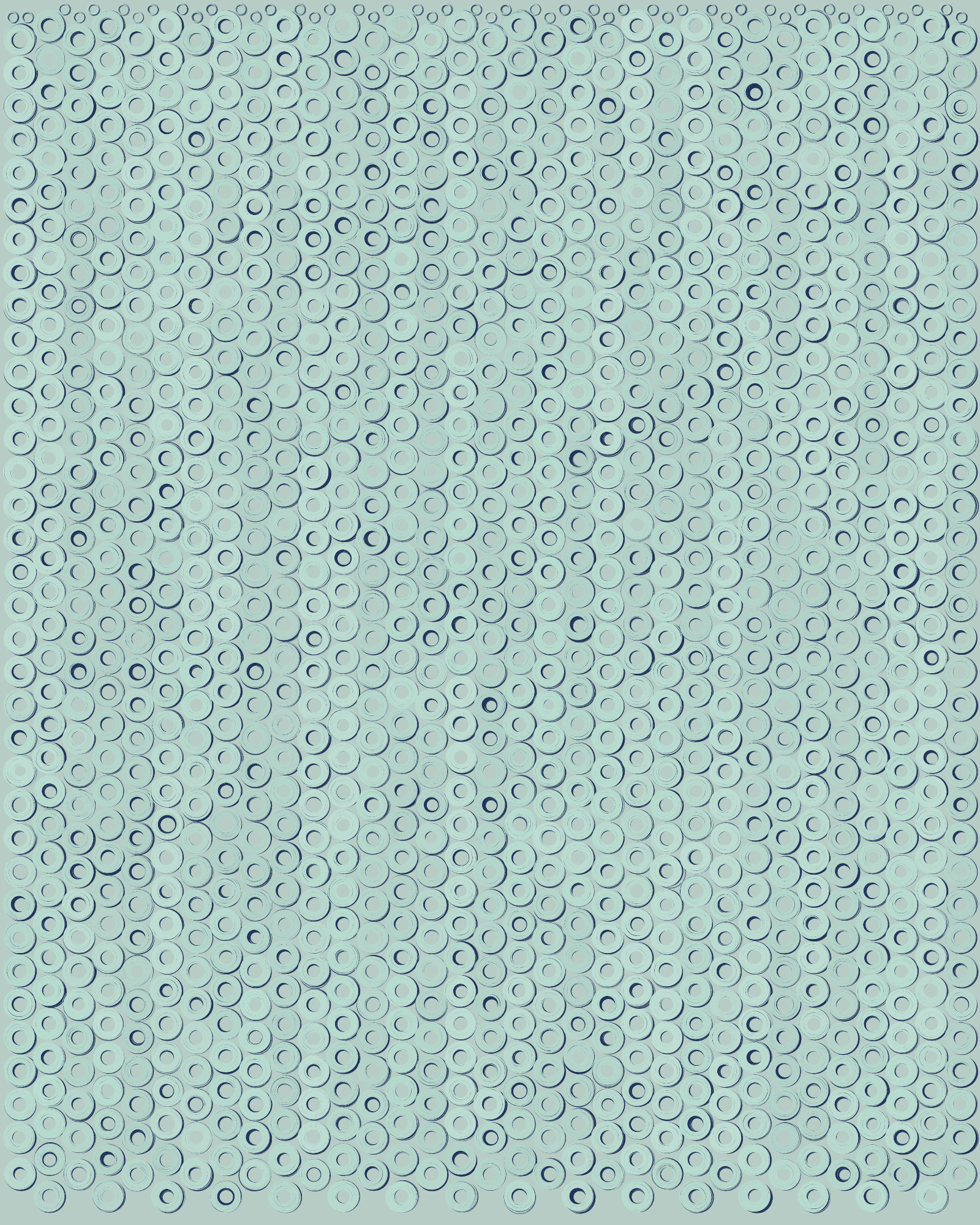
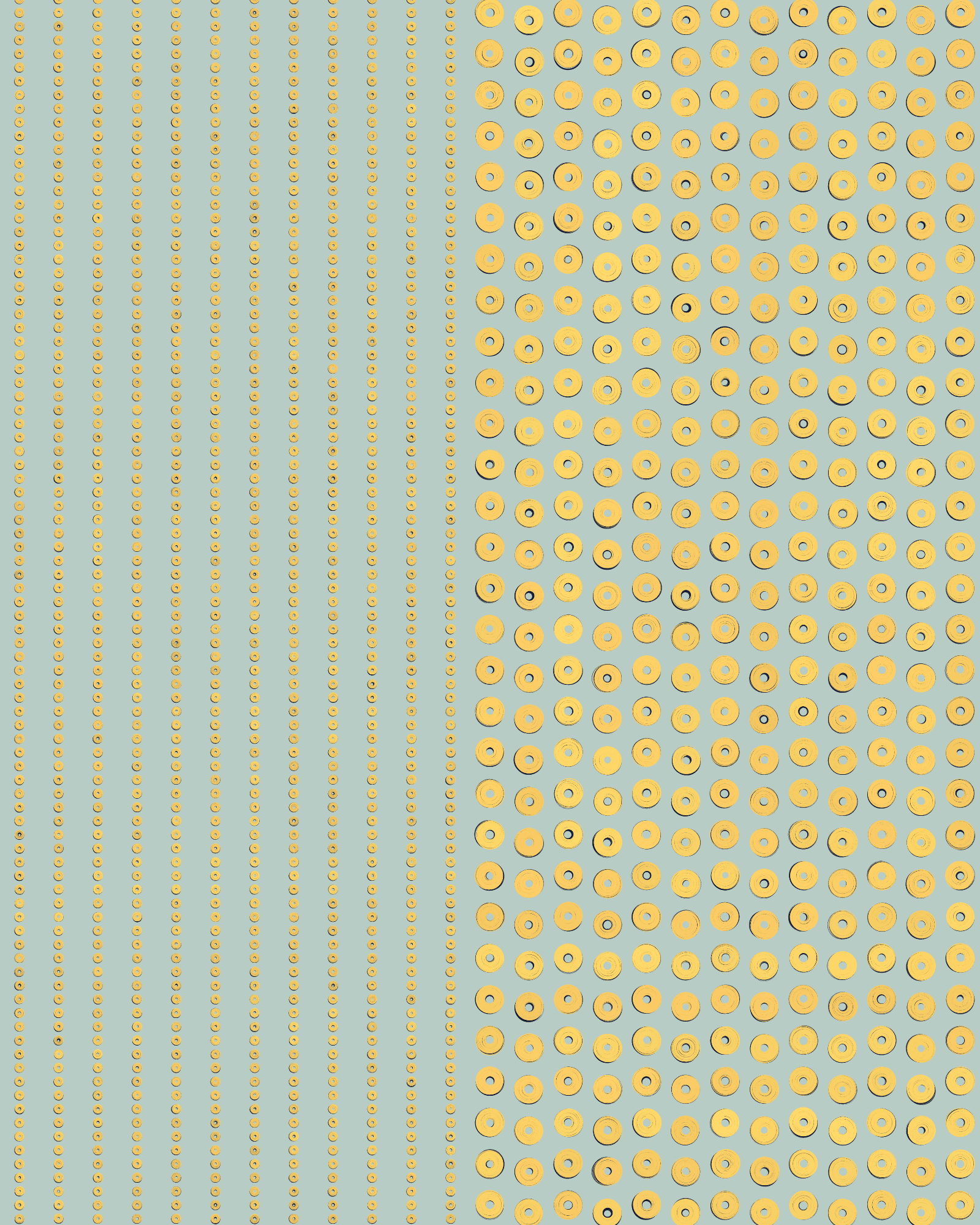
Monochrome
Minimalistic Monochrome outputs retain an intricate depth through the interesting ways rings can be drawn on the canvas. Margin None or Crisp is required to fill the canvas with color to the edge. Low color variety is optimal to produce single-color seeds. And, Small, Dense rings with Variable size variety introduce enough variation to make the seed not just about color.
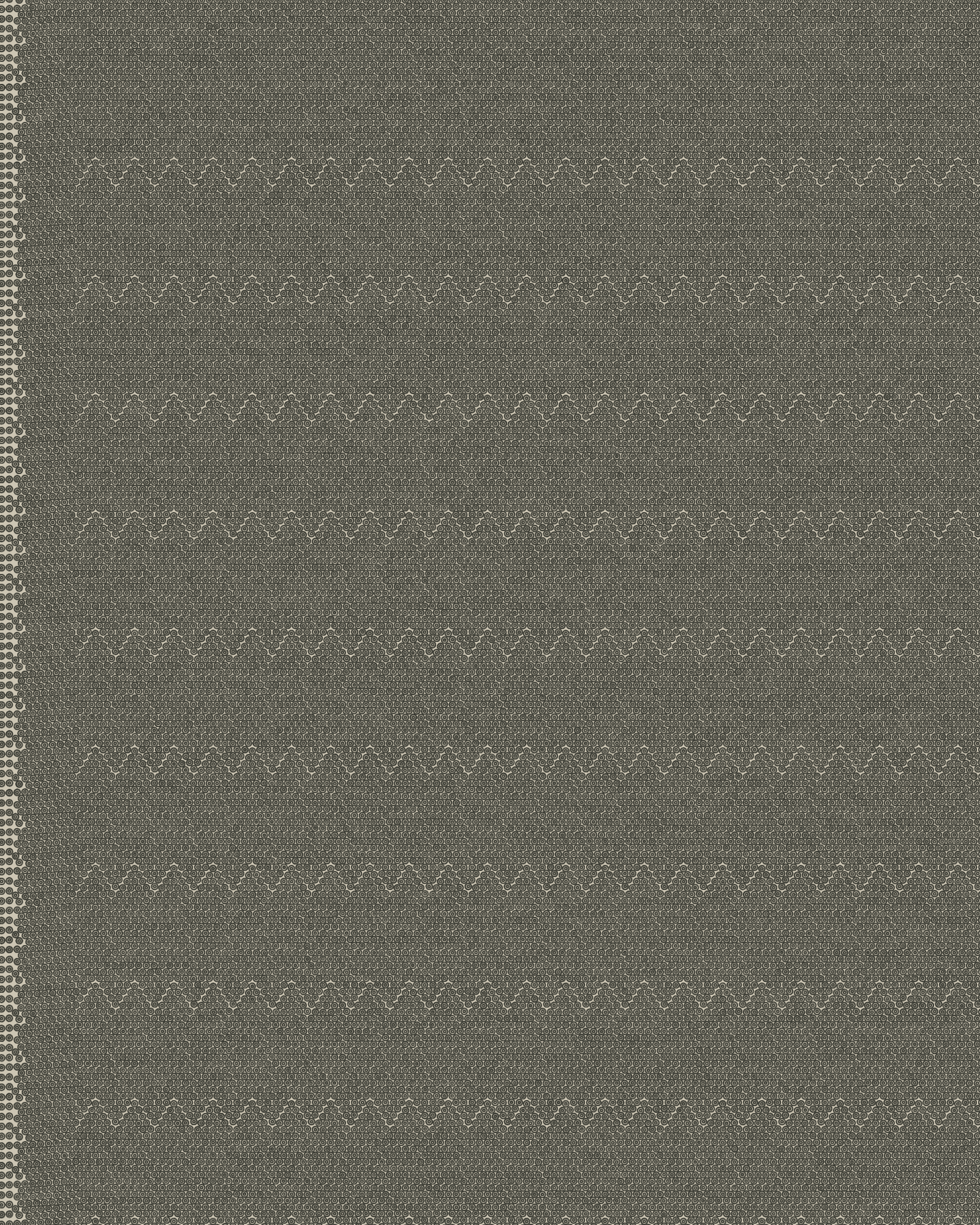

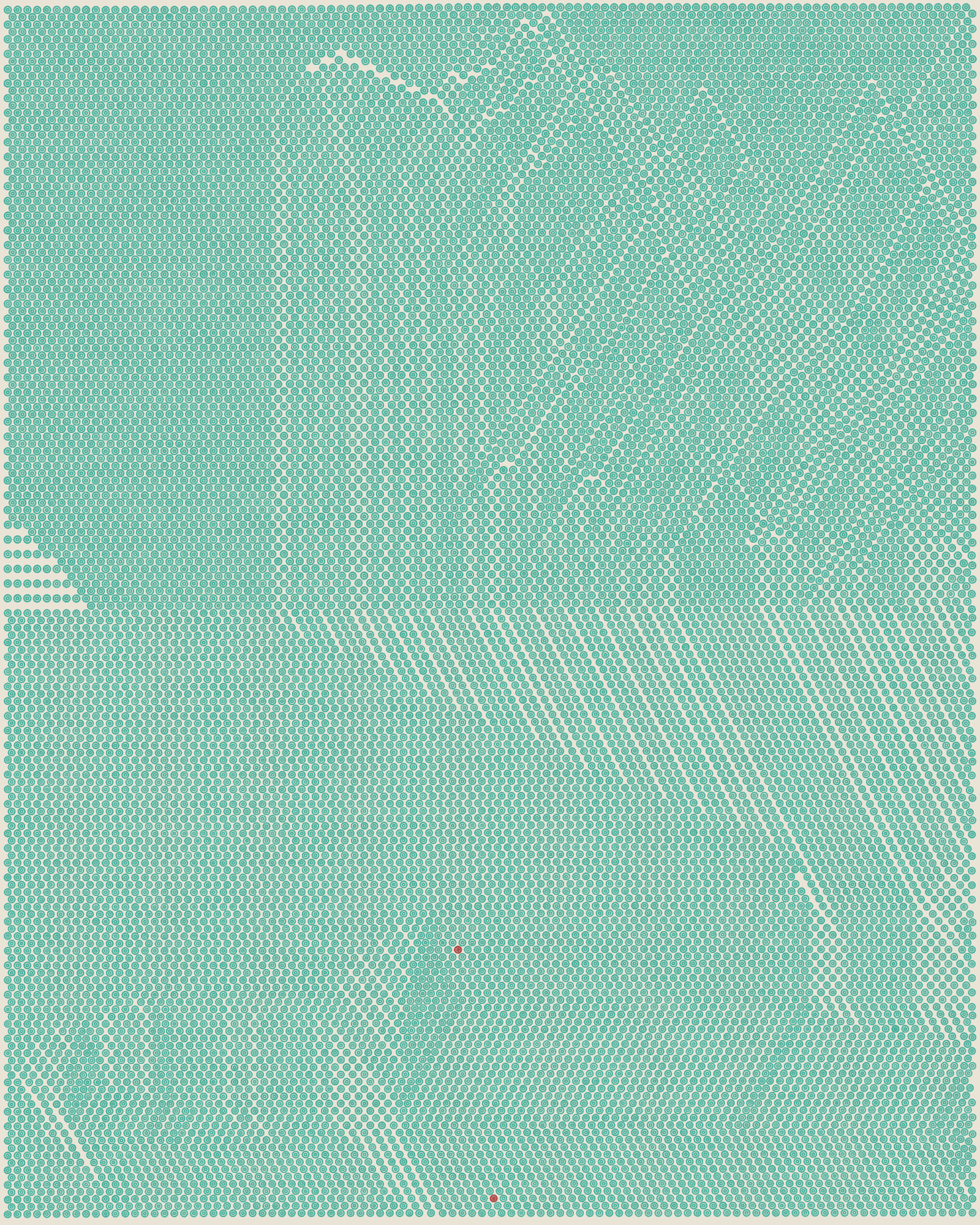
Color Fields
Color Fields is another minimalistic approach, that may sometimes be evocative of Rothko’s or Newman’s abstract paintings. Small, Dense, rings generated in a Vertical or Horizontal direction and using the Formation structure can produce bands of rings of the same color.
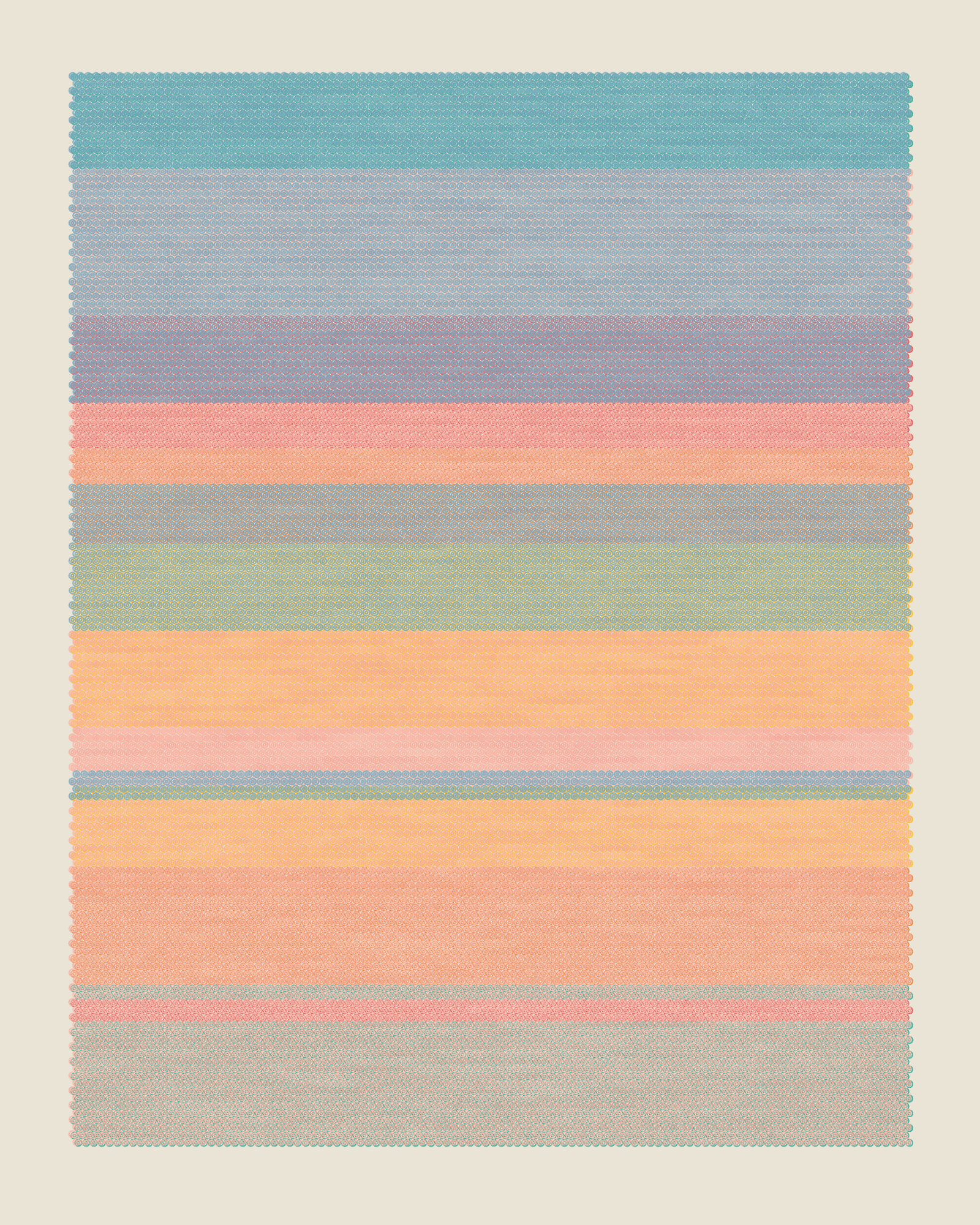
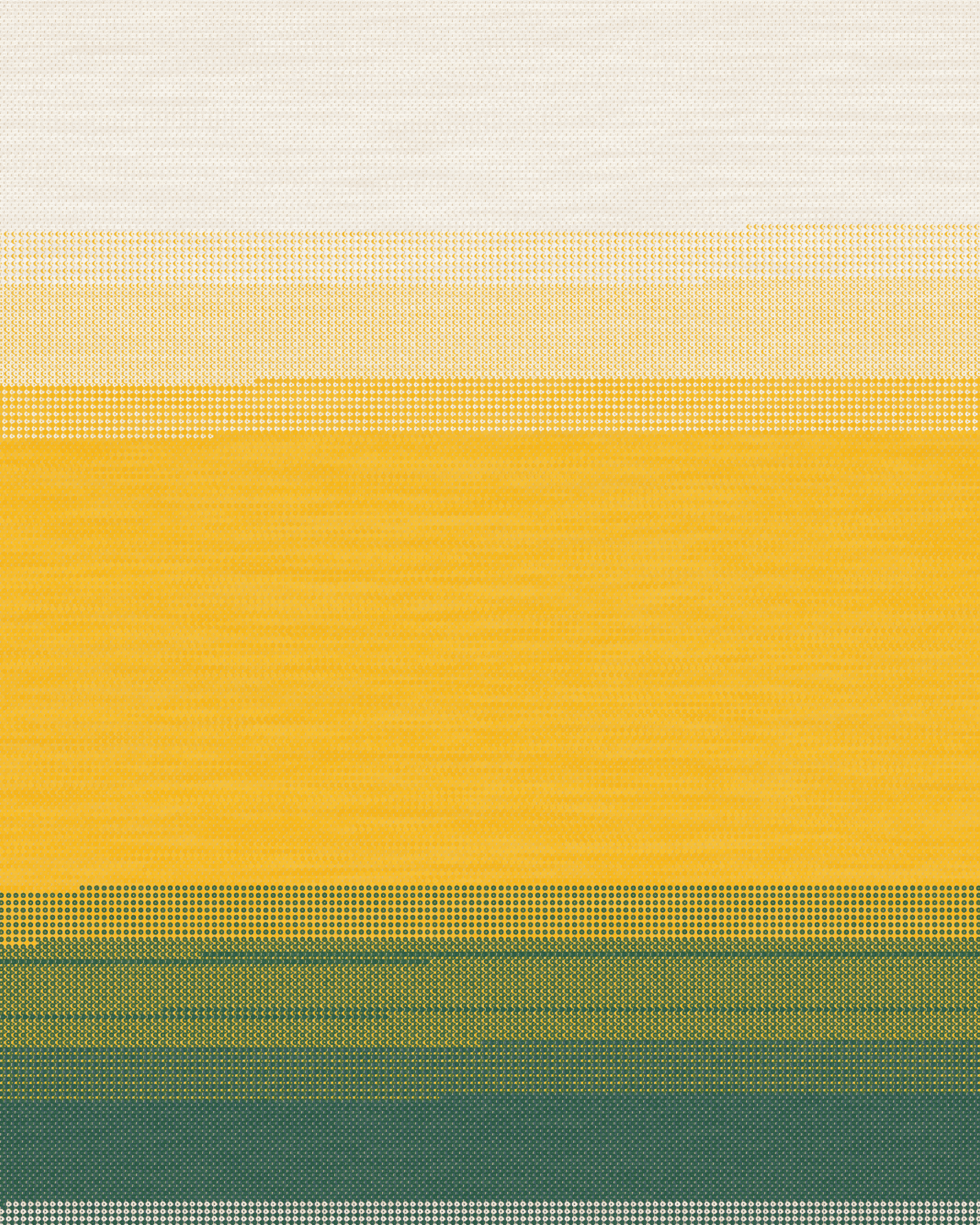
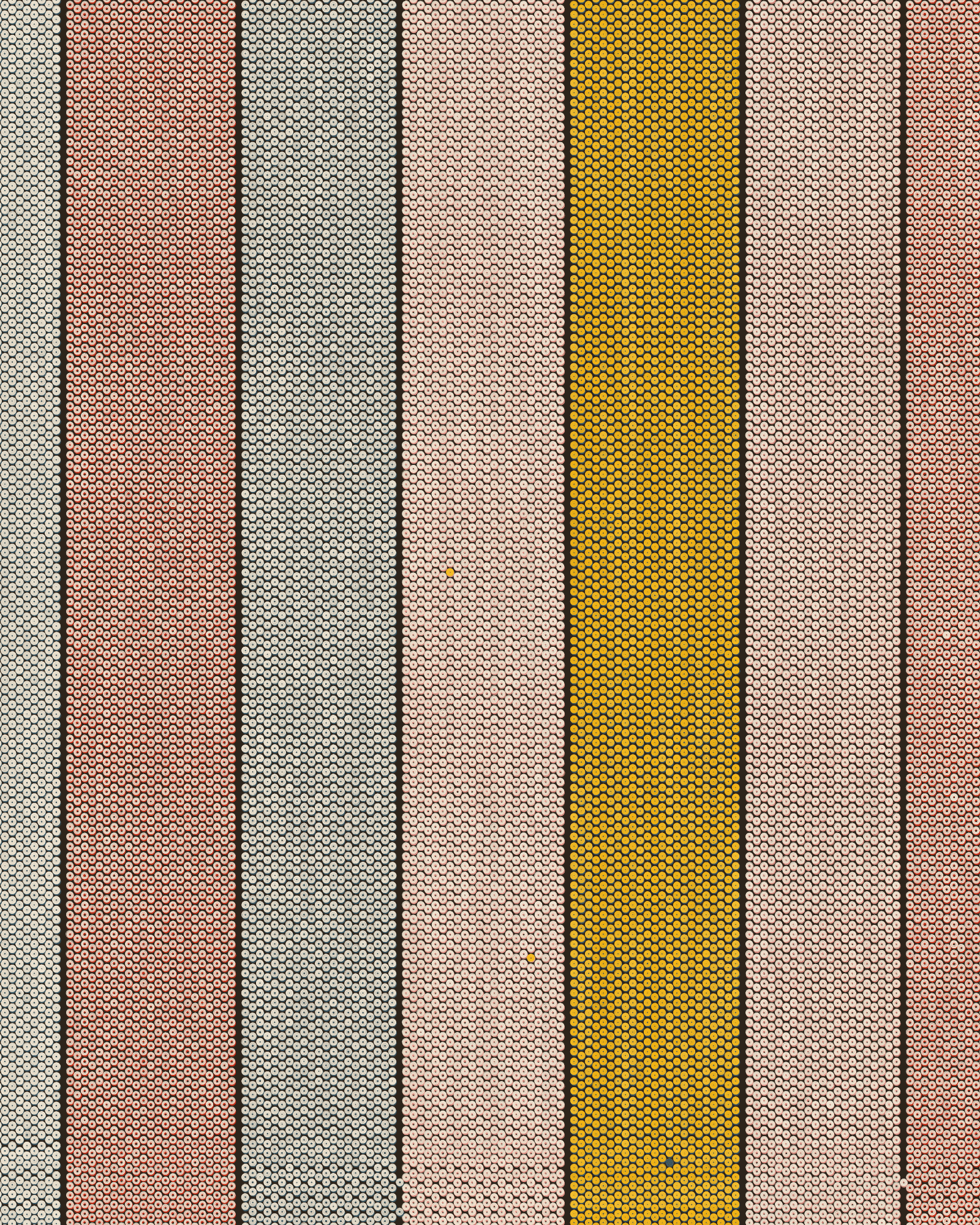
Circle of Circles
Using the Shadows structure together with Circular direction—and finding a seed where the flow field center aligns with the structure center—can produce rings that visibly move in a circular motion, at least for a portion of the seed.
Medium-sized rings often strike the right balance: they’re large enough to clearly reveal the circular pattern, while still maintaining the distinct arrangement that makes the Shadows structure recognizable.
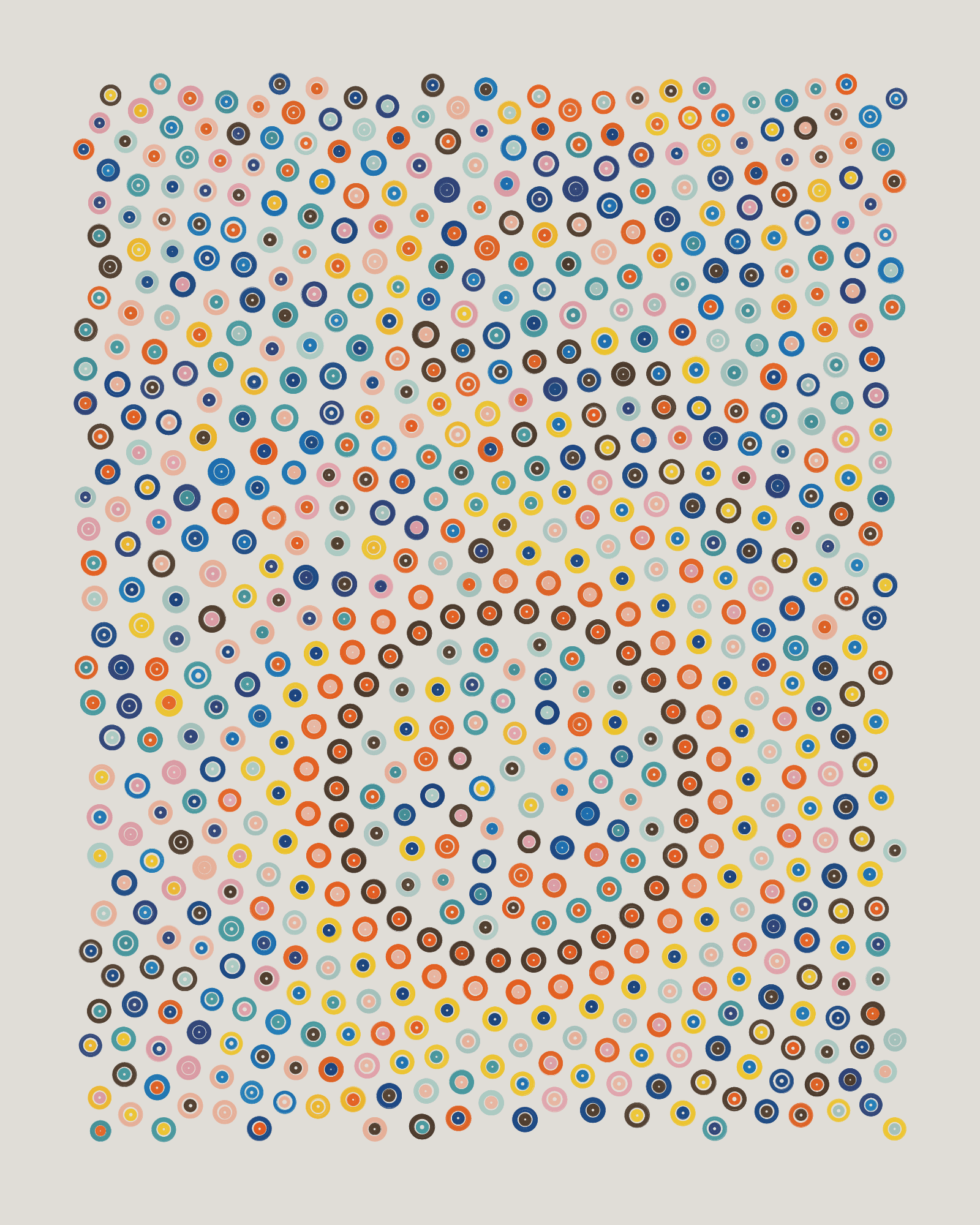
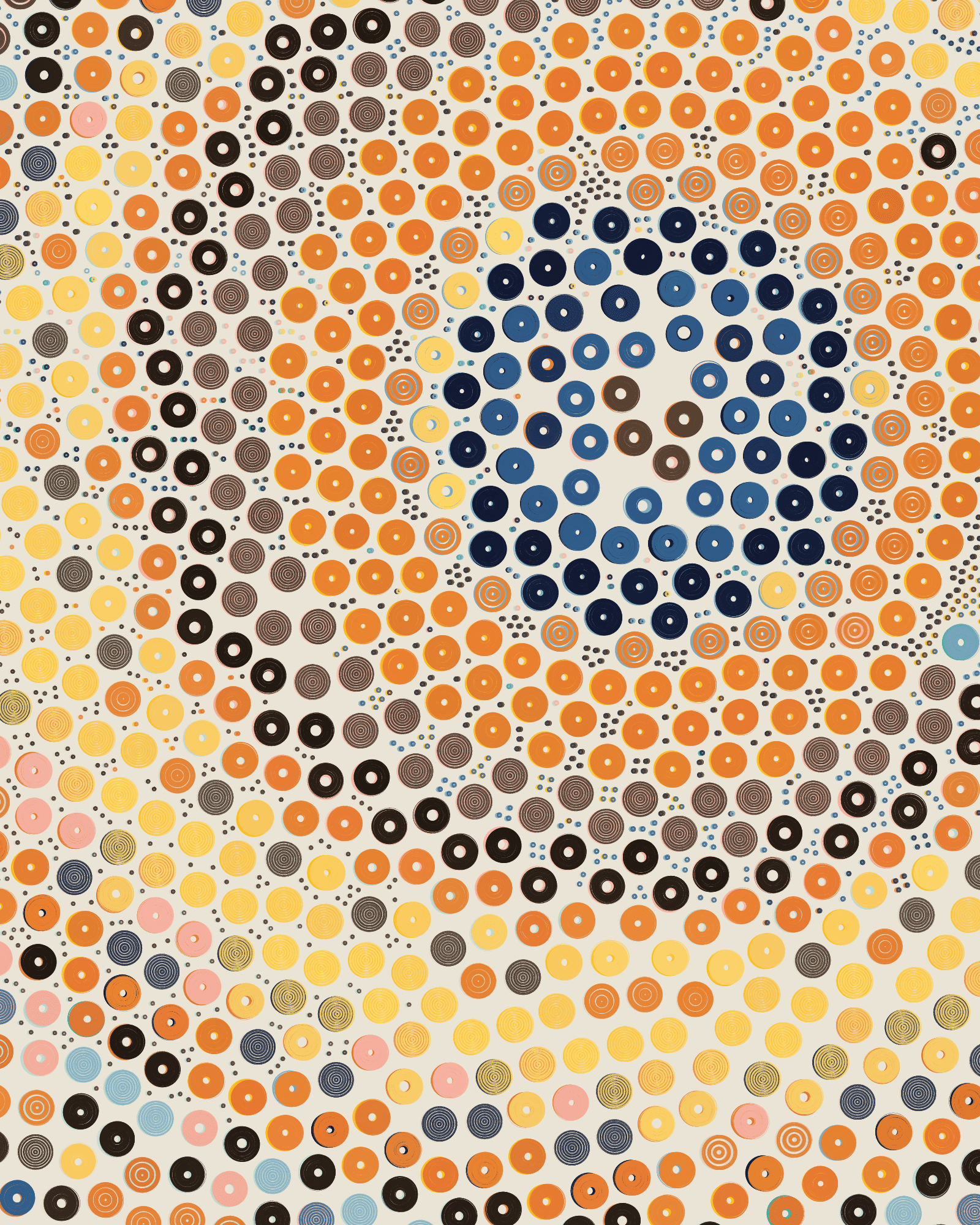
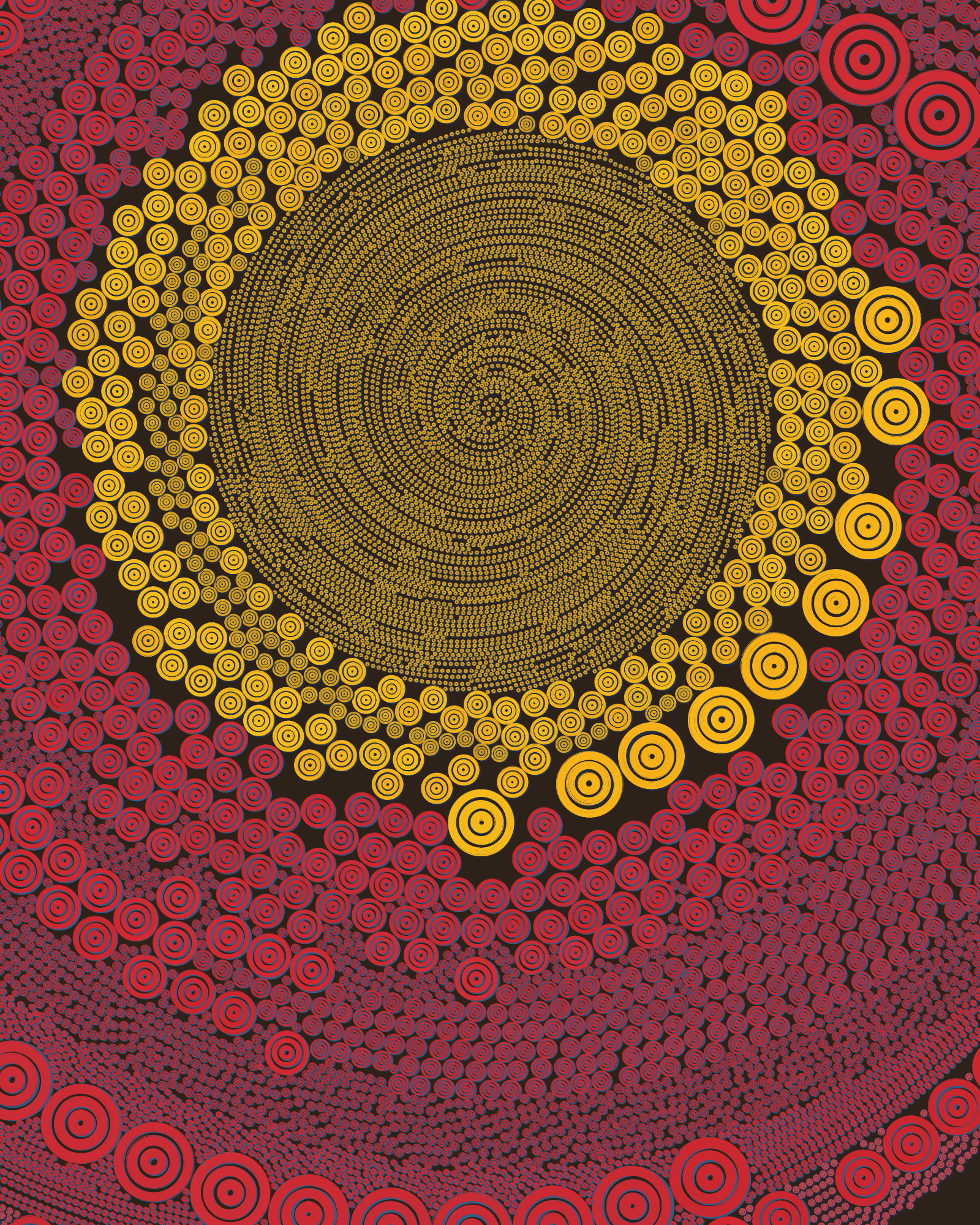
Bidirectional
There is a chance for Radial-direction seeds to mix their rotating direction with an unexpected linear group of rings resulting in Bidirectional lines of rings. When this happens, the effect is that of two seeds mixed into a single canvas.
When there is a good balance between straight and curved lines of rings, the visual outcome is one of the most surprising the algorithm can generate.
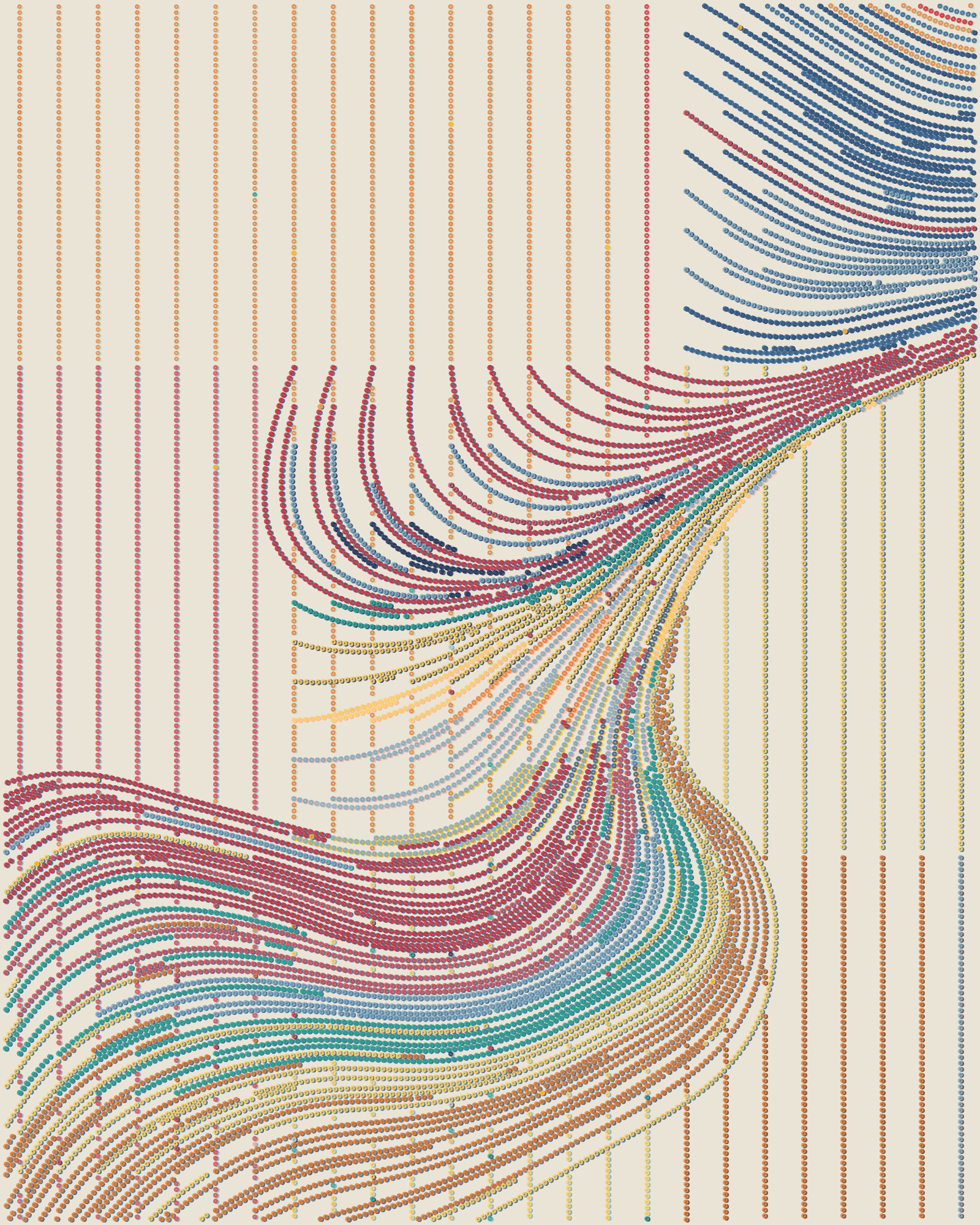
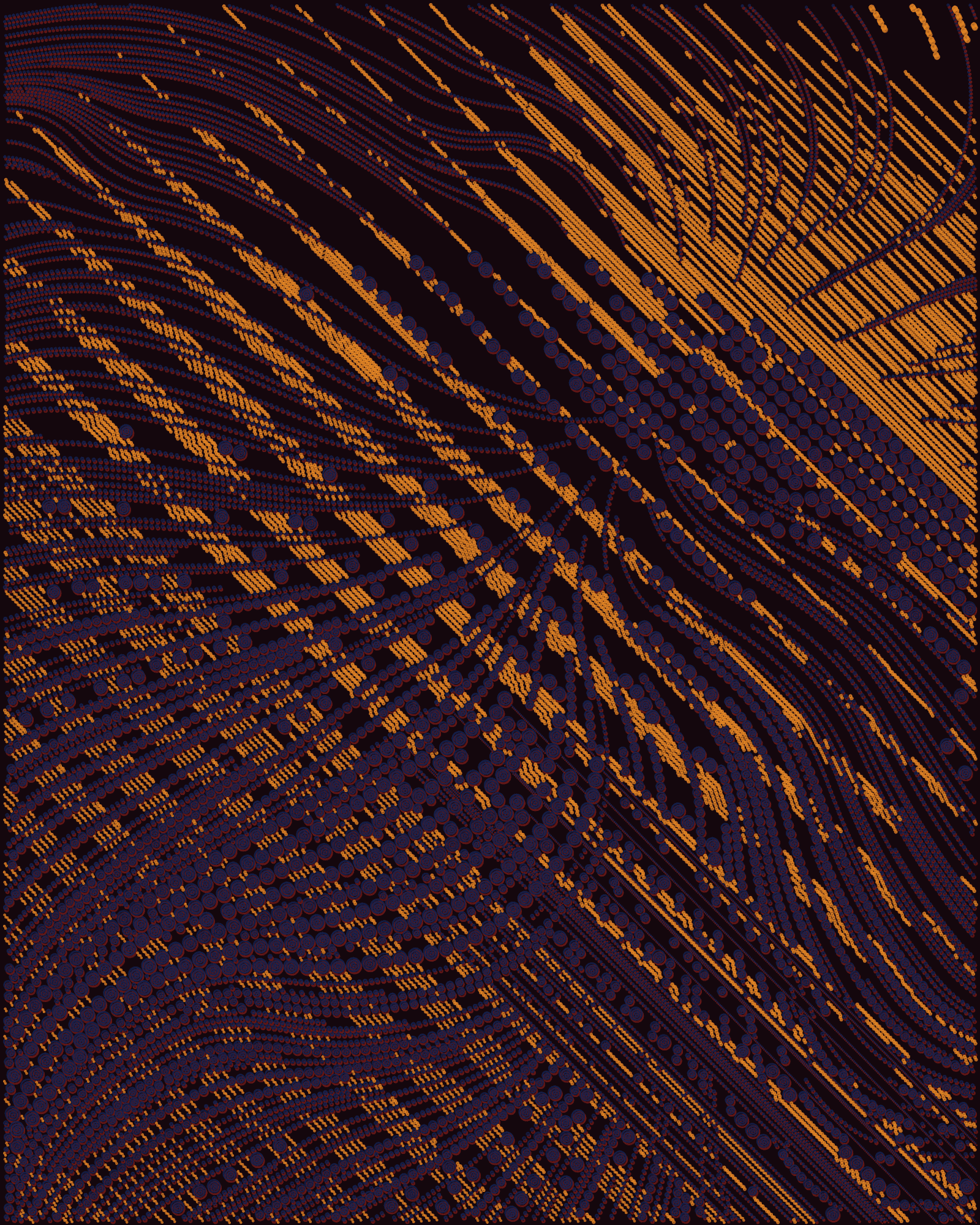
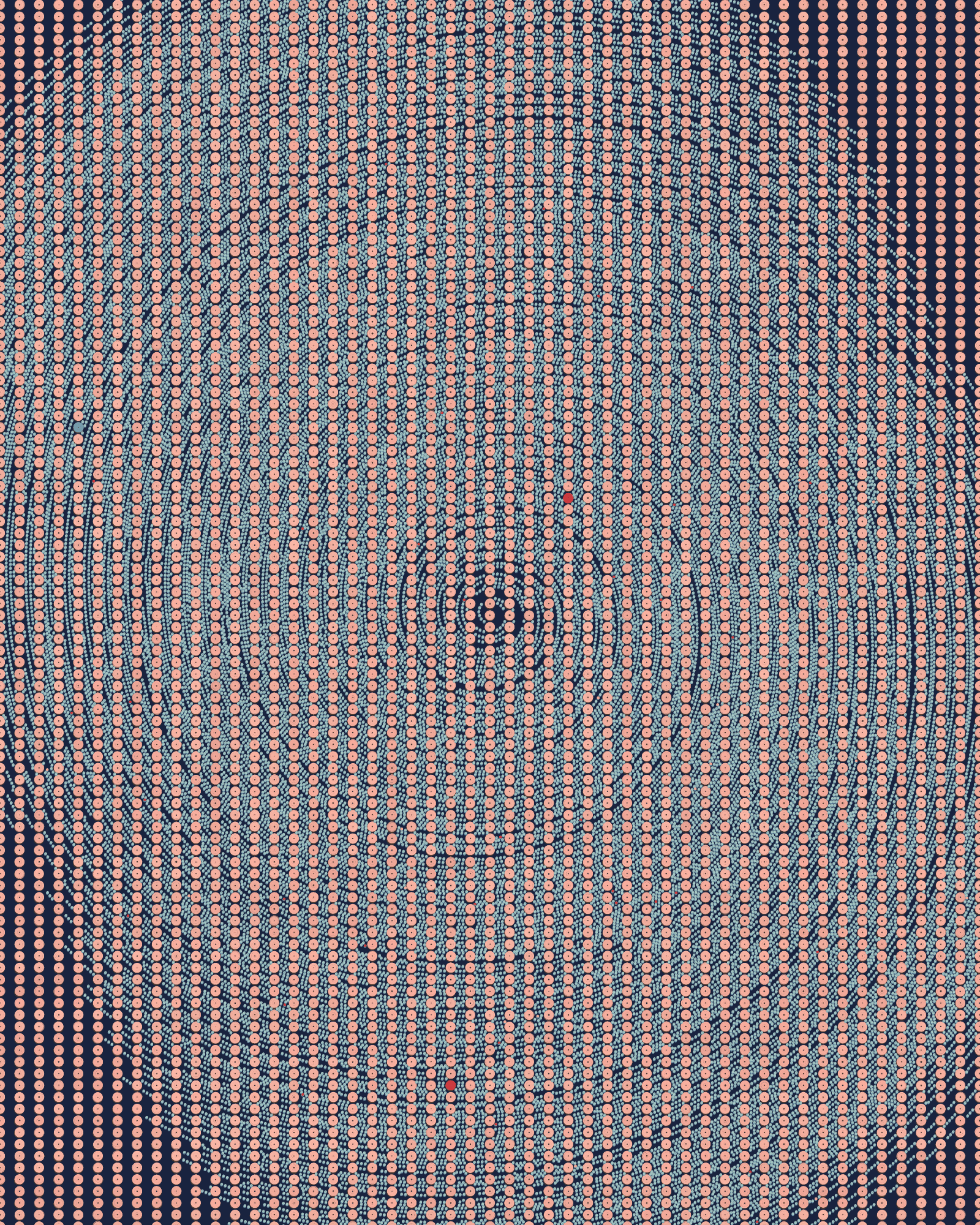
Sculptural
The balanced relationship between Sparse, Large rings of Variable size generates Sculptural compositions that make beautiful use of negative space. These settings will draw just a “few” rings that arrange in either minimalist or organic ways where the resulting shape is what leads the aesthetic value of a seed.
Using a Wide margin ensures that the edges of the ring groups are not straight and monolithic and that there is ample emptiness surround the composition. The soft colors of Edinburgh and Seattle palettes tend to work well with the concept of digital sculpture too.
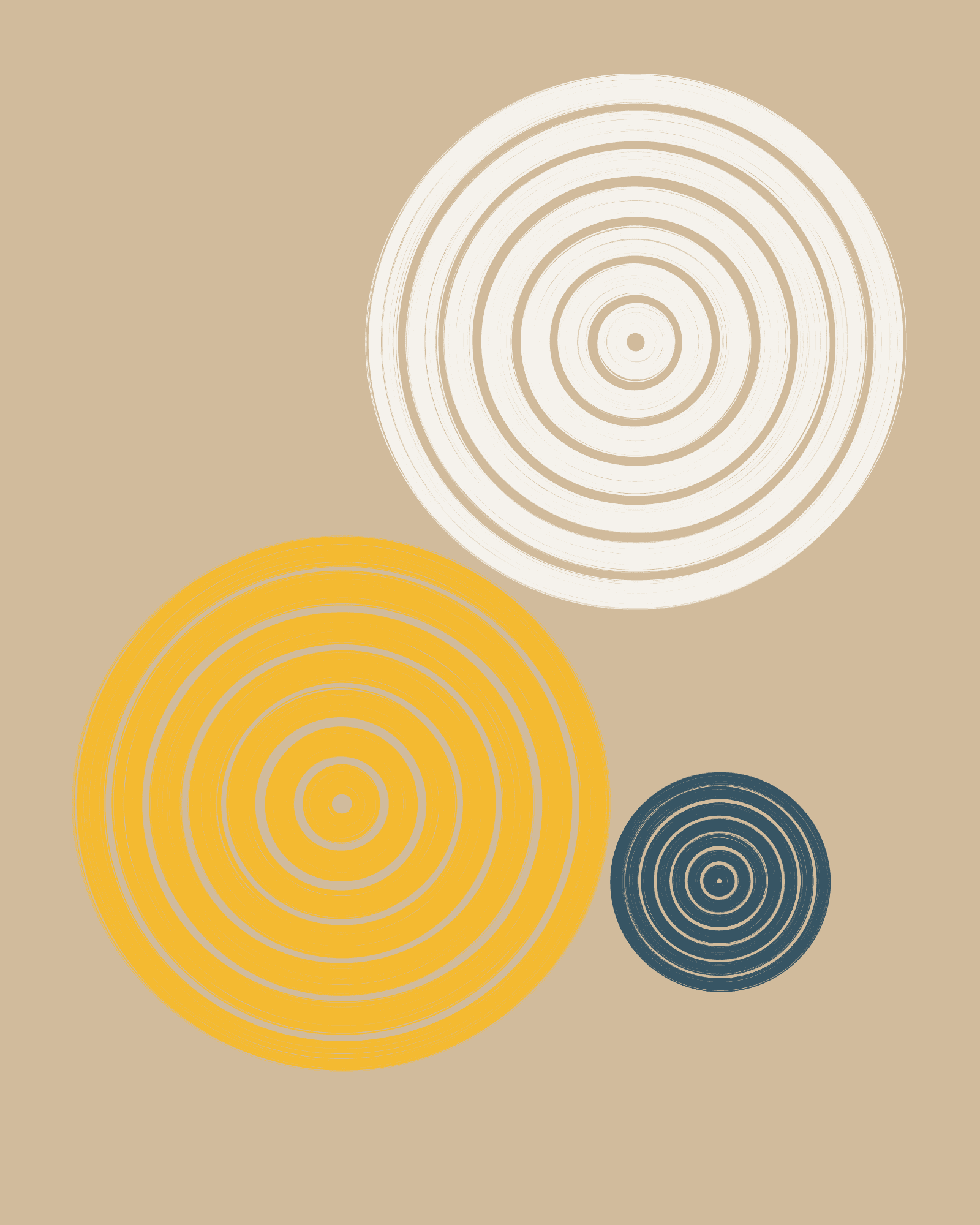
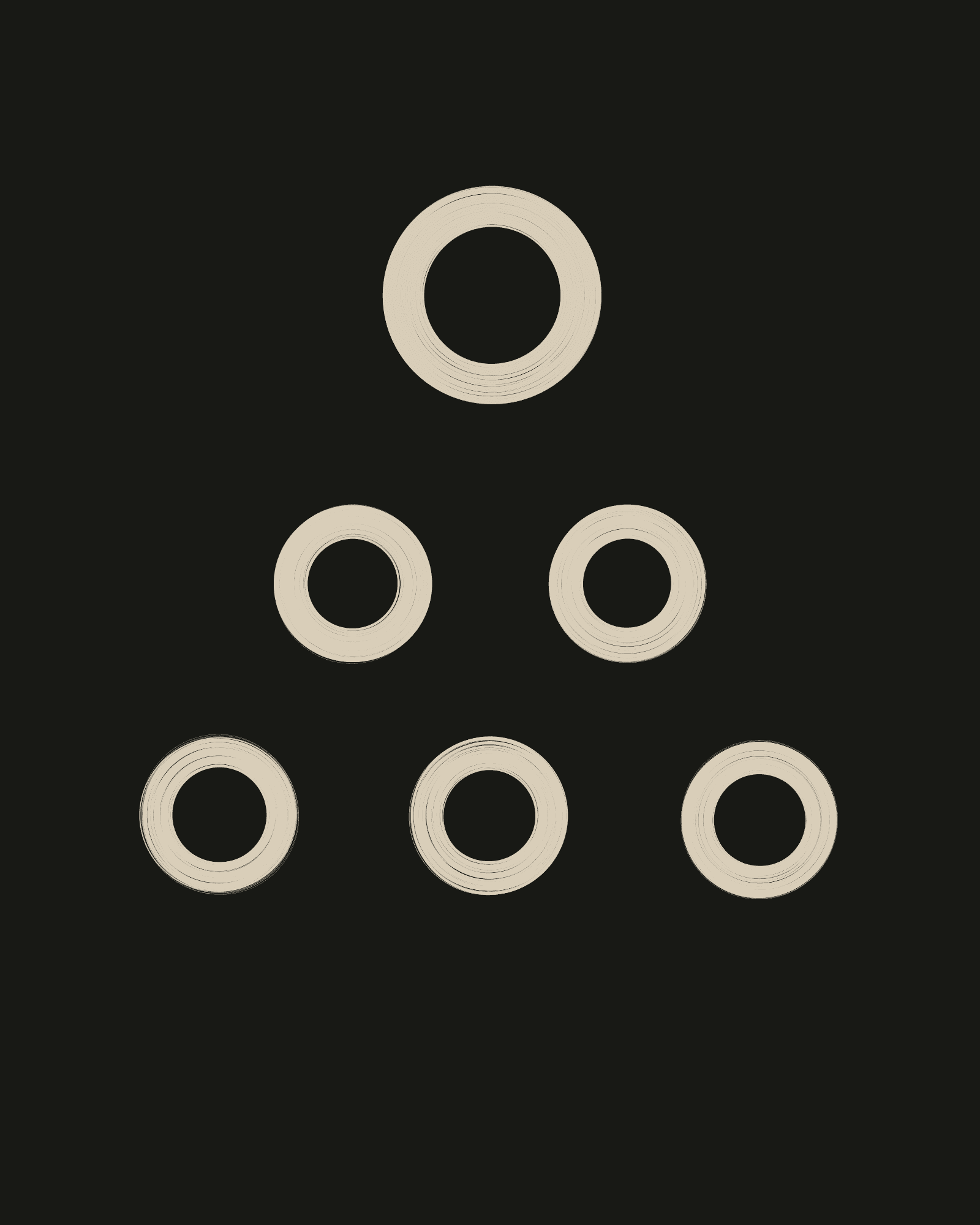
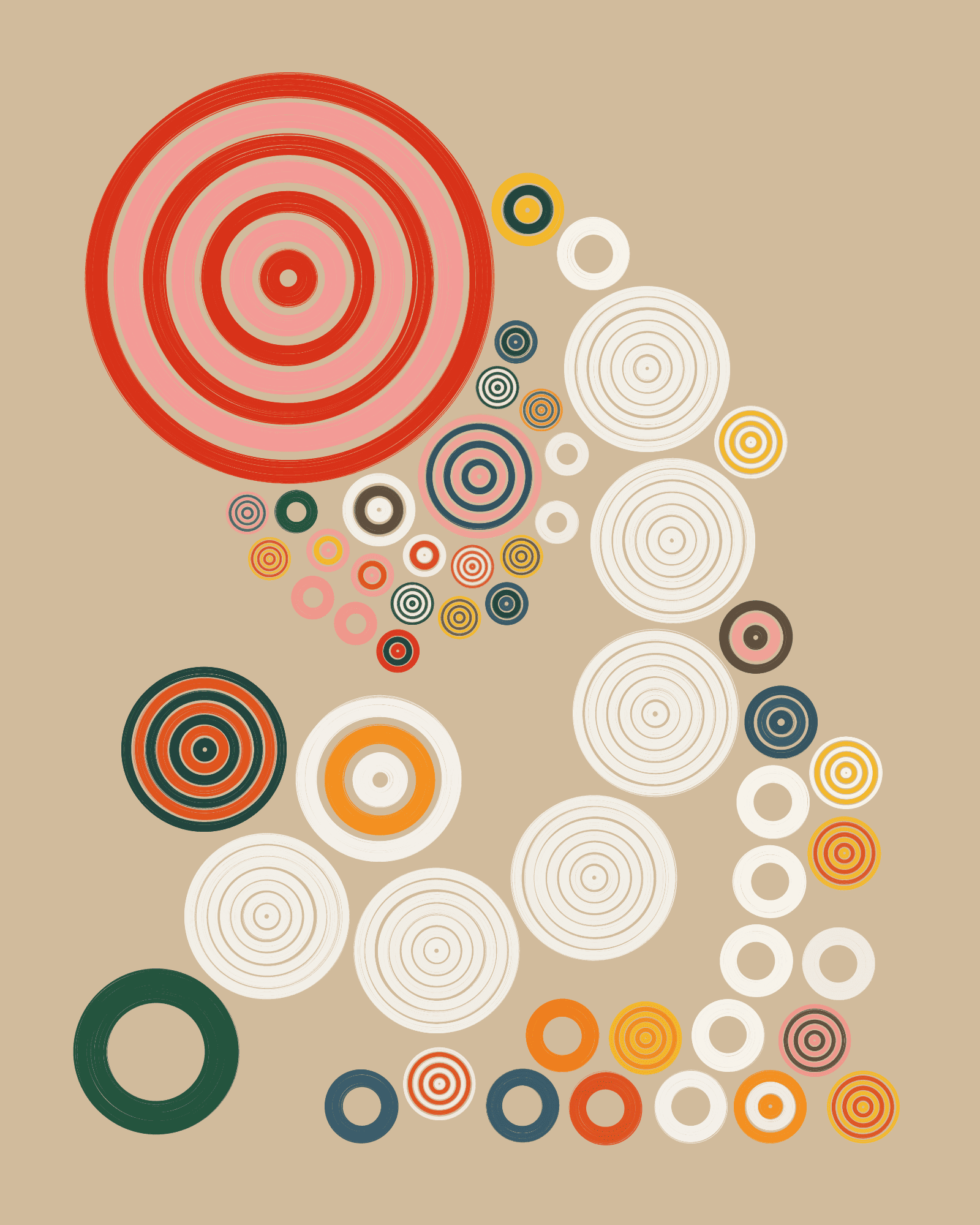
Geometric
When Formation groups compound—especially with Diagonal or Random Linear directions and Small rings—they can invade nearby areas and reveal potential Geometric shapes. No turbulence helps maintain a regular arrangement of the rings. The initial area of a group is typically the densest, with lines of rings crossing the area in structured patterns. The extending portion of a group, follows a linear direction and forms a prismatic shape with diagonal lines running side by side.
As these groups interact, shapes like squares, rectangles, triangles, rhomboids, and even more complex forms can emerge—created through the interplay of density, directionality, and varying ring colors.

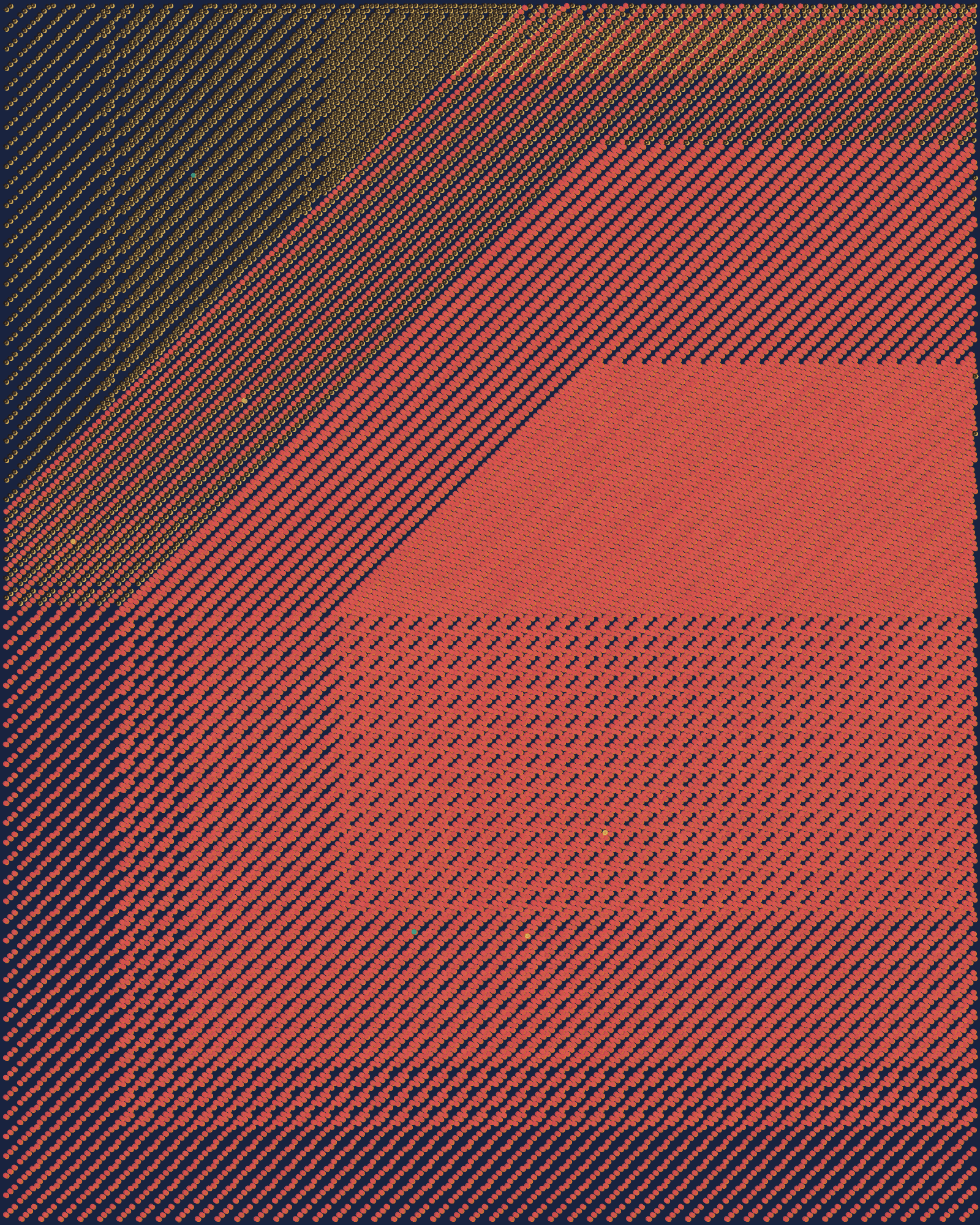

Widespread Splatter
In most QQL seeds we can find at least an odd splatter ring or two. Very occasionally, Widespread Splatter appears painting the canvas in an explosion-like effect. When rings are Small and Dense, the results are obvious. And, even more obvious if Low color variety helps in having a same-color base of rings for the splatter to stand out.
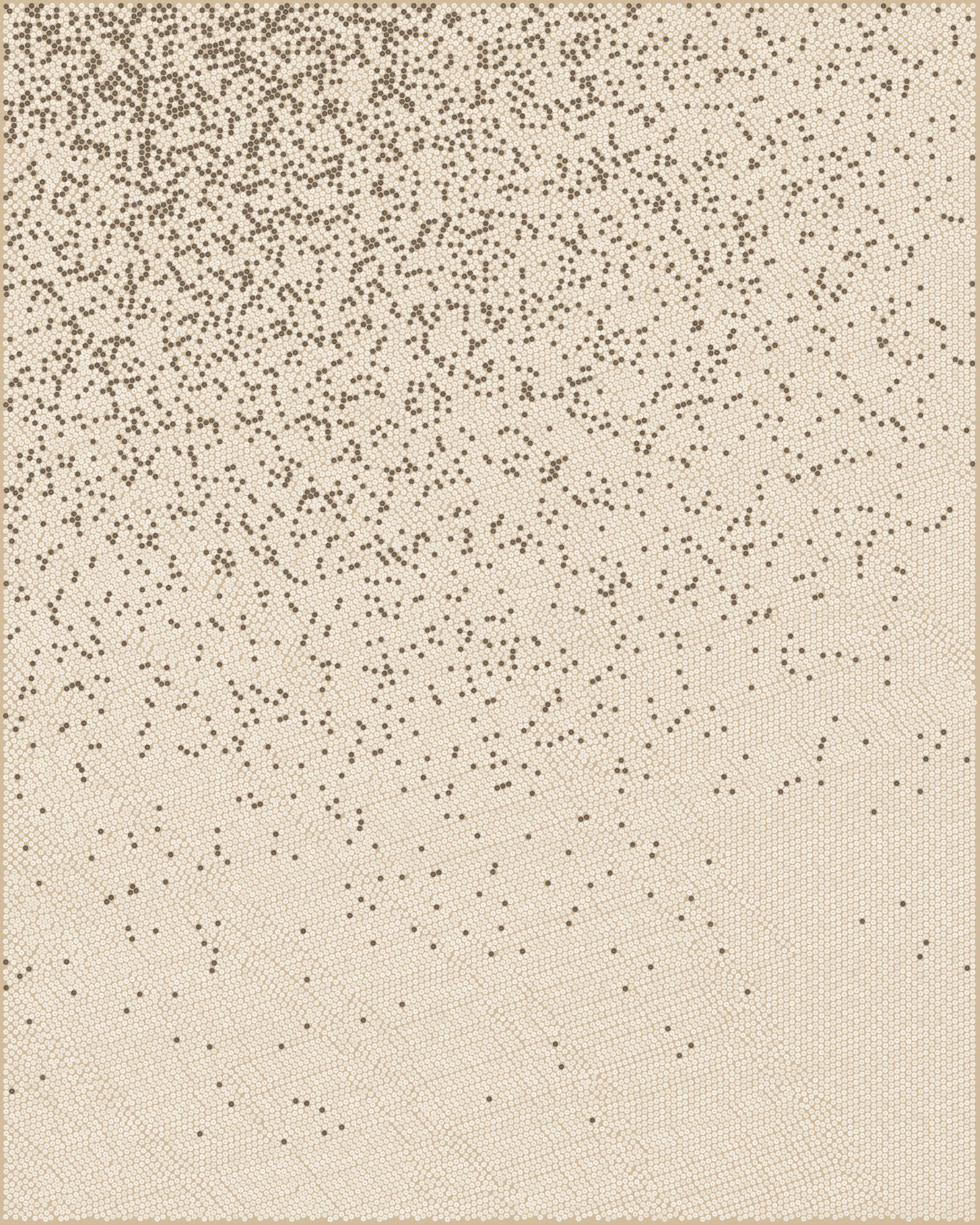
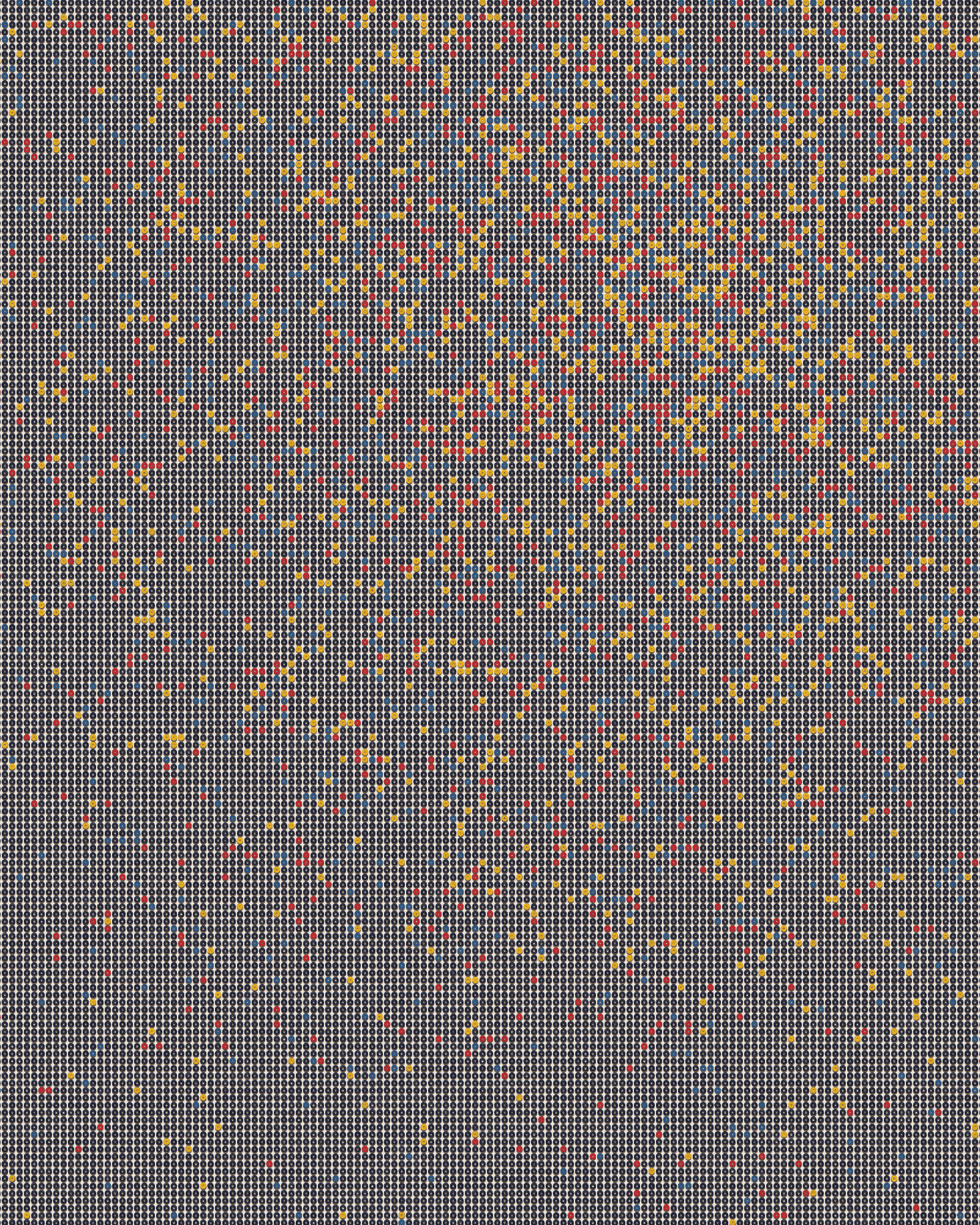

Explosive Rays
Explosive Rays are the subtle result of combining the regularity of a Formation grid with the opposed non-turning direction of a Random Radial flow field. Built as a set of “rays” that seem to slightly break away from the perceived direction of the lines of rings, these compositions create a dynamic tension between order and disorder producing visually striking outputs.
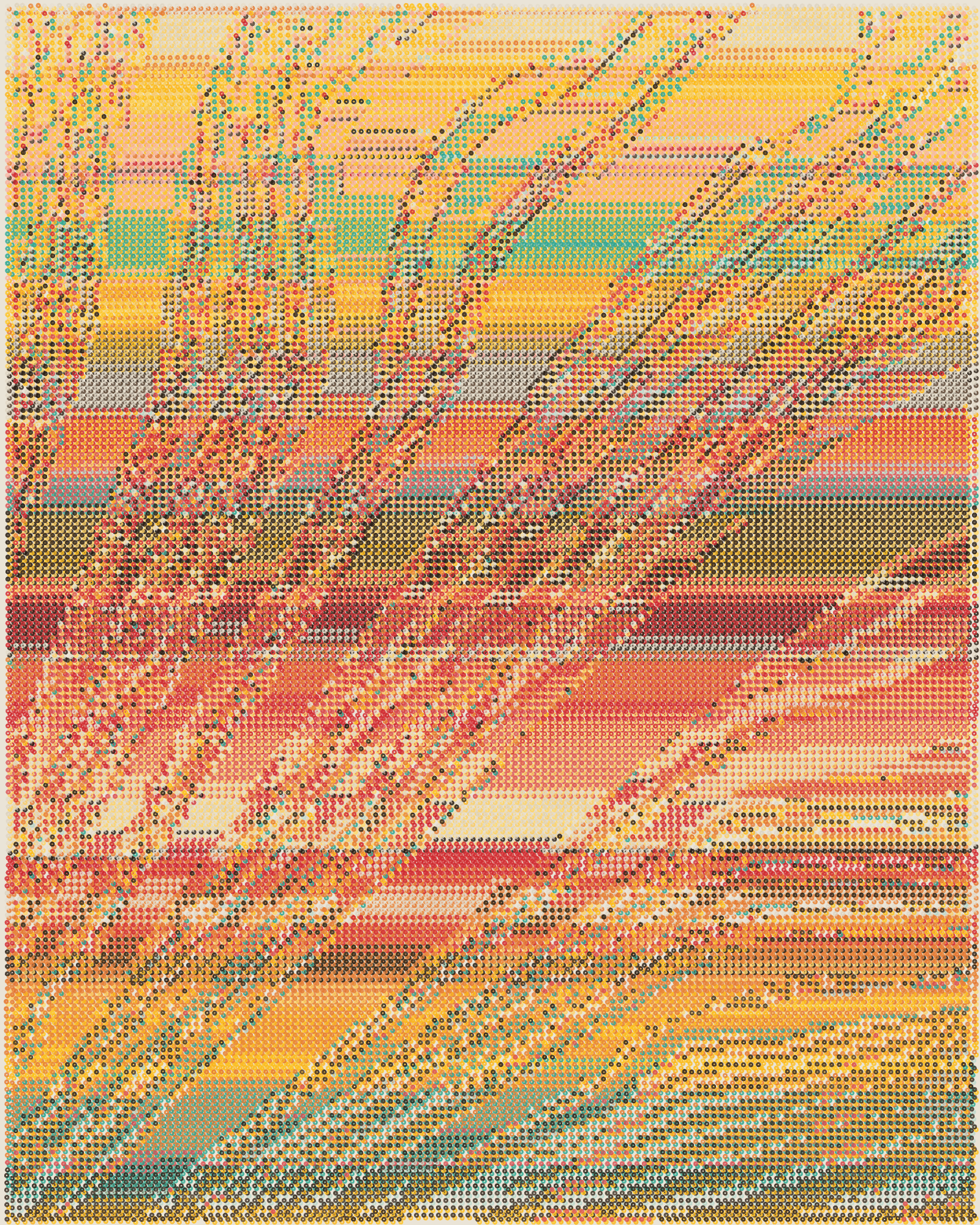

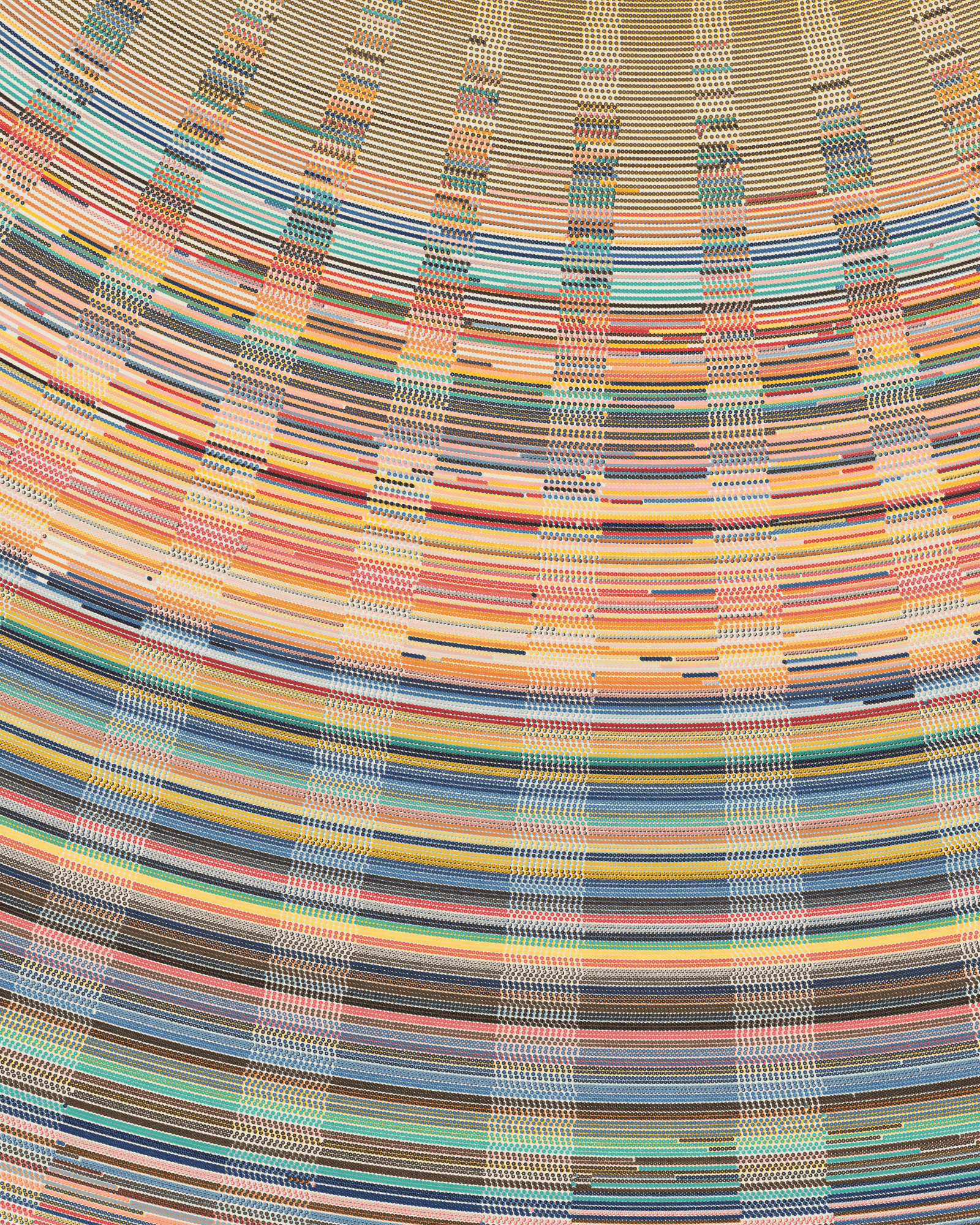
Soft Blurriness
One of the least explored QQL parameters is Thin rings. These create seeds that are lighter, softer and, essentially, have a more muted presence which can require a bit more focus attention to appreciate. However, these rings have an inherent delicate beauty that can be mesmerizing.
When combined with the Stacked and Medium ring parameters, the resulting seeds are not only soft and sophisticated, but also they achieve a Soft Blurriness of disappearing rings.

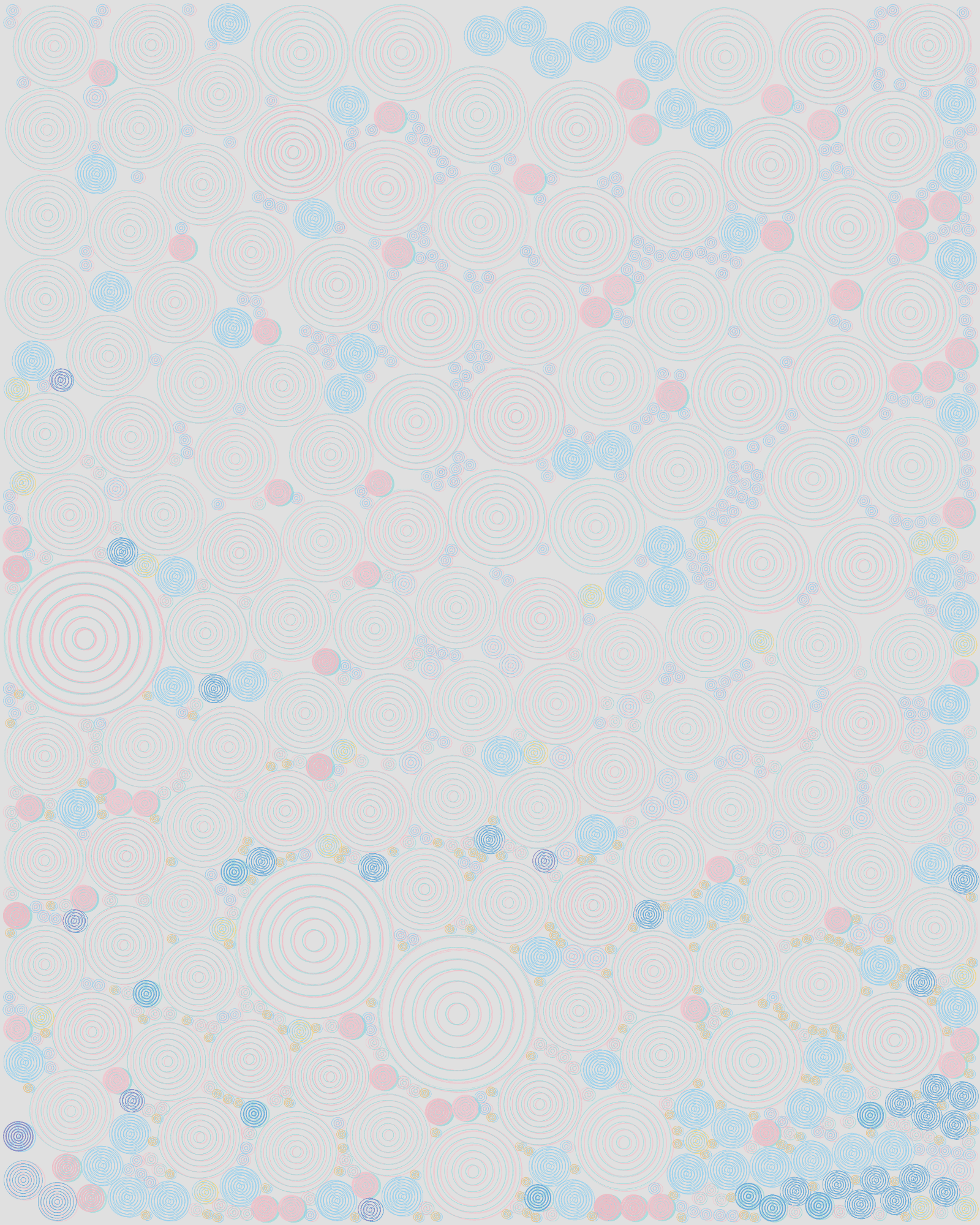
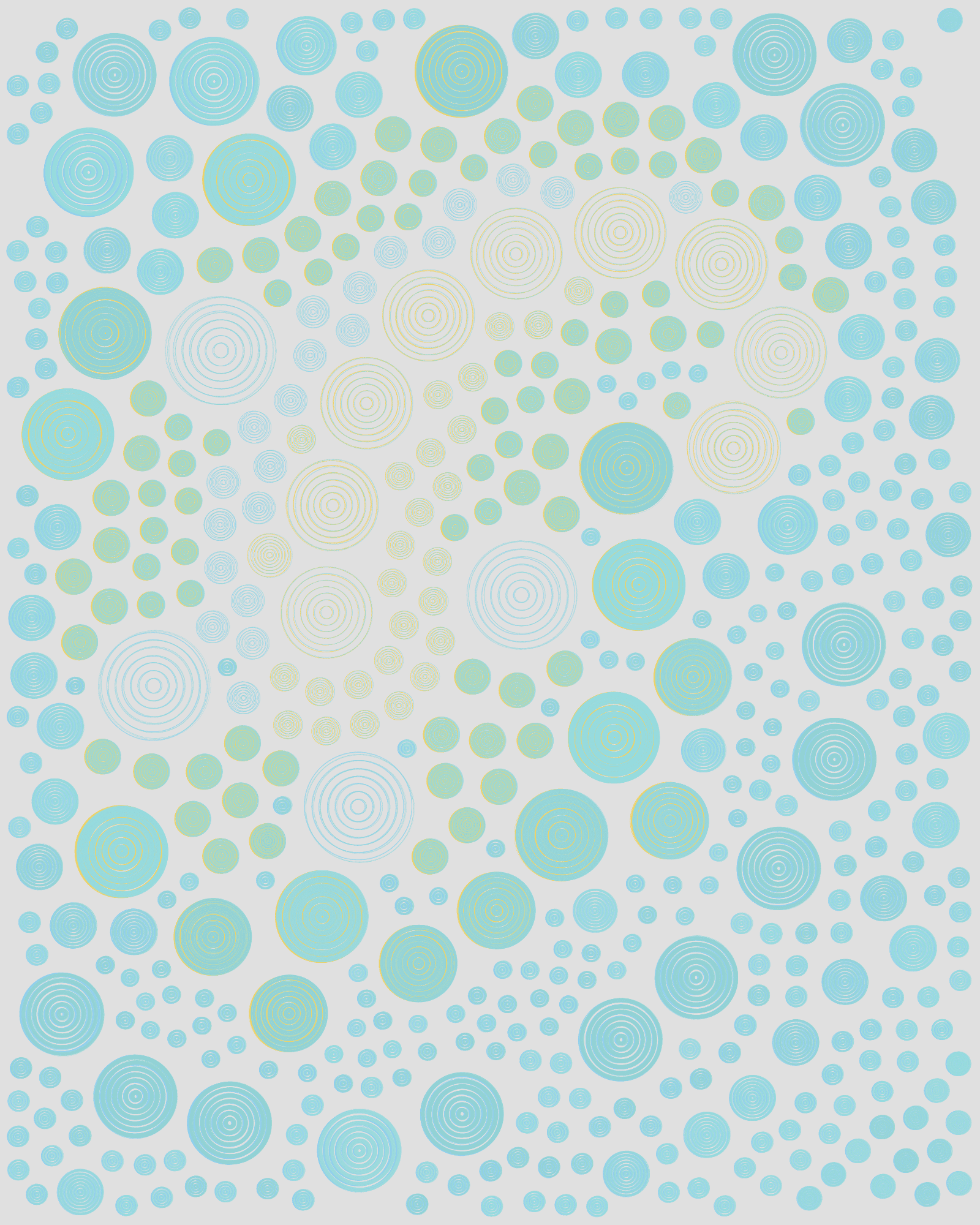
These are definitely not the only styles present in QQL, just a sample of some of the most popular or widespread ones. A QQL style needs to be reproducible for multiple seeds of it to emerge from the algorithm. It also needs to be appreciated and with its traits combination thoroughly explored for at least a few seeds to emerge.
In the first three years of the algorithm’s existence, some parameters have proved more popular than others, perhaps because they can generate “unexpected” emergent properties on a regular basis, or maybe because their aesthetic traits generate more pleasing results.
This means that there is ample space to explore and combine some of the least tried trait combination to find “new” and undiscovered QQL styles.